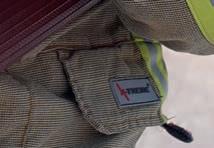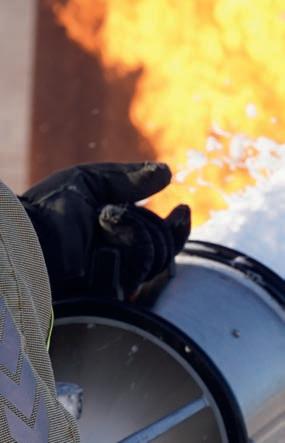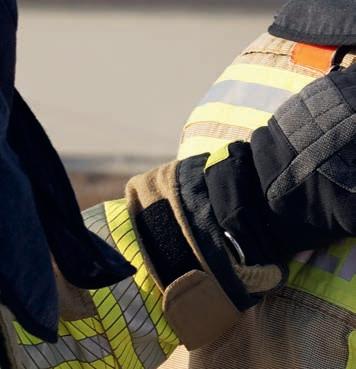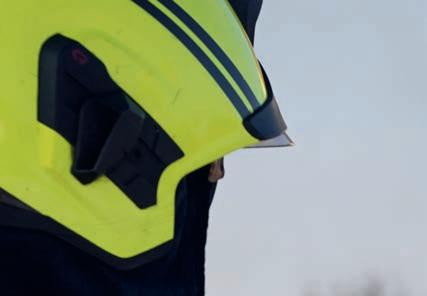

Fomtec
Enviro ARK and Enviro USP
FM approved and UL listed Fluorine Free Foams with sprinklers for hydrocarbon and polar solvent fuel fires.

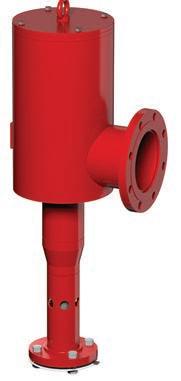
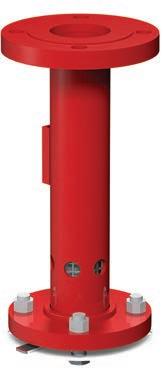
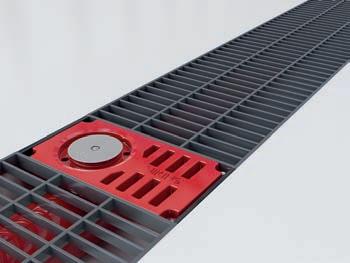
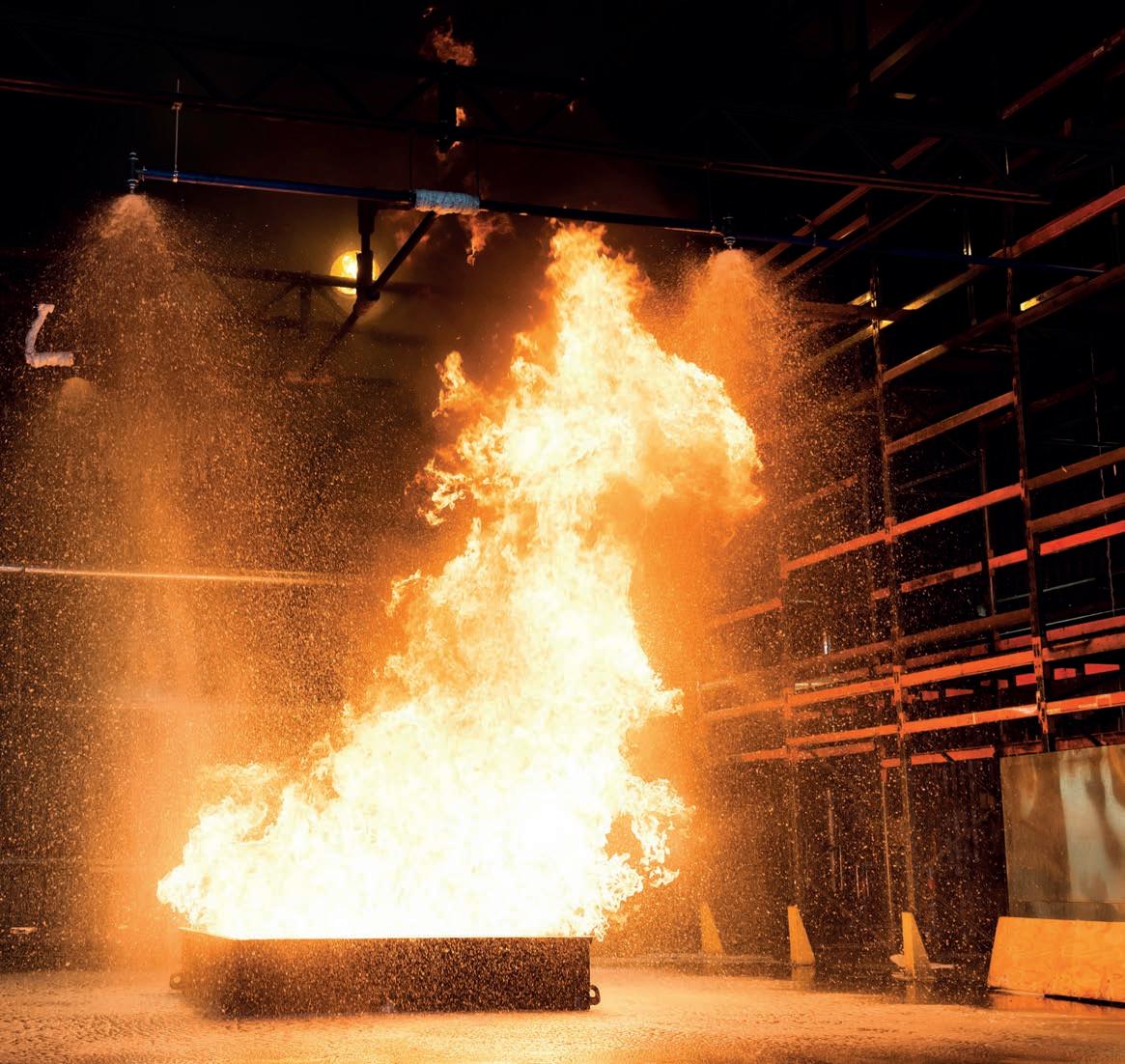
Now with enhanced listings: © Viking S.A.

Fomtec Enviro is a comprehensive range of Fluorine Free Foams for Emergency Response and System applications. Tested and approved high performance alternatives to PFAS based foam agents.

ABOUT JOIFF
JOIFF, the International Organisation for Industrial Emergency Services Management is a not-for-profit organisation dedicated to developing the knowledge, skills and understanding of personnel who work in and/or who are required to provide emergency response to incidents In Industry, primarily High Hazard Industry, with the aim of ensuring That risks in Industry are mitigated and managed safely.
The 4 pillars of JOIFF aiming to support its Membership in preventing and/or mitigating hazardous incidents in Industry are: Shared Learning – improving risk awareness amongst JOIFF Members; Accredited Training – enhancing operational preparedness in emergency response and crisis management; Technical Advisory Group – raising the quality of safety standards in the working environment of High Hazard Industry and Professional Affiliation - networking and access to professionals who have similar challenges in their work through Conferences and other events and the prestige of being a member of a globally recognised organisation of emergency response.
Full Members of JOIFF are organisations which are high hazard industries and/or have nominated personnel as emergency responders/hazard management team members who provide cover to such organisations. Commercial Members of JOIFF are organisations that provide goods and services to organisations in the High Hazard Industry.
JOIFF welcomes enquiries for Membership - please contact the JOIFF Secretariat for more information.
JOIFF CLG is registered in Ireland. Registration number 362542. Address as secretariat.
JOIFF is the registered Business Name of JOIFF CLG.
ABOUT THE CATALYST
The Catalyst is the Official magazine of JOIFF, The International Organisation for Industrial Emergency Services Management. The Catalyst is published Quarterly – in January, April, July & October each year. The JOIFF Catalyst magazine is distributed to all JOIFF members and member organisations worldwide. The Catalyst magazine is published by ENM Media on Behalf of JOIFF.
Publisher & Advertising Sales:
Paul Budgen
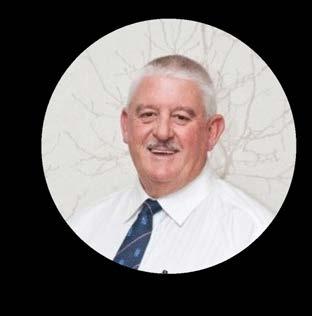
Tel: + 44 (0) 1305 831 768
Email: pbudgen@edicogroup.net
Editorial Coordinator:
Lora Lammiman
Tel: + 44 (0) 1305 831 771
Message from the Chairman
Dear JOIFF Members and Catalyst readers,
May I start off by wishing all JOIFF members and JOIFF friends a very prosperous 2023.
The new year will most definitely bring new challenges for the emergency responders all over the world. To stand up to these challenges will take well trained, competent and well resourced emergency responders and JOIFF will make sure that we contribute to these challenges emergency responders will be facing, by creating a platform for shared learning amongst all our members.
The past year, JOIFF managed to overcome all the obstacles that COVID 19 (that dreaded disease) brought along and I would like to thank all involved who contributed to the webinars, editorials and the JOIFF Africa Conference and Exhibition – shared learning was not affected by Covid 19 and that was because of all your efforts and contributions!
The new year will kick off with Intersec in Dubai, 17/18 January 2023, where JOIFF will be present with great thanks to Bristol Fire and our director Mohanned Awad. This will be followed by a Conference and Exhibition in Rotterdam on 6/7 March 2023, JOIFF attending the Emergency Services Show Birmingham 19th and 29th September and several webinars that will take place – the program will be made available to all very soon. Topics that have been identified are:
•Artificial Intelligence – impact on emergency services
•Cyber Security – impact on emergency services
•Foam – the very topical challenges facing emergency responders with the changeover to new generation foam concentrates.
The JOIFF Board will welcome any proposals on topics that you, our members, would like to add to the list.
May I conclude by extending a word of appreciation to the JOIFF Board Members and the ENM Team under Paul Budgen, for the great service you are rendering to JOIFF and its membership. Without you there will be no JOIFF and I trust that you will keep up with the great work.
Enjoy this edition of the Catalyst and make 2023 the best year ever!
Annual Non – Member
Subscription Rates:
UK & Europe £60:00
Email: lora.lammiman@edicogroup.net
Design & Production
Adam Long
Tel: +44 (0) 1305 831 786
Pine Pienaar FIFireE; FJOIFF; FSAESI
Chairman & Director: JOIFF
Email: pine.pienaar2@outlook.com
Mobile (+27)082 902 1990
Please visit www.joiff.com for more information.
Rest of World: £ 90:00 For more information visit: www.joiff.com
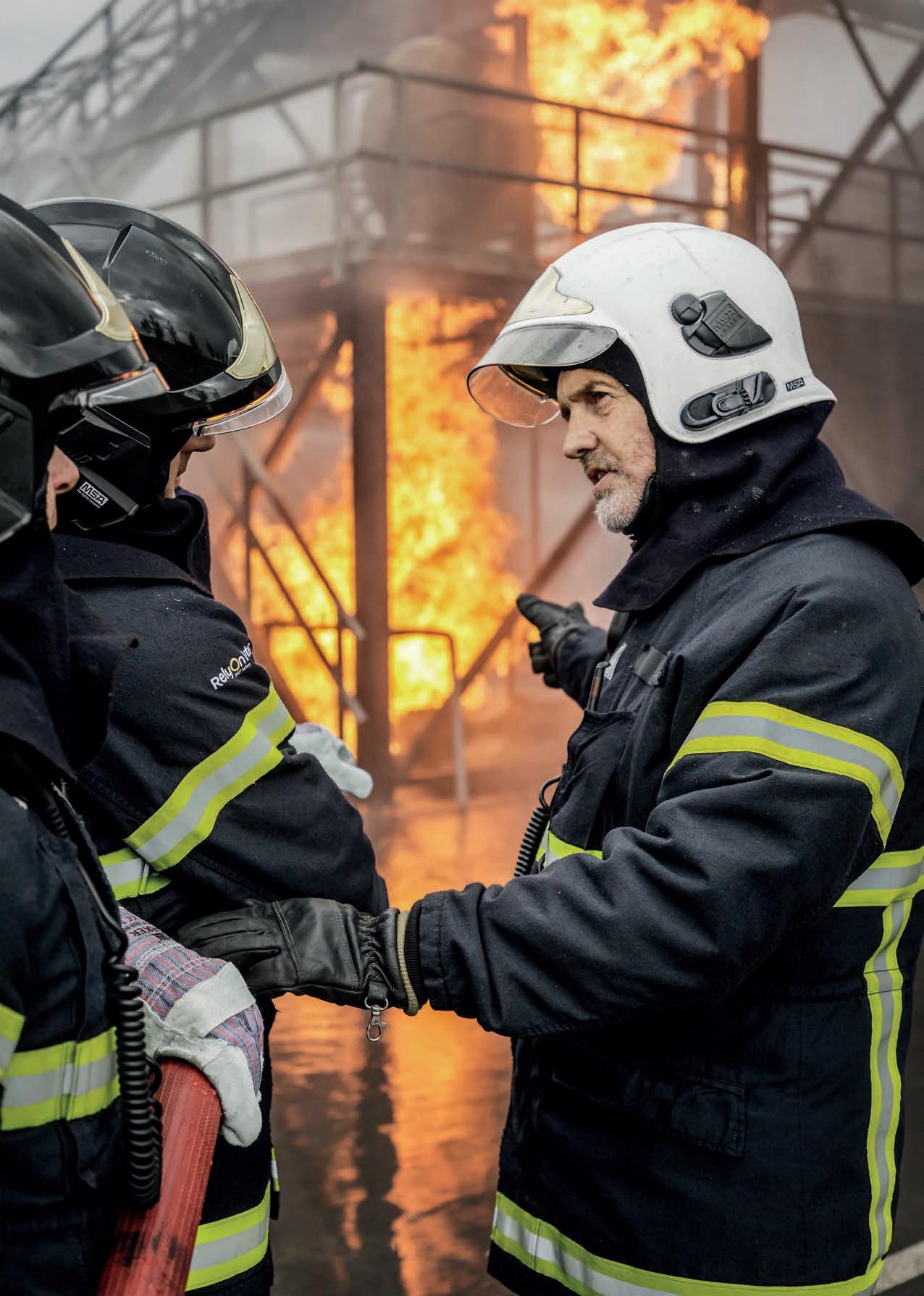





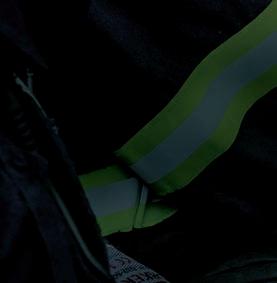
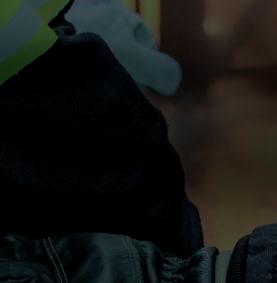
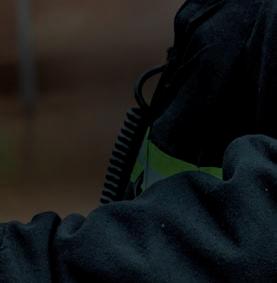
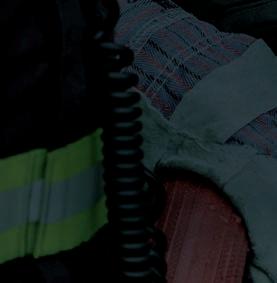














ROLL OF HONOUR
During October, November and December 2022, the following persons were awarded JOIFF qualifications:
JOIFF DIPLOMAMadede Akan Labi Dip.JOIFF United Nations Peacekeeping Operations MONUSCO Democratic Republic of Congo
Maguy Madede Akan Labi is from the Democratic Republic of Congo. She started her career as a nurse working in a hospital and then joined Emergency Crash Rescue in PA and E (Pacific Architects and Engineers, an American defence and government services contractor) at Ndjili Airport in the Democratic Republic of Congo. From 2003 to 2007 she worked as an Emergency Technician and firefighter and in 2007, she joined the United Nations Organization Stabilization Mission in the Democratic Republic of the Congo (MONUSCO), as a firefighter and later moved to the position of Fire Safety Assistant to assist in ensuring the smooth running of Monusco Fire Safety Department.
On being awarded the JOIFF Diploma, Maguy said “I take great pride in my work and strive to maintain the highest possible standards and to motivate those around me. I continue to work on my development and in my current role, within the UN system, I have developed professional bonds with my colleagues and made steps to improve the effectiveness of the personnel, the effectiveness of service and the adoption of standards that can easily by applied across the mission areas. I have been awarded a Meritorious Service Award because of my performance and beyond the call responding to a fire in UNICEF facility, and in evacuation of UN, NGO, and diplomatic community colleagues to safety from affected areas.”
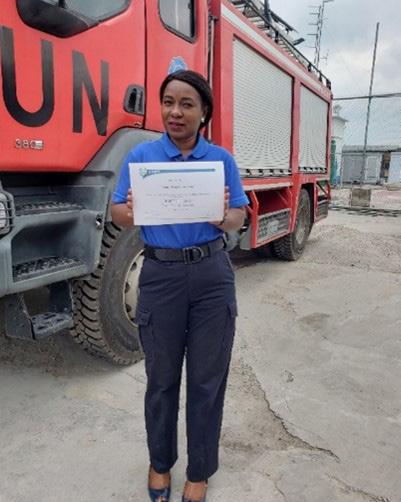
“I am very grateful and could not thank enough JOIFF and my chief and model the late Mr. Jason Sertori, for giving me this opportunity to learn and be a part of JOIFF emergency response training through the JOIFF Diploma programme. This useful training opens my mind and gives me a lot of knowledge on firefighting and rescue. From what I have learnt from the Diploma programme, I really understand that knowledge is the key and we should not stop learning and we should continue developing our knowledge and skills. I will keep his legacy wherever I will go.”

Adam Lattimer Dip.JOIFF Nawah Energy Company, United Arab Emirates.
Adam is currently working as a Fire and Rescue Team Leader within the Nuclear energy industry, for Nawah Energy Company, based within the United Arab Emirates. His previous career experience includes holding the position as Chief Fire Officer for Oman LNG, based within the Sultanate of Oman and Crew Commander for Falck Fire Services UK, based on the Wilton International Chemical site, United Kingdom.
On being awarded the JOIFF Diploma Adam said “I have always been an individual who enjoys continued professional development and what better way to enhance my current skills, knowledge and understanding of the industry than to complete the JOIFF Diploma. The Diploma is an interesting and challenging course, it tests your current knowledge by taking you back to basics, as well as covering advanced aspects of the job. I thoroughly enjoyed working towards my Dip.JOIFF status and would highly recommend JOIFF as a learning provider. After my success in completing the Diploma, I feel my development has significantly improved and I will continue my studies through the JOIFF Technician course”

Renato C. Lopez Dip.JOIFF Security Fire and Safety Officer United Nations Peacekeeping Operations MONUSCO - Security Section
Kinshasa, Onatra MONUSCO Fire Station Republic of Congo
Renato Lopez graduated with a Diploma in Associate Marine Engineering following twenty-six (26) years’ experience and background in Fire Safety Services. In September 1996 he was appointed a firefighter at Subic Bay Metropolitan Authority (SBMA), a former US Naval Base in the Philippines and worked in the Fire Service there for 5 years. In January 2001, Renato was hired by PA and E (Pacific of Architects and Engineers) as a Lead Firefighter in the Department of Emergency Crash and Rescue for Peacekeeping Mission of United Nations Organization in East Timor (UNTAET) where he served for 3 years. In May 2004, he joined the UN Peacekeeping Mission in the Democratic Republic of Congo as a firefighter/driver operator in Kinshasa. In 2014 he worked for SOS international LLC in Camp Tajik, Iraq as a firefighter and in 2015, the United Nations Organization Stabilization Mission (MONUSCO) in the Democratic Republic of the Congo, selected him to work in the position of Security Fire and Safety Officer the position he currently holds. On 15th June 2021, Renato was awarded the Meritorious Service Award by the United Nations Department of Safety and Security, for performance above and beyond the call of duty.
On being awarded the JOIFF Diploma, Renato said “My extensive experiences as a firefighter (both structural and aviation firefighting) with a lot of exposure to all kinds of emergency response that I’ve been faced during those difficult times of chaos and war in the mission, and my strong familiarity with the functions and ability in this field helped to do my duties and responsibility and contributed to shaping my skills”.
“I couldn’t thank enough JOIFF and my chief mentor and inspiration, the late Mr. Jason Sertori for giving me a chance to be part of JOIFF emergency response training through the JOIFF Diploma programme. This training gave me broad knowledge on industrial and high hazardous chemicals in emergency response. I will not stop developing my knowledge and skills in the fire service and continue this legacy at MONUSCO fire unit.”
Poloko Molahloe Dip.JOFF
ADNOC Onshore/ Proworks
Abu Dhabi
United Arab Emirates
On being awarded the JOIFF Diploma, Poloko said ‘’It is an incredible emotion to be finally able to use Dip.Joiff on my career profile. I Joined the Fire Service 4 years ago and it has been a great ride. Currently I am with ADNOC Onshore in the United Arab Emirates. The JOIFF e-Learning Diploma programme enhanced my knowledge and fully equipped my abilities to respond to emergencies. The JOIFF Diploma e-Learning program is flexible as I managed my studies and day jobs at the same time. All the units are well established and accessible anytime. I am looking forward to participating in Technician Level e-Learning programme soon.’’

Matthias Steinfort

ADCDA - Industrial
Al Ain
United Arab Emirates
Matthias started his career as a firefighter in Germany in 2006 and he specialized over the years in the field of HazMat/CBRN analytics as well as Health & Safety. After serving in various roles within the fire and rescue service in the district of Cologne, he took the opportunity to enhance is personal career in Abu Dhabi, United Arab Emirates, where he serves as Watch Manager and Instructor with ADCDA Industrial - Fire & Rescue.

On being awarded the JOIFF Diploma, Matthias said “The JOIFF diploma was a great way for me to review and refresh my present knowledge as well as further my knowledge in Industrial emergency response.”
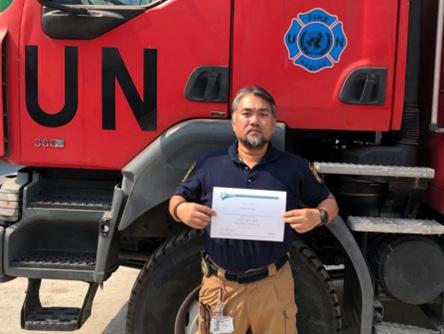
Tony Sivills Tech.JOIFF Cleveland, United Kingdom
Tony Sivills successfully completed the JOIFF Technician programme having already successfully completed the JOIFF Diploma programme. On being awarded Tech.JOIFF, Tony said “Enrolling onto the JOIFF Technician programme was important to me as I felt that it validated the experience that I was gaining working within the Industrial emergency response teams in the north-east of England and further supported my commitment to self-development and improving my knowledge to make me a more well-rounded Fire Engineer/Officer. Whilst completing the JOIFF Technician programme I have been studying and am currently in my final year towards MEng (Hons) Fire Engineering, completing Fire Safety qualifications and working as a Fire Engineer and on call firefighter”.
“The JOIFF Technician programme itself is varied, with seven modules covering Fire Engineering Science, Fireground Operations, Fire Service equipment, Fixed Installations, Building Construction, Process Industry and Fire Safety. Many of these modules worked hand in hand with other qualifications that I have been undertaking, with the performance criteria providing a guided learning pathway to validate the knowledge and experience that I have gained. The module that was a particular challenge was Unit 6 Process Industry, however this gave me a structured approach to researching the basic operations within the process industry; I completed this module with a mixture of previous knowledge from responding to incidents on petro-chemical sites, working as a Fire Engineer developing incident specific emergency response plans and from carrying out further research and reading. Prior to completing the JOIFF Technician programme I completed the JOIFF Responding to Emergencies Diploma, UK Level 3 NVQs ‘Operations in the Community’ and ‘Watch Management’ and conducted several JOIFF accredited practical training courses, including the JOIFF Team Leaders certification and firefighting refresher courses.
GRADUATE OF JOIFF
Max Davidson Grad.JOIFF Unity Fire and Safety Services LLC Muscat Sultanate of Oman
In May 1988, Max started his career in emergency response as a firefighter in Grampian Fire and Rescue Service, Scotland. From 2002 he was a Fire instructor in RGIT Training Centre in Montrose Scotland and in 2005, he was appointed team leader of a new department, tasked to develop validated courses from the Offshore Petroleum Industry Training Organization (OPITO). In 2008 he was appointed Operations Manager in Qatar International Training Centre and in 2010 he was appointed Training Manager for Total Safety M.E. Bahrain, where he was responsible for setting up a base for the Company including a firefighting School, a Lifeboat training Facility, a Training Centre a Service Centre for SCBA and fire extinguishers and all the services that Total Safety offered. He then served in various capacities with a number of Companies in the Middle East and Asia dealing with Oil and Gas Training Market both Offshore and Onshore.

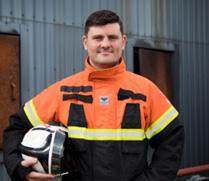
Max is currently Chief Fire Officer for Unity Fire & Safety at SERO Project at Sohar Port (SIPC) Oman. On being awarded Grad.JOIFF, Max said “I am basically speechless and humbled to receive this very great privilege. I have done what l can in various roles to promote JOIFF but I never thought it would culminate in me being personally recognised. This award will only make me double down and further promote JOIFF as the Industrial Fire Training standard.”

Ken Hamon Grad.JOIFF was awarded the JOIFF Diploma in 2014 whilst working with the emergency response team in Dove Energy, Yemen. This year, Ken Hamon completed 48 years in the Oil and Gas Industry and during 44 of those years he was involved with emergency response teams starting in 1978 when he volunteered to become an emergency response team member in Shell UK. Ken has moved through the ranks throughout his career from Fire Team Member through Fire Team Leader to his present role of Incident Commander for an offshore production installation. He was assessed as competent in his most recent assessment for Controlling Emergencies in January 2021.

In 2009, Ken was appointed Operations Manager in Dove Energy, Yemen where he became very much involved with the emergency response resource in the Company. In his own words, Ken explains “Whilst employed as Operations Manager for Dove Energy Limited based in Yemen I was called upon to manage a major incident involving an explosion of a diesel tanker which subsequently expanded to a vegetation fire of the immediate surrounding area within a major hydrocarbon processing facility. It quickly became apparent that my local emergency response team where woefully under-prepared, ill-disciplined and lacked any kind of formal training together with very poor equipment. After a number of hours, we managed to stabilize the emergency and extinguish all fires and it was from this point that I decided to improve the Emergency Response capability available to us. This was the beginning of my association with JOIFF whose guidance assisted me in helping to construct an accredited fire training facility and seek the help of JOIFF accredited Emergency Response Training providers”.
On being awarded Grad.JOIFF, Ken said ““It is an honour to be even considered for the Graduate of JOIFF Award. To actually achieve the award is something I’m very proud of, thank you. I will endeavour to do my utmost to promote the JOIFF ethos and uphold the organisations values wherever I go.”

The Directors of JOIFF extend congratulations to all those in the JOIFF Roll of Honour.
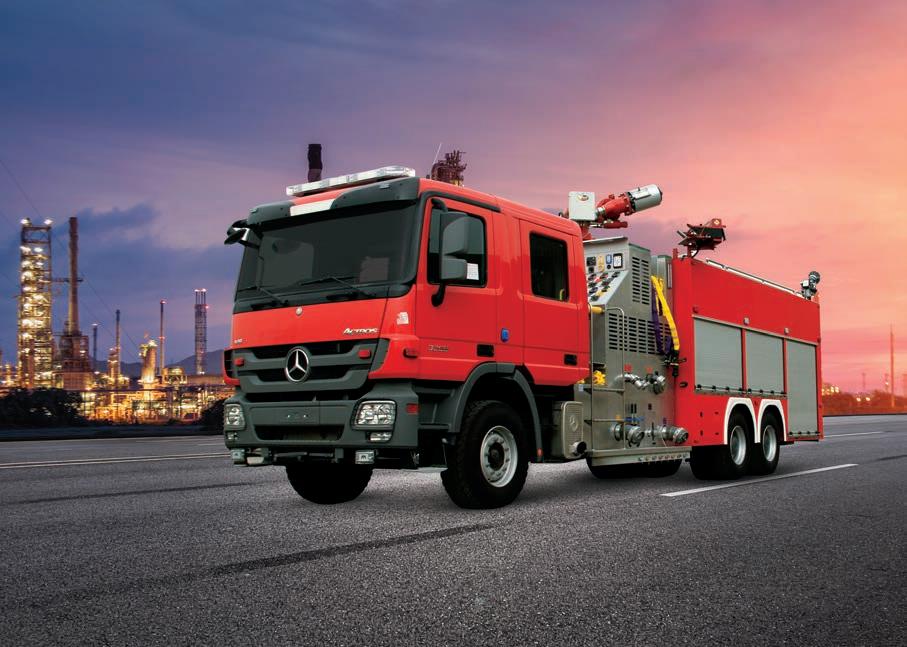
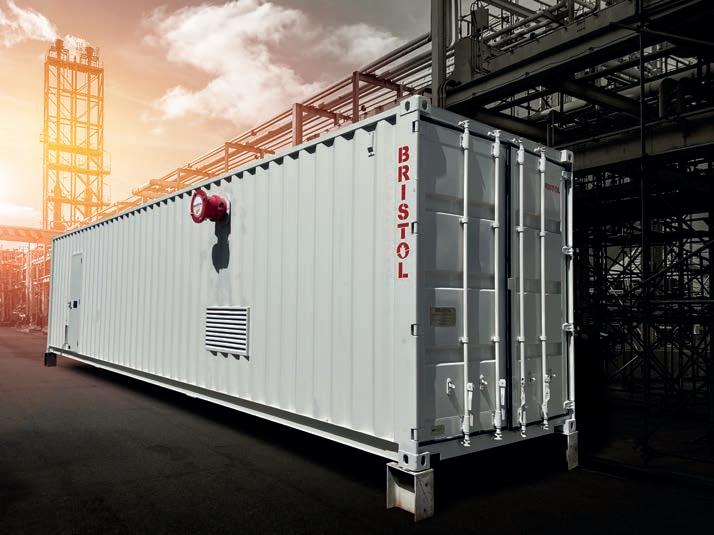
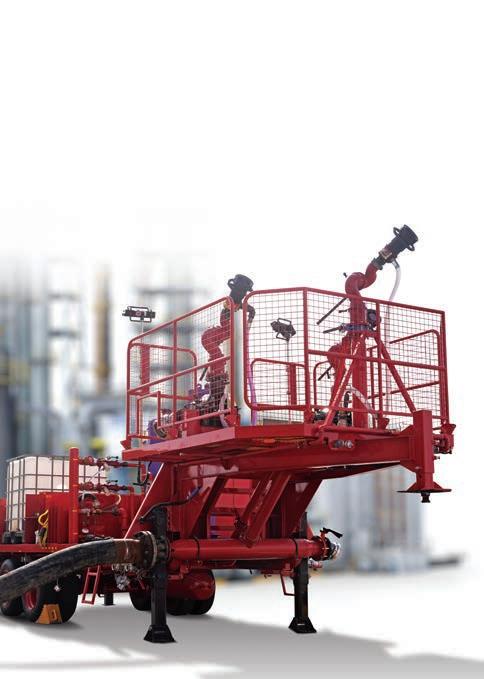
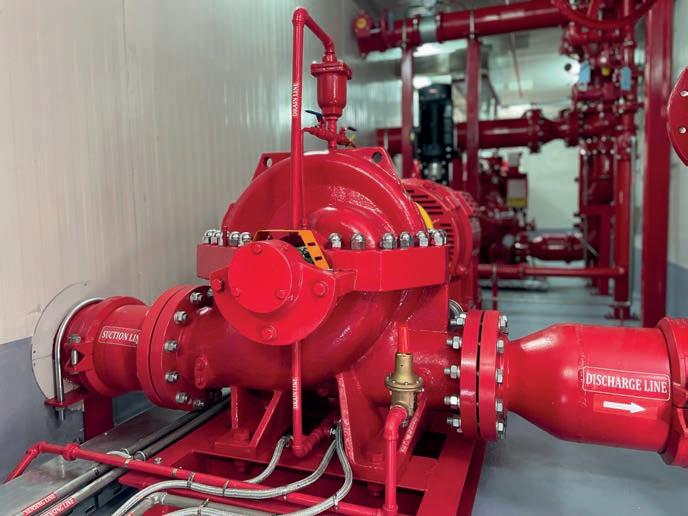
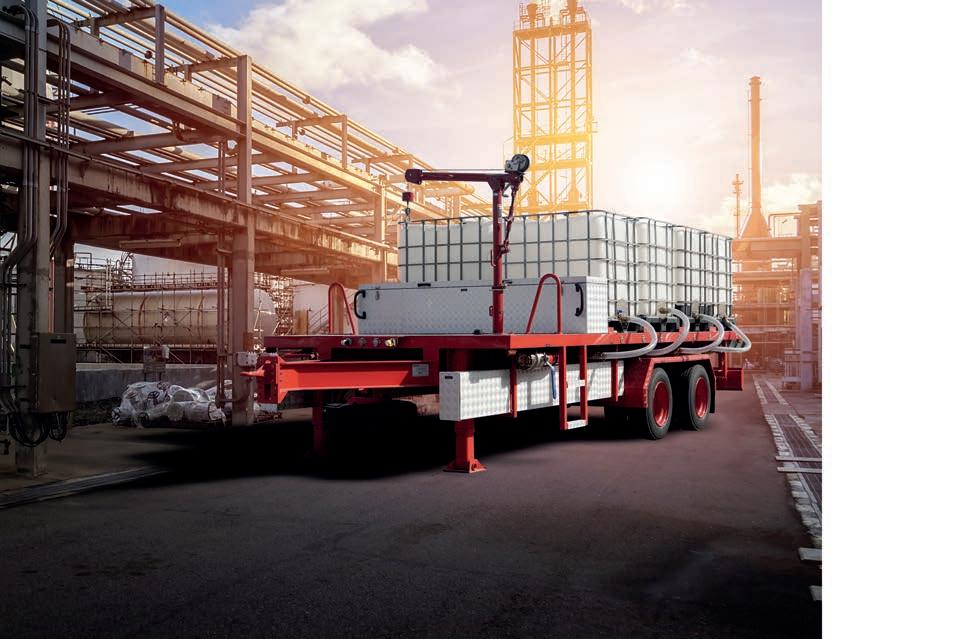
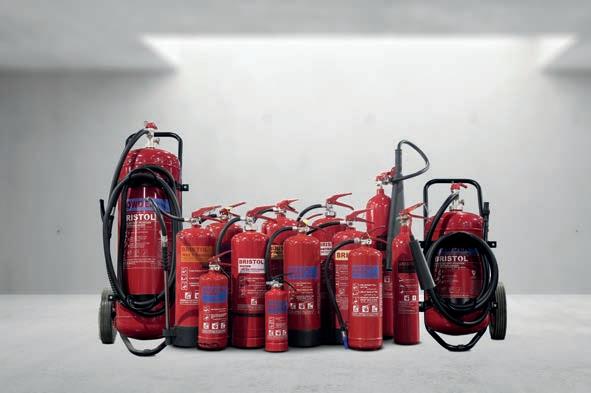
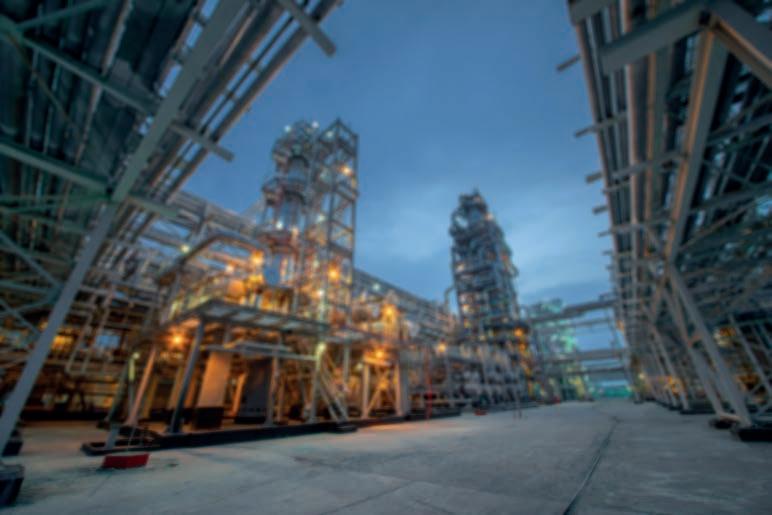

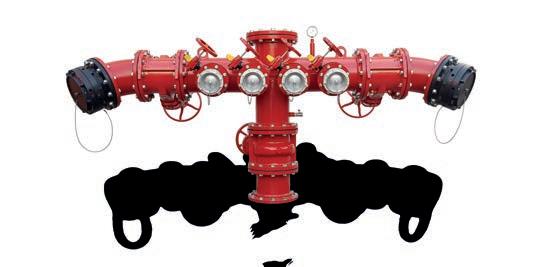
JOIFF NEWS
JOIFF South Africa Conference
The JOIFF Africa Conference took place at the Emperors Palace Conference Centre in Johannesburg, South Africa on 14th and 15th November 2022 and was attended by municipal and industrial and petrochemical leaders and representatives. The Conference was supported by the platinum sponsor, Advanced Group of Companies, South Africa, and by several other sponsors who displayed their products and services in the networking hall.
JOIFF Chairman, Pine Pienaar hosted the event and throughout the Conference, he introduced the Speakers and provided background information on JOIFF and its membership benefits.
The Conference presentations were in 4 sessions. The first session was entitled “Disaster management during large scale incidents” and included presentations from Dr Natalia Flores-Quiros, Stellenbosch University, “Understanding evacuation modelling and human behaviour”, Colin Deiner, Western Cape Disaster Management, “Flooding in Kwa-Zulu Natal – Operation Chariot” and Ian Scher, Rescue South Africa “Large Scale Disaster Rescue”. Session 2, entitled “Foam Technology” included presentations by Dr. Niall Ramsden
“Lastfire Update”, Frank Preiss “The Importance of Accurate Foam Proportioning and how to achieve it”, Dean Roux, Fixed versus Mobile, Shared Learnings” and Ian Ross, “Managing PFAS: Pragmatic Solutions to a Serious Problem”.
At the end of Day 1 the Platinum Sponsor invited all attendees and sponsors to a reception of networking and a buffet meal.
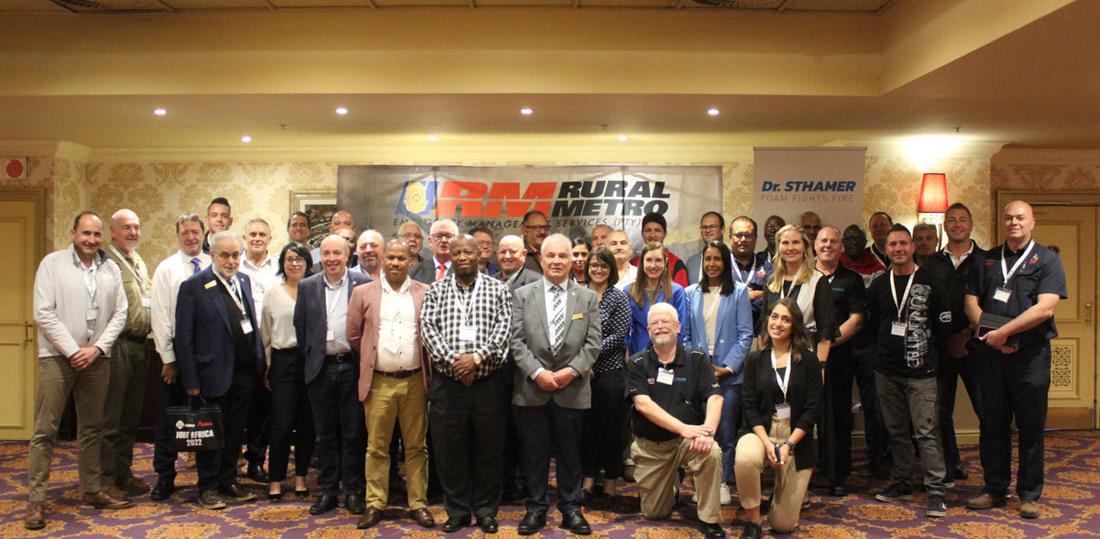
Session 3, entitled “Managing Emergency Responders Wellness” included presentations from Dr Rina Steynberg “Total wellness of emergency responders”, Mike Perry of Africa Reptile and Venom “Identification, safe handling and treatment in event of snake bite incidents by emergency responders” and Dr Nigel Blumire, representing The International Association of Fire Services, “The Hydrogen economy and its future challenges for responders”. Session 4, entitled “General Topis, included presentations by Dr Richard Walls, Stellenbosch University “Structural Fire Engineering for Industrial Buildings”, André Tomlinson, Bristol Fire, “Refinery to terminal conversion, toolbox adaptations for emergency management services” and Chris Gilbert, Rural Metro, “Protecting Essential Infrastructure: the Fire Service Challenge”.
The presentations from the JOIFF South Africa Conference 2022 are now accessible by members in the Members Area of the
JOIFF Director Mohanned Awad, B.E.Sc, B.Sc, Chief Business Officer, Concorde-Corodex Group gave a presentation on JOIFF at Oman Fire, Safety and Security Event in October. The presentation was very well received by a large audience.
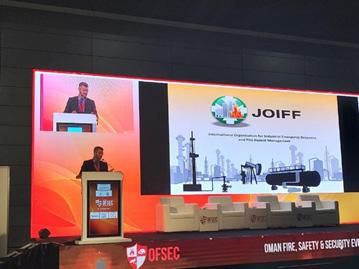 JOIFF Chairman Pine Pienaar closed the Conference and wished all a safe trip home.
JOIFF website.
JOIFF Chairman Pine Pienaar closed the Conference and wished all a safe trip home.
JOIFF website.
JOIFF Guideline published in the Croatian language

In November 2020, a JOIFF Working Group published “JOIFF Guideline on Emergency Response to incidents involving vehicles powered by Alternative Fuels (including Hybrid vehicles).” JOIFF member in Croatia Dr. Alexander Regent translated this Guideline into the Croatian language and the Croatian Firefighters Association felt that as the detail presented was so important that the Guideline should be printed in book form and made
available to the Croatian Fire Services. The Croatian language publication of the Guideline was published at the end of September 2022.
JOIFF is honoured to be associated with the Croatian Firefighters Association.
NEW MEMBERS
During October, November December 2022, the JOIFF Board of Directors were pleased to welcome the following new Members.
Emergency Response Driver Training Ltd (ERDT) United Kingdom, represented by Stephen Milton, MD/Head of Operations and Rick Kenworthy, Training Manager. ERDT Ltd is a UK Skills for Justice Awards and Future Qualifications approved training body and a member of The Royal Society for the Prevention of Accidents (RoSPA). They have delivered training to over 138 Emergency Services in over 14 countries, including some of the largest Industrial Fire Services in the World.
The ERDT Industrial Fire Service emergency response driving course provides theoretical and 80% practical advanced driving and emergency driver training with an optional Airside unit. The training is written in-line with the UK National Fire Chief Council and emergency response driver framework, NFPA 1002.
FLAIM Systems Pty Ltd. Deakin University Campus, Victoria, Australia, represented by Simon Miller, Chief Executive Officer, Ted O’Brien, Director Customer Experience –UK, Damian Eggleston, Director Customer Experience – ANZ APAC and Evan Wing, VP Sales – Americas. FLAIM is pioneering a safer, repeatable, accessible multi-sensory immersive learning training solution that combines industry standard equipment with and increasing range of virtual reality high risk hazardous
scenarios to enable firefighters to get a deeper learner experience of the hazards they face in real world emergencies. FLAIM’s purpose is to improve individual and organisational risk preparedness capability, through increasing the frequency and variety of training, to reduce injuries and fatalities. training, to reduce injuries and fatalities.
Proconics, Secunda, South Africa, represented by Adriaan Van Wyk, Senior Manager: Technical Safety, Markus Swart, Fire Safety Specialist, Liza Smit, Process Safety Specialist and Thielshad Karriem, Process Safety Specialist.
Proconics, established in 1995, is a proudly South African-based engineering company executing agile multi-discipline projects. Proconics has extensive experience in executing engineering, procurement and construction projects in petrochemical, refining and oil and gas, tank farm and hazardous complex brownfields facilities. Proconics execute projects to improve and extend the life of factories, solving local problems with local talent. Proconic’s project executions range from pure design, up to total engineering, procurement and construction, with 400 people in offices in Secunda, Johannesburg, Vanderbijlpark, Cape Town, Durban, Lephalale, and Jazan, Saudi Arabia.
Rutledge Omni Services Pte. Ltd. (Iraq Branch), Erbil Kurdistan Region of Iraq, represented by Fred Fairbanks, Country Manager, Sarfraz
Khan, Deputy Chief Executive Officer, Country Manager and Adnan Ishaq, Operations and Training Manager. Rutledge Omni Services Pte. Ltd is a Safety Service Provider to the oil and gas industry for 40 years; with their head office located in Singapore, Rutledge operate in many Countries including Thailand, Malaysia, Indonesia, Pakistan, India, Kazakhstan, Iraq and UAE, supporting drilling, production operations on-shore and offshore.
Rutledge Omni Services provides a wide range of products including a range of H2S safety equipment, Gas Detection Systems, Breathing Apparatuses, Breathing Air loop Cascade Systems, Breathing Air Compressors, H2S Analyzers and Removal Solutions and are H2S Specialists. They provide a wide range of courses in safety training including Permit to Work systems, basic firefighting, working at heights etc.
We look forward to the involvement of our new and existing Members in the continuing development of JOIFF.

UNMATCHED EXTINGUISHING CAPACITY


Stay prepared for any industrial firefighting mission with Bronto water & foam towers and super extinguishers. The water capacity is up to 12 000 l/min and all the units can be equipped with advanced foam mixing systems.
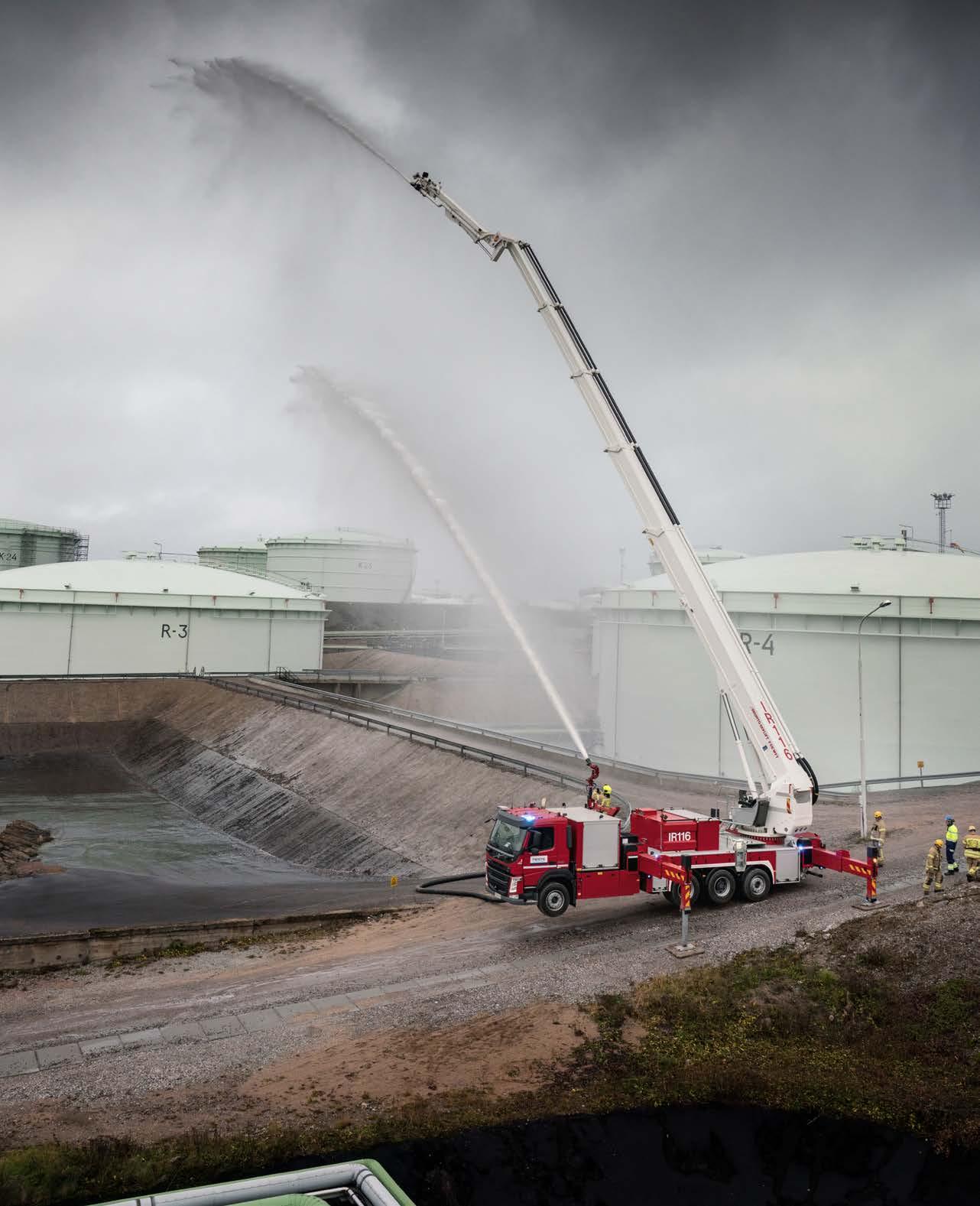
NEWS FROM JOIFF ACCREDITED TRAINING PROVIDERS
About ISTC: Recognized as the Training Provider of the Year
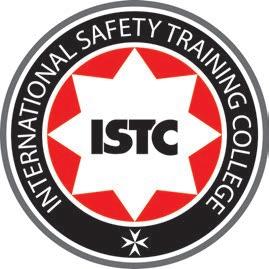
ISTC is a leading provider of consultancy and training services in the fields of fire fighting, emergency response, disaster management, offshore and marine survival, fire safety, health and safety, and first aid. With a team of experienced and highly qualified professionals, we are dedicated to helping our clients improve their preparedness and response capabilities in the face of any crisis.
Our training services are designed to provide individuals and organizations with the knowledge and skills to effectively respond to fire, emergencies, and other disasters. Our courses are tailored to meet our client’s specific needs and goals and are delivered by highly qualified and experienced instructors.
At ISTC, we are committed to excellence in everything we do. We are proud to be a trusted partner to a wide range of clients, helping them to ensure the safety and well-being of their employees, customers, and other stakeholders. So, we always strive to provide the highest quality services and solutions to meet their needs, backed up by the re-assurance of the wide range international accreditations held by ISTC.
The International Safety Training College (ISTC) Malta was approached by a United States NGO to provide training and consultancy services in Syria, specifically firefighting. The NGO was engaged in capacity-building programs in Syria, including rebuilding the fire service, and was looking for a training provider to help address the impact of wildfires on the economy of North-East Syria.
In order to meet the needs of the Syrian firefighters, ISTC developed and delivered a bespoke training program based on international standards. Due to the prevailing circumstances in Syria, the training had to be conducted entirely online, using Microsoft Teams as the primary platform and WhatsApp as a chat group to address any issues that arose. Contingency arrangements using Skype were also tested. The training program was delivered by an ISTC instructor in the UK, with the help of interpreters in Libya and supporting staff in Germany. The program was conducted in Arabic and designed to meet the specific learning styles and needs of the Syrian firefighters, who spoke different
interpreters. To overcome this language barrier, all parties agreed to use High Arabic, a more formal dialect, for the duration of the course. All teaching materials were also provided in Arabic. ISTC also appointed a single point of contact (SPOC) at the company to manage all aspects of the training program, including training design and development, day-to-day coordination of instructors and interpreters, and learner performance management. The SPOC also served as the main point of liaison between ISTC and the lead officer/supervisor(s) in Syria and Berlin.
Despite the language, logistics, and technology challenges, the training program was deemed a success by the client and all key deliverables were met.
About the Excellence in Fire and Emergency Awards:
The Excellence in Fire and Emergency Awards 2022 is an annual event that recognizes individuals and organizations’ outstanding

achievements and contributions in the fire and emergency services field. This prestigious award ceremony is an opportunity to celebrate the bravery, dedication, and professionalism of those who work to
keep our communities safe from fire and other emergencies. The Excellence in Fire and Emergency Awards 2022 features a range of categories to honour the work of firefighters, emergency medical services (EMS) professionals, and other individuals and organizations involved in fire and emergency services.
These categories may include awards for bravery, leadership, innovation, community service, and more. practices in the field. In addition to the awards ceremony, the Excellence in Fire and Emergency Awards 2022 may also feature workshops, seminars, and other educational opportunities for attendees. These events provide an opportunity for professionals in the field to learn about new technologies, techniques, and approaches to fire and emergency services and to network with their peers.
Overall, the Excellence in Fire and Emergency
Awards 2022 is an important event that recognizes and celebrates the vital work of those who serve our communities in the fire and emergency services field. It is a celebration of their bravery, dedication, and professionalism and a chance for these professionals to come together, learn from one another, and share best practices in the field.
Arc Fire Training Services UK issue their 1,000th JOIFF certificate of accreditation
Eric instructing on a course in Yemen

Eric Dempsey MJOIFF, GIFireE, Arc Fire Training Services United Kingdom, applied for membership of JOIFF in March 2010, followed by an application for JOIFF Accreditated training, and on 19th August 2010, Arc Fire awarded their first JOIFF certificates of accreditation to students who had successfully completed a Fire Shift Safety Supervisor Course. In Eric’s returns of JOIFF certificates of accreditation issued by Arc Fire Training for Q4 2022, Eric issued his 1,000th JOIFF Certificate of accreditation.
Eric believes in bringing JOIFF accredited wtraining to Companies who cannot send their emergency response team members on residential courses overseas for a variety of reasons and he has visited many Countries delivering a full programme of courses, seminars and audits in High Hazard/Crisis Management and Emergency Response training. Before the tragic war in Yemen, he planned and constructed a fully operational training academy in an Dove Energy Oil Refinery, including training locals as classroom assistants, maintenance technicians and Fire Ground operators. Eric says that “Some of the places I visited to train teams were so obscure that I had to look up Google Earth to check if they actually existed.”
Eric offers practical courses for emergency responders such as Foundation course, Team Member and Team Leader, Incident Control, Train the Trainer etc. He also offers a 5 Day Course in Crisis Management and Emergency Response for High Hazard sites to train managers. The course includes lessons in good Industry practice, case studies of actual incidents including interactive role playing with desk top exercises with incidents developing on screen.
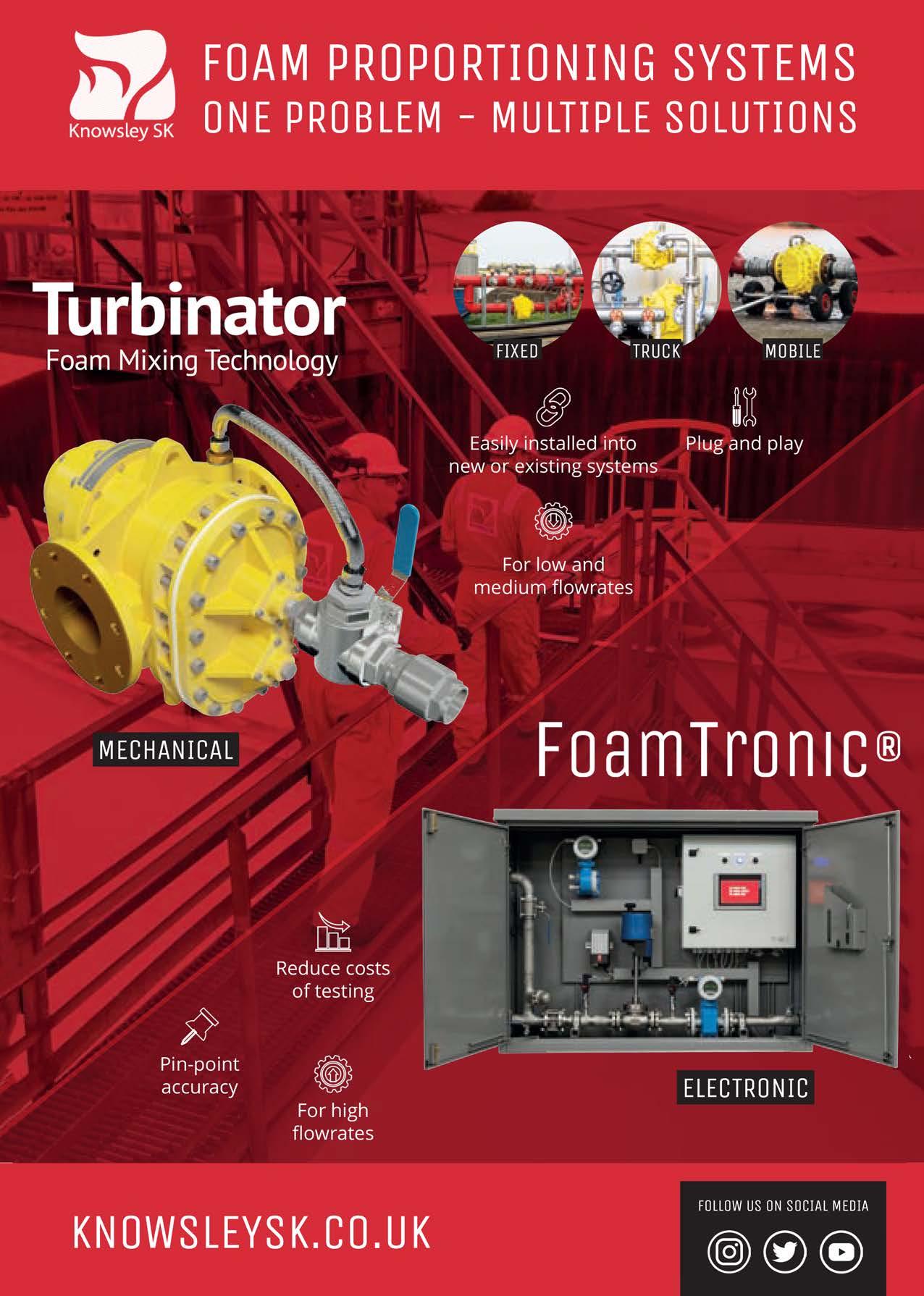
INDUSTRIAL DISASTERS Can They Be Prevented?
The primary aim of JOIFF is Shared Learning to drive inherent safety, continuous risk reduction and safe management of residual risk. JOIFF’s Shared Learning provides information on incidents in high hazard industry that we hope will allow Members to benefit from the misfortunes of some to educate against the same mistakes being repeated by themselves. Supporting this aspect, The Catalyst researches and provides reports on some of the major industrial incidents that have taken place in each quarter of past years in the hope that this may stir people to action so that future incidents and subsequent unnecessary losses can be prevented.
Incidents that occurred during the 4th quarter of a year past.
19th November 1984 SAN JUAN JUANICO IXHUATEPEC LPG DISASTER
Summary:
During the early morning of Monday, 19 November 1984, one of the largest disasters in industrial history occurred in a government owned and operated PEMEX Liquid Petroleum Gas (LPG) storage and distribution centre Terminal at San Juan Ixhuatepec, 20 km north of Mexico City. The disaster started due to a leakage of LPG, a vapour cloud built up and was ignited around 5:40 a.m. and was followed by an
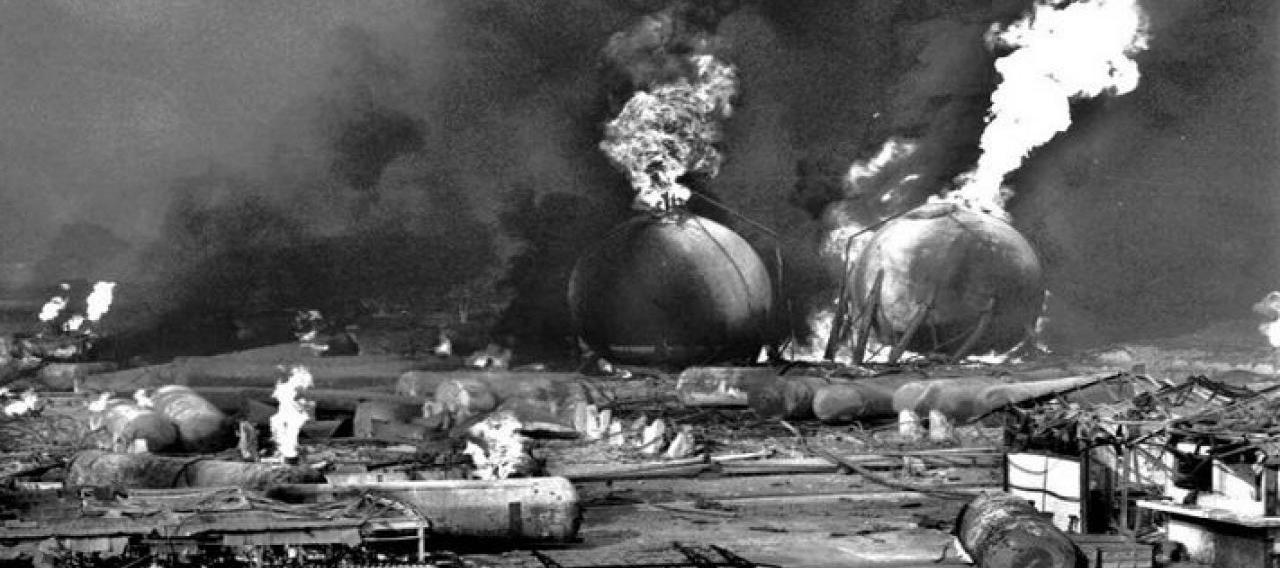
extensive fire at the plant area.
Background:
The inhabitants of San Juan Ixhuatepec numbered about 40,000, and a further 60,000 lived in the hills surrounding the village. The majority were poor country people living in onestorey houses constructed of concrete pillars filled in with bricks and with roofs of iron sheets. The PEMEX LPG storage and distribution centre Terminal consisted of six spherical storage tanks (four with a volume of 1600 m3 and two with a volume of 2400 m3) and 48 horizontal cylindrical bullet tanks of different sizes. At the time of the disaster the storage tanks contained 11,000 m3 of a mixture of propane and butane.
The Incident:
Three refineries supplied the facility with LPG on a daily basis. The plant was being filled from a refinery 400 km away, as on the previous day it had become almost empty. Two large spheres and 48 cylindrical vessels were filled to 90% and 4 smaller spheres to 50% full. An 8-inch pipe between a sphere and a series of cylinders had ruptured. A drop in pressure was noticed in the control room and also at a pipeline pumping station but the operators could not identify the cause of the pressure drop. The release of LPG continued for about 5-10 minutes when the gas cloud, estimated at 200 m x 150 m x 2 m
high, drifted to a flare stack. It ignited, causing violent ground shock. A number of ground fires occurred.
About fifteen minutes after the initial release the first Boiling Liquid Expanding Vapour Explosion (BLEVE) occurred. For the next hour and a half there followed a series of BLEVEs as the LPG vessels violently exploded and the LPG rained down setting fire to the surfaces covered in the liquid. Two of the explosions were registered with an intensity of 0.5 on the Richter scale. Unburned and burning gas entered the houses south of the plant area and set fire to everything. Blast waves from the explosions not only destroyed a number of houses but also shifted several cylindrical tanks from their supports and added more gas to the fire. The smaller spheres and some of the cylinders exploded and fragments and even whole cylinders weighing around 30 tons, were scattered over distances ranging from a few metres to up to 1200 metres. Smaller explosions continued at the plant until the morning of the next day as more and more gas tanks were consumed by flames.
The Casualties:
Between 500 and 600 people were killed and as many as 7,000 others suffered severe burns, 200,000 people were evacuated, and the terminal was destroyed. Most of the injuries and fatalities were in the surrounding community
The Cause:
The actual cause of the accident could not be definitively established because of the destruction of the facilities and absence of witness reports but it was known that:
• Some storage tanks in the facility may have been overfilled;
• There was inadequate spacing of tanks;
• Housekeeping was poor;
• Many of the safety devices, including fire water spray systems, were inoperative or bypassed;
• A relief valve on an LPG receiving manifold was missing;
• Pessure gages were inaccurate and in poor condition;
• The active/passive fire protection critical systems including insulation thickness, failed;
• The plant had no leak/gas detection system;
• Traffic chaos hindered the arrival of the emergency services;
• The site emergency plan including access of emergency vehicles sites was inadequate.
The Blame:
On 19 November 1984, the LPG disaster in San Juan Ixhuatepec occurred. Two weeks later, on 3rd December 1984, the Bhopal, India tragedy occurred. The magnitude of the Bhopal tragedy caused the Mexico City disaster to be soon forgotten as the media and the industry focus was on Bhopal.
In December 1984, the federal Attorney General’s Office determined that Pemex must take responsibility for the explosions and pay compensation to victims. However, some people claimed that they never received a peso even though they were burned or their homes were damaged by the explosions or ensuing fire.
11th December 2005 BUNCEFIELD OIL STORAGE TERMINAL FIRE
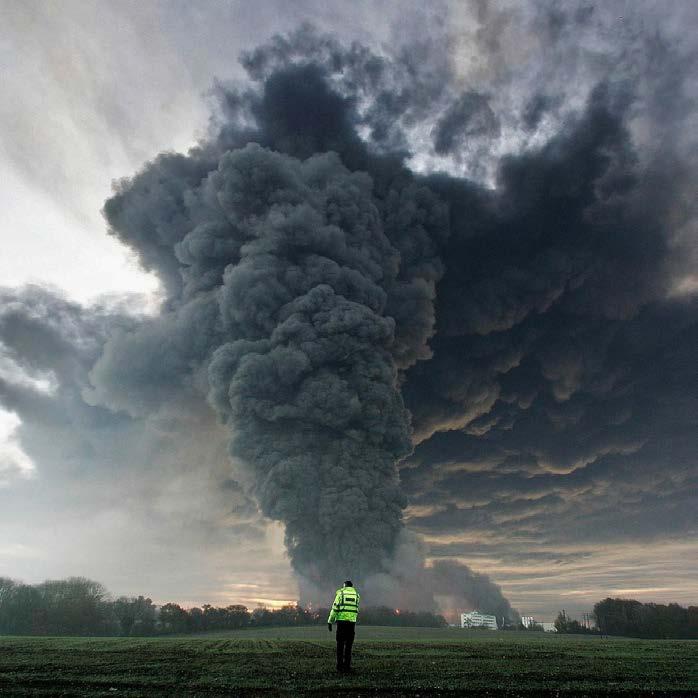
Summary:
The Hertfordshire Oil Storage Limited (HOSL) part of the Buncefield oil storage depot, handled around 2.37 million metric tonnes of oil products a year - mainly petrol, diesel and aviation fuel - delivered by tankers and pipeline. On the night of Saturday 10 December 2005 a tank was filling with petrol and large quantities of petrol overflowed from the top of the tank. A vapour cloud formed which ignited, resulting in multiple explosions and the resulting major fire engulfed 20 large storage tanks. Large clouds of black smoke from the burning fuel spread over southern England and beyond. The
fire burned for 5 days, destroying most of the terminal and damaging surrounding homes and business premises.
Background:
The tank being filled had two forms of level control: a gauge that enabled the employees to monitor the filling operation; and an independent high-level switch (IHLS) which was meant to close down operations automatically if the tank was overfilled. The gauge had stuck intermittently after the tank had been serviced in August 2005, but neither site management nor the contractors who maintained the systems responded effectively to its obvious unreliability. A padlock was needed to retain the IHLS check lever in a working position, but the switch supplier did not communicate this critical point to the installer and maintenance contractor or the site operator. Because of this lack of understanding, the padlock was not fitted.
The Incident:
The gauge stuck, the IHLS was inoperable and there was therefore no means to alert the control room staff that the tank was filling to dangerous levels. Having failed to contain the overflowing petrol, there was reliance on a
bund retaining wall around the tank (secondary containment) and a system of drains and catchment areas (tertiary containment) to ensure that liquids could not be released to the environment. Both forms of containment failed as they were inadequately designed and maintained. Pollutants from fuel and firefighting liquids leaked from the bund, flowed off site and entered the groundwater.
The tank continued to overflow petrol from the roof of the tank into the bund. The weather was calm which allowed a large vapour cloud to form and eventually there was a massive vapour cloud explosion followed by a fire involving over 20 tanks in 7 separate bunds. The explosion was measured 2.4 on the Richter scale and was the biggest such explosion in the United Kingdom since the 1974 Flixborough disaster (see Catalyst Q3 2022 edition).
Emergency Response:
Firefighting efforts began with the emphasis on containment measures before applying foam. Foam supplies from sites all over the UK were drawn upon. Six high volume pumps were used to extract 25,000 litres (5,499 imp gal) of water per minute – 417 litres (92 imp gal) per second – from a reservoir 1.5 miles (2 km) from the fire, with six more high volume
pumps deployed at various locations to serve as boosters. Thirty-two thousand litres (7,039 imp gal) of fire fighting foam per minute were directed against the fire for just over four hours, after which the pumping rate was reduced and half of the 20 individual fires were reported extinguished.
Early in the emergency, the need for specialist expertise to deal with the event was identified and JOIFF was asked to assist in firefighting efforts. More than 20 emergency responders from 5 JOIFF member organisations in the UK played key roles in the management and extinguishment of the Buncefield fires. Equipment provided by JOIFF members in the efforts in extinguishing the blazes included special vehicles, firefighting hose, monitors, media, communications and gas detection equipment etc.
By midday on 13 December, all but three fires had been extinguished, although the largest tank was still burning. A further fire broke out during the early morning of 14 December. Firefighters were of the view that extinguishing it would leave the risk of petroleum vapour reigniting or exploding, so it would be better to allow the fire, which was well contained, to burn itself out.
On 15th December, ‘Fire all out’ was declared by the Fire Service.
The Casualties:
Because the accident happened early on a Sunday morning when there were very few people in the area, fortunately nobody was killed but over 40 people were injured and there was extensive damage to property. 244 people required medical aid, the majority of those were from the rescue services.
The explosion and fire destroyed most of the fuel storage site as well as industrial and domestic properties off-site, including a major office block.
The economic cost of the accident has been estimated at around GBP Sterling £1 billion.
The Environmental damage:
The black smoke cloud from the fires, which was visible from satellite photographs, drifted at an altitude of around 9,000 feet (2,700 m) and could be seen across much of South East England. By 12th December, it was reported that the smoke cloud had reached northern France and it was expected to arrive in northern Spain by the weekend.
Firefighters applied 68 million litres of water and 786,000 litres of foam concentrate containing perfluorooctane sulphonate (PFOS). About 33 million litres of fire water were recovered after the fire and the rest soaked into the ground, polluting the soil and groundwater.
Some of the tank bunds failed during the fire leading to the release of fuel and fire-fighting foam which caused pollution of the soil and groundwater. Chalk is the major aquifer of southern and eastern England and the chalk aquifer below the Buncefield site was used for drinking water supply. A public water supply borehole 3 kms from the site had to be closed down because of pollution of the groundwater. The polluted groundwater was pumped out through several boreholes and treated to remove fuel and PFOS. This remediation work has continued for many years
The explosion and fire destroyed most of the fuel storage site as well as industrial and domestic properties off-site, including a major office block.
The Causes:
• Failures of design and maintenance in overfill protection systems and liquid containment systems;
• Failures of secondary and tertiary containment;
• Fanagement systems deficient and not properly followed;
• Site staff did not have enough information to properly manage the storage of incoming fuel;
• Operators had failed to assess the large volumes of fuel and fire water that would have to be managed during a major accident;
• Operators did not recognise that tank bunds are safety critical items of equipment;
• Many bunds failed during a prolonged fire because of the presence of pipework penetrations and lack of fire resistant bund joints;
• Operators failed to identify the pathways by which fuel and contaminated fire water could reach sensitive environmental receptors such as rivers and groundwater.
The Blame:
Following criminal proceedings Total UK Limited pleaded guilty to three charges:
• Failing to ensure the safety of its employees so far as was reasonably practicable;
• Failing to ensure the safety of persons not in its employment so far as was reasonably practicable
• Causing pollution of controlled waters
Hertfordshire Oil Storage Limited was found guilty of failing to take all measures necessary
to prevent major accidents and limit their consequences to persons and the environment. Motherwell Control Systems 2003 Limited and TAV Engineering Limited were found guilty of failing to ensure the safety of persons not in its employment so far as was reasonably practicable.
The Lessons Learnt:
• Equipment for use in high-hazard operations should have systems in place to ensure that the equipment is safe so far as is reasonably practicable.
• Designers and suppliers should have adequate knowledge of the environments where their equipment will be used.
• Management has a duty to monitor working pressures on staff and take action to keep workloads to acceptable levels so far as reasonably practicable.
• Simple measures to reduce the consequences of a major fire should be present, e.g. bund joints and pipework penetrations should be sealed with modern waterproof and fire proof sealants and joints should be protected by metal plates.
• Duty holders for high-hazard risks should have formal arrangements that specify the roles of all parties involved to ensure so far as is reasonably practicable that the highest standards are provided for safety critical equipment.
• At the core of managing a major hazard business should be clear and positive process safety leadership with board-level involvement and competence to ensure that major hazard risks are being properly managed.
WHEN WILL THEY EVER LEARN ?
Could any these disasters have been prevented ? What do you think ?
“Organisations have no memory, only people have memory and once they leave the plant, the accident that occurred there is forgotten about.” Trevor Kletz, a prolific author on the topic of chemical engineering safety.
“Those who fail to learn from history are condemned to repeat it.”
Winston Churchill paraphrased the statement by George Santayana, Spanish philosopher
“You are allowed to make mistakes – but not the same mistake again.”
Pine Piennar, JOIFF Chairman.Cancer – The Invisible Risk: What are you taking home?
By Chris Thain - Business Development Manager – Fire & Rescue Services, G3 Systems LtdIt has long been recognised that the smoke and gasses produced in fires are extremely toxic, however recent research has confirmed that the presence of highly carcinogenic Ultra Fine Particulate (UFP) contamination produced from the combustion process also present a serious and devastating health risk to Emergency Responders and just as importantly, to their families at home.
A seminar held on November 22nd 2022 at Cranfield University, organised by John Lord, MD of Simtrainer UK and Alisdair Couper, MD of Terberg DTS, brought more than 140 Fire Officers from services around the UK together with Scientific researchers and Suppliers to discuss Cancer – The Invisible Risk: What are you taking home?
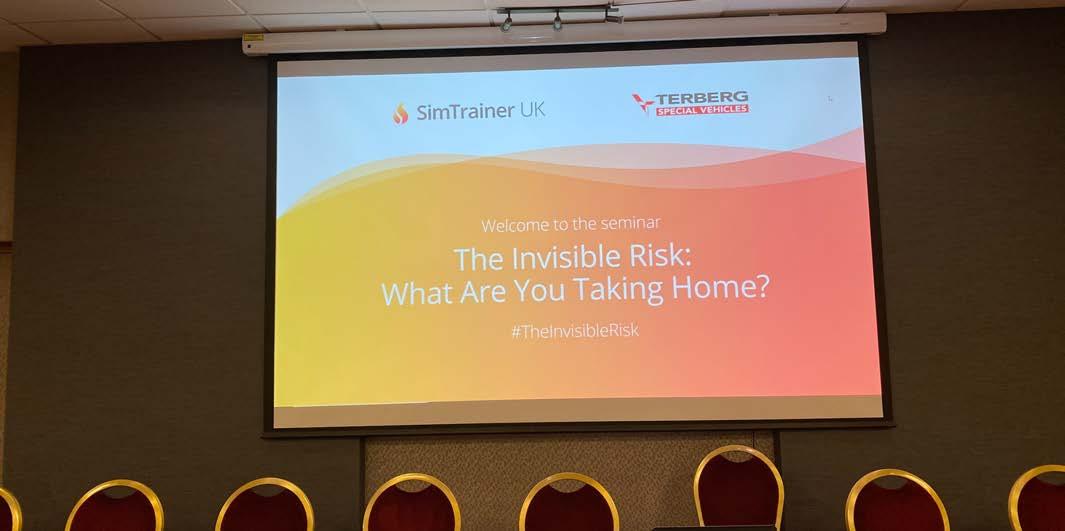
The purpose of the seminar was to spread important knowledge and to raise awareness and understanding among the wider Emergency Response sector, including Aviation Fire & Rescue Services, Industrial Fire Services, Local Authority Fire Services, the Police and Ambulance Services to the risks posed by carcinogenic UFP contamination and to discuss better ways to manage and mitigate this insidious health issue.
Uniting the latest scientific research along with very personal first-hand experiences from retired Fire Officers of dealing with the legacy of cancer caused by their exposure to UFP during the course of their working lives, this hard hitting one-day seminar drove home the message that the incidence of cancer among firefighters is rapidly increasing and that the fire sector must act now to better protect its personnel from this malignant, life-threatening disease.
The key-note presentation was made by Anna Stec, Professor in Fire Chemistry and Toxicology at the University of Lancashire. Professor Stec has worked for 20 years in the field of Fire Chemistry and for the past six years has been researching and reporting upon the carcinogenic properties of fire emissions and their derived toxicology particularly in respect to firefighting. Commissioned by the UK Fire Brigades Union, this independent research seeks to understand the link between firefighters’ occupational exposure to toxic fire effluents, and cancer and other diseases.
The report not only provides evidence of the heightened risk faced by firefighters through their work, but also delivers clear and authoritative guidance to fire and rescue
services across the UK about the measures they can take to minimise firefighters’ exposure to contaminants. The report (Minimising firefighters’ exposure to toxic fire effluents - Interim Best Practice Report) details how firefighters face danger from breathing and ingesting contaminants long after a fire has been extinguished – and how these toxic fire effluents can also be absorbed by the skin.
Ultra-fine Particulate Exposure
Acknowledging that firefighting is by its very nature a highly hazardous occupation, Professor Stec explained that any products of combustion, from the smouldering embers of a wildfire to the exhaust gases from an aircraft jet engine on an airport stand, will emit large quantities of carcinogenic UFP, both in gaseous and particulate forms. Lighter than air, these UFP can travel significant distances from the actual source of combustion, and can deposit or condense in large quantities, particularly on the clothing, equipment and appliances used by firefighters when dealing with an incident. Furthermore, the fire-retardant chemicals used on modern fire kit will ‘gas off’ when subjected to extremely high thermal temperatures, again emitting carcinogenic UFP.
Abby Hannah, a Biomedical Scientist focussing on particulates at Stedfast Barrier Technologies informed the audience that these ‘ultra-fine’ aerosolised particulates are smaller than 0.1 microns and can easily be breathed into the lungs if inadequate or no respiratory protection is being utilised, resulting in the possibility of lung cancers developing.
They can also be ingested with food and drink if hands are not cleaned prior to eating or drinking, resulting in stomach cancers and finally, these particulates are very easily absorbed into exposed skin and then into the bloodstream, if proper barrier protection is not worn or is not decontaminated properly after exposure to combustion, either at an incident or during live fire training. This can lead to skin cancers, brain cancer, leukaemia, testicular cancer, breast cancer, bladder cancer, Non-Hodgkin’s Lymphoma, and many other fatal cancers.
Thorough Scientific Research
Professor Stec and her team at UCLAN have conducted thorough scientific research over the past six years to establish the types, quantity, and dispersion of UFP affecting firefighters in the United Kingdom. Typically consisting of Volatile and Semi-Volatile Organic Compounds (VOC/ SVOC), Polycyclic Aromatic Hydrocarbons (PAH), Particulates, Isocyanates, Halogenated Dioxins, Halogenated Fire Retardants and Synthetic Vitreous Fibres (SVF) among a wide range of carcinogenic and toxic chemicals emitted from the process of combustion, 22 Fire Stations were swabbed for UFP, with over 1000 samples taken from work surfaces, fire kit, appliances and from skin samples, and the results analysed at the University of Lancashire. It was discovered that high quantities of UFP were omni-present in Fire Stations, not only in the appliance bays and fire kit storage areas, but also in the officers offices, around their desks and computer keyboards etc.
Helmets, flash hoods, gloves and fire kit were obviously highly contaminated, as were SCBA and respirator filters. It is highly recommended that BA should not be removed prematurely or donned too late.
It was also worrying that often firefighters or technicians would clean SCBA sets and replace filters back at the Fire Station without wearing RPE when doing so. It was stated that the ‘smell of smoke’ in a Fire Station was indicative of odourless Benzene UFP contamination that was 50% higher than the maximum safe level. If you can smell smoke, you are not safe! Good ventilation is essential in Fire Stations and particularly in any areas where fire kit is stored.
Research from 10,600+ UK firefighters has shown that 84% attended fires without wearing RPE, 82% admitted to eating or drinking while in their PPE (fire kit) and 63% admitted to not washing their hands before doing so. Only 58% changed fully changed their uniform/workwear following attendance at an incident.
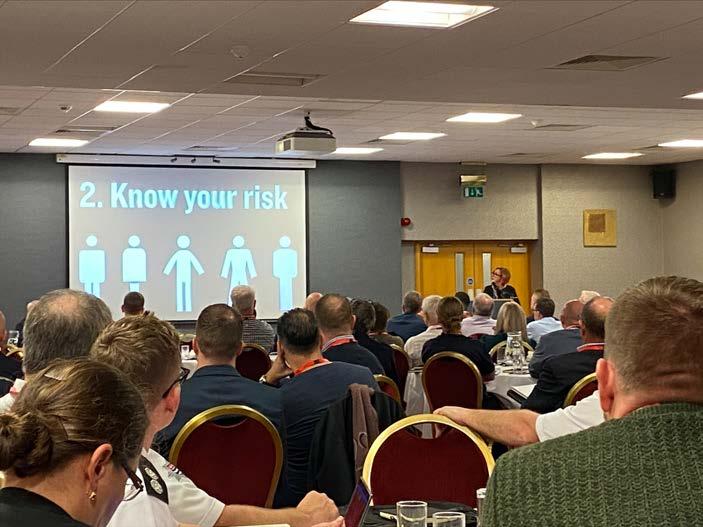
Dirty kit is not a ‘Badge of Honour’
Professor Stec cautioned as to the soot and kit cleaning ‘Badge of Honour’ culture that persists within some fire services. 35% of firefighters surveyed claimed never to have cleaned their fire kit, while 46% of respondents believed their peers did not clean their fire kit. “Dirty kit is not a badge of honour – it has the potential to kill you, maybe not today, perhaps not next week, but in 10, 20 or 30 years from now you may become a victim of cancer, simply because you didn’t clean your fire kit.”
Soberingly, over 4% of serving firefighters who responded to the survey have reported being diagnosed with cancer. This is four times higher than the general population. Over 86% of firefighters in the survey indicated they do not smoke and consume less alcohol than the wider population.
Exposure Prevention
So how can we work to prevent exposure to UFP and to mitigate the risks associated with these carcinogens?
According to the Swedish Civil Contingencies Agency, firefighter’s fire gear is not designed to prevent combustion gas particles from coming
into contact with the body and in the UK, there is currently no requirement for PPE to protect against toxic gases and particulates.
It is therefore essential for firefighters to remove contaminated fire kit as quickly as possible after use and to bag it up in plastic bags, ready for professional decontamination. Dirty fire kit should be stowed in a ‘dirty zone’ on the appliance, not in the crew cabin, which should be designated as a ‘clean zone’.
Efforts should be taken to ensure that dirty fire kit and clothing does not cross-contaminate clean fire kit and clothing. This may mean Fire and Rescue Services investing in additional fire kit and workwear for all firefighting staff.
Fire kit and workwear should be professionally laundered, either on station using washing machines and detergents designed for the purpose or sent to an outsourced OEM/service provider/laundry that can handle UFP contaminated clothing. This will also avoid firefighters taking contaminated clothing home to be laundered, thus exposing their families to this unseen carcinogenic hazard.
It is also strongly advised that FRS encourage all operational personnel to record and monitor their attendance at fire incidents over the course of their career to maintain an ‘Exposure Log’.
Early Cancer Detection Screening
Early detection can have a significant impact on cancer survival rates. Of firefighters diagnosed with cancer, 92% were diagnosed at terminal stage. Only 8% receive an early diagnosis. This is why it is essential for all firefighters to have regular, early health screening.
Preventative health screening programs should be initiated annually for all firefighting staff and firefighters actively encouraged to ensure that their Doctors/GP’s register their occupation on their medical records.
Firefighters should ask their Doctor/GP for a blood test highlighting the common clinical markers for cancer detection. Firefighter Instructors should be tested biannually. It was also emphasised that following a trial in Edmonton, Canada, an effective health screening programme can actually be more cost effective for the employer in the long run as staff medical problems caught early are less costly to the organisation over the longer term.
UFP in the Aviation Sector
A study of the prevalence of UFP’s at Copenhagen Airport (CPH) highlighted the risk of particulate exposure within the airport environment. Levels of UFP from the jet engines of aircraft and exhausts from diesel powered ground handling equipment were reported to be 3 times higher at the CPH apron than within the city centre.
Given the airside locations of most airport fire stations and their proximity to the runway and
or taxiways, it is not surprising that the risk of exposure to UFP and other neurotoxins are high among aviation firefighters as well as other airport ground personnel such as refuelers and baggage handlers.
In addition to the other recommendations in this article, it was strongly suggested that air filtration using HEPA filters should be used on fire station air conditioning equipment and also that aviation fire services should be seeking to replace PFAS containing foams with Fluorine Free Foam as soon as possible.
Alisdair Couper also emphasised that PFAS containing foam stock should not be sold on to other users but should be incinerated to ensure its destruction.
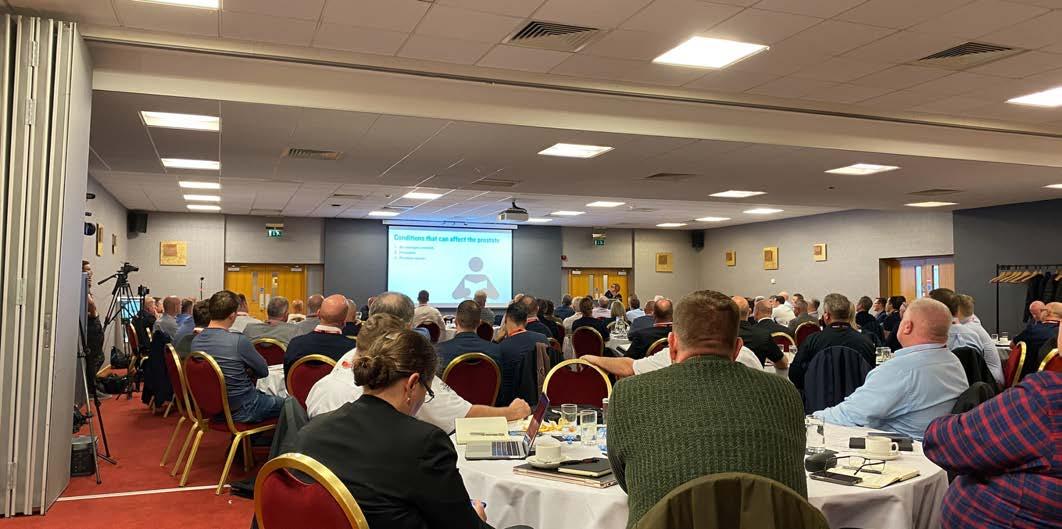
Occupational Exposure Compensation
One of the primary aims of the seminar was also to raise awareness of the fact that being diagnosed with cancer as a result of occupational exposure to UFP is not recognised as an ‘industrial injury’ and is therefore not compensated by government.
This fact was highlighted by Torkjell Helle and Erik Tang representing the Norwegian Firefighters Cancer Group – ‘Brannmenn mot Kreft’, who gave their personal experiences of dealing with occupational cancer.
They have been campaigning in Norway for 8 years for UFP exposure cancers to be recognised as occupational hazards for firefighters and they have had some significant success in changing the
culture and attitudes towards firefighter cancer both with employers and with government.Their key message was – if your station smells of smoke, your decontamination processes and procedures are not working.
Also, continued awareness training and changing of the ‘Badge of Honour’ culture is essential to protect current and future firefighters from this terrible disease.
Please consider the following key recommendations and if necessary, implement them without delay at your fire station.
Key Recommendations from the Report and Seminar
For Firefighting Personnel:
• Respiratory protective equipment (e.g., SCBA) should be worn at all times whilst firefighting This should also include during salvage and turning over activities and other activities undertaken by FRS personnel (and/or others) after firefighting has been completed, but whilst the building contents are still ‘gassing off’. Respiratory protective equipment (RPE) should be one of the last items of PPE removed during de-robing (after decontamination).
• PPE that is suspected of being contaminated should be transported back to the station or workplace in an air-tight container to prevent cross-contamination.
• “Scrub then grub” - Avoid eating, drinking, or smoking with unwashed hands whilst wearing, or after de-robing PPE that may be contaminated.
• After attending a fire incident, all personnel should change into a set of clean, dry clothes as soon as possible, ideally before re-entering the appliance (or any other vehicle).
• PPE should be clean and should be thoroughly decontaminated after every incident to avoid a build-up of toxic contaminants. PPE should be inspected for wear and damage on a regular basis and replaced as necessary.
• It is important to protect areas of exposed skin and airways when cleaning soiled PPE/equipment. This requires appropriate respiratory protection (e.g., face masks or face coverings) and gloves.
• “Shower within an hour” when returning to the station from an incident or following a live fire training exercise.
• Regular health screening and recording attendance at fire incidents over the course of a firefighter’s career is strongly advised and will be key to the longer-term monitoring and management of health.
For Fire and Rescue Services:
• Every Fire and Rescue Service (FRS) must have fully risk-assessed decontamination procedures (en-route to, during and after fire incidents), and ensure all relevant staff are trained in implementing these procedures.
• All FRS personnel should receive regular and up-to-date training on the harmful health effects of exposure to toxic fire effluents, and how these exposures can be reduced, minimised, or eliminated.
• All FRSs should have policies in place for the routine care, maintenance, inspection, and professional cleaning of PPE.
• Establishing and strictly maintaining “designated zones” within the fire station must be a priority for preventing cross-contamination. PPE should never be worn in areas of the station designated a clean zone (e.g., kitchens, living quarters etc.) and should be stored away from personal items.
• To reduce secondary exposures, appliance cabs and equipment from emergency response vehicles should be cleaned and decontaminated on a regular basis, especially after incidents where exposure to any combustion products occurred.
Written by: Chris Thain Business Development Manager –Fire & Rescue Services G3 Systems Ltd
Contact: chris.thain@g3-systems.co.uk
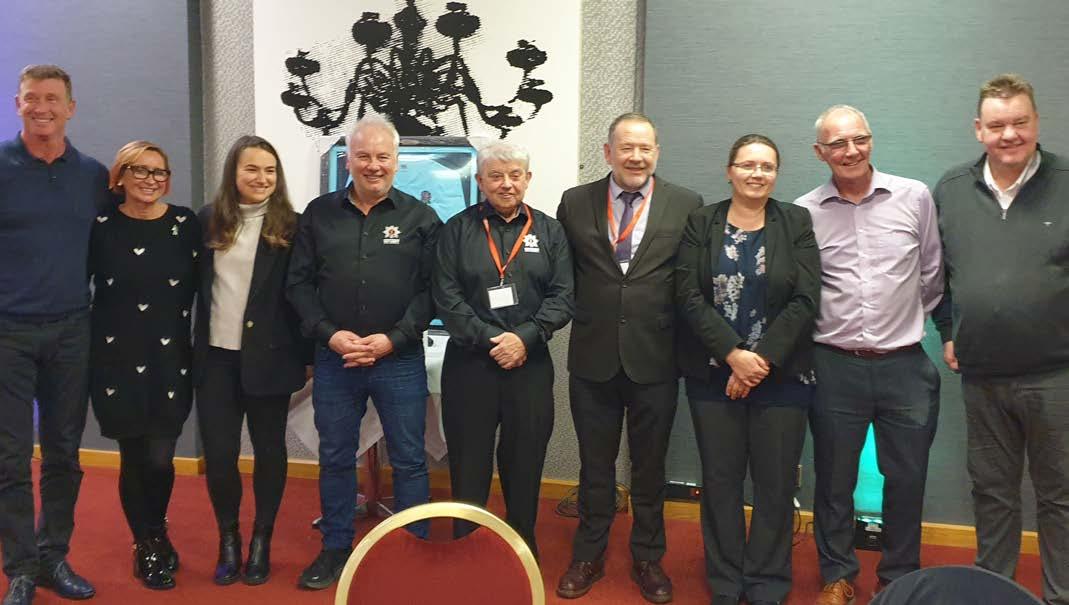 Presenters at the inaugural Cancer Seminar (L-R): Jamie Clark (De-wipe), Kathleen Feeney (Prostate Cancer UK), Abby Hannah (Stedfast), Erik Tang, Torkjell Helle (Brannmenn mot Kreft), John Lord (Simtrainer UK), Prof. Anna Stec (UCLAN), Iain Gavin (Scottish FF Cancer Service), Alisdair Couper (Terberg DTS)
Presenters at the inaugural Cancer Seminar (L-R): Jamie Clark (De-wipe), Kathleen Feeney (Prostate Cancer UK), Abby Hannah (Stedfast), Erik Tang, Torkjell Helle (Brannmenn mot Kreft), John Lord (Simtrainer UK), Prof. Anna Stec (UCLAN), Iain Gavin (Scottish FF Cancer Service), Alisdair Couper (Terberg DTS)
Mobile water transport - Hydraulically driven submersible pumps - High speed hose laying - Full automatic hose recovery - Large diameter hose - Intergrated foam systems - Total solution
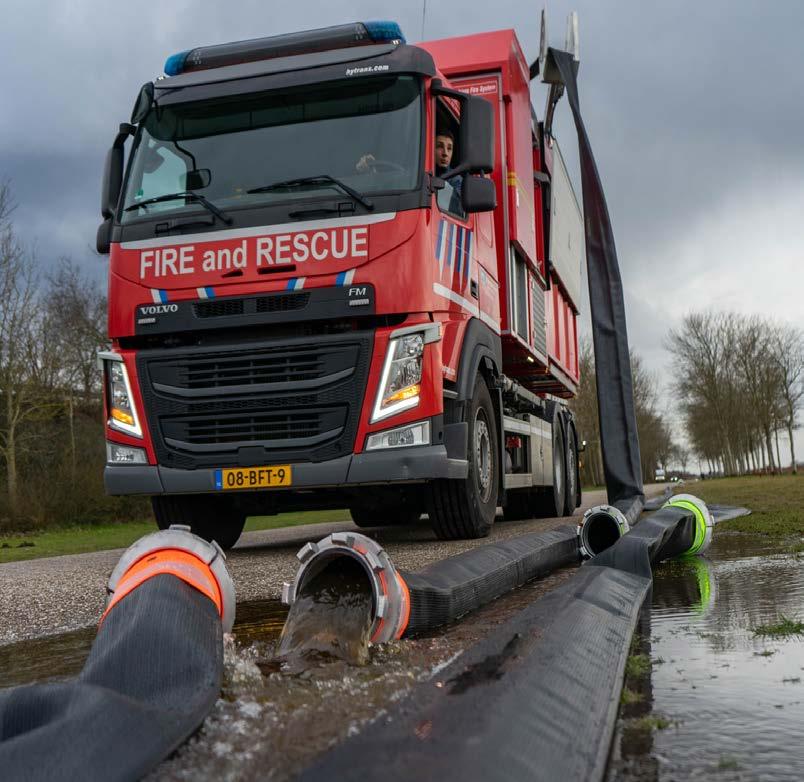
The Hytrans® mobile water transport systems are developed for long distance and large scale water transport, and has proven performance in:

• Fighting large petrochemical fires

• Emergency cooling operations for nuclear reactors
• Reducing large scale floods
OVER THOUSAND UNITS OF EXPERIENCE!
Hytrans® enables fast and reliable water transport over long distances.

Deployed in minutes with a minimum of manpower!
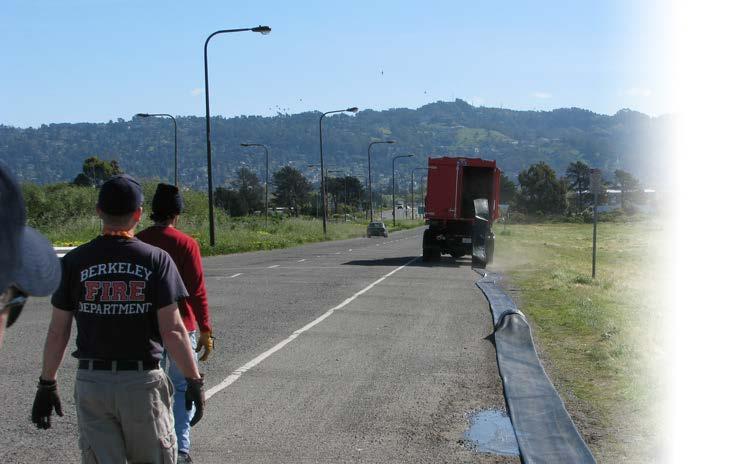
Hytrans Systems
Foam Standards or Standardisation ?
By John Olav Ottesen -CEO, FomtecThe acceleration of legislation restricting the use of firefighting foams with intentionally added PFAS chemicals has led to the industry questioning whether the existing Standards and specifically fire performance Standards such as EN 1568 – Part 3 or Part 4, or UL 162 and FM 5130, and design Standards such as EN 135652 and NFPA 11 are fit for purpose. It is pretty much accepted that today’s Synthetic Fluorine Free Foams (SFFF’s) have made great strides in performance over the last 5 to 10 years, but for many applications and particularly for fixed systems doubts continue to exist of whether (in performance terms) these new foams are true “drop-in” alternatives.
This was a position supported by Gerard Back – Jensen Hughes, and John Farley –Naval Research Laboratory in their January 2020 report under the auspices of NFPA Research Foundation, titled “Evaluation of the fire protection effectiveness of fluorine free firefighting foams”. In their conclusions they wrote:
“In summary, the results demonstrated that, while FFFs have come a long way, there is more to learn about their capabilities and limitations. As of today, FFFs are not a drop-in replacement for AFFFs. However, some can be made to
perform effectively as an AFFF alternative with proper testing and design (i.e., with higher application rates and densities).” ; and “The results also showed that the based fuels. Some foams struggled against other fuels, like gasoline, compared to heptane. Going forward, it was recommended that FFFs be tested and listed for a variety of hydrocarbon fuels, the approach currently used for polar solvent listings and approvals” ; and
“Ultimately, end users will need to design and install within the listed parameters to ensure a high probability of success during an actual event. This applies not only to the discharge devices but also to the proportioning systems, due to the highly viscous nature of some of the FFF concentrates.” Whether for mobile / emergency response, or for use in fixed systems the end user or consultant or designer is still faced with the same questions of what foam to use and how much of it will they need to meet the mission requirements !
Add in the major complication of if they are looking to transition away from intentionally added PFAS containing foams and the timescale to achieve this (depending on where you are in the world, and/or your corporate environmental responsibility policies) and this just became
legacy fuel — heptane — used to list and approve foams might not be a good surrogate for all hydrocarbon-
a bigger question mark. It has been said that the SFFF’s commercially available are the most tested firefighting foams since the invention by 3M and the US Navy of AFFF, but there is even more being written about the variability of the SFFF’s to different fuel types, or the importance of expansion ratio, and the difference in performance with different discharge devices. That’s where our performance and design standards come in, as these allow us to answer those questions about what foam to use and how much will be neede………….OR DO THEY ?
Top Side Fire Performance Testing:
The three most used fire performance standards used for low expansion foams are EN 1568-3 and -4, UL 162 and FM 5130. The EN 1568 standard address water immiscible fuels in Part 3 (-3) and water miscible fuels in Part 4 (-4), whereas both the UL 162 and FM 5130 documents cover the testing on both fuel types within one document.
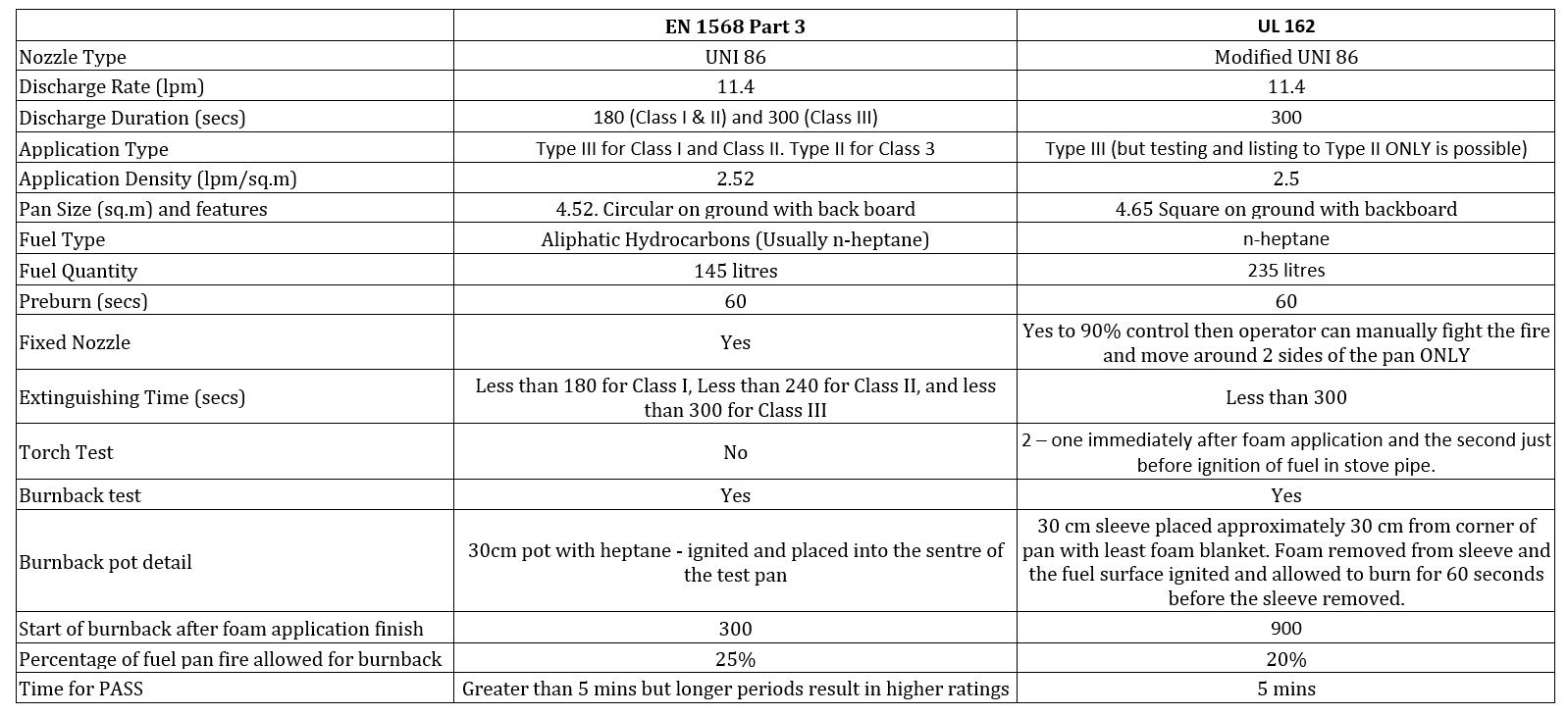
(forceful) application, although Type II (gentle) application can be tested (and is used within the EN 1568-3 when testing for a Class III extinguishing performance) under each standard. For water miscible fuel Type II application is used within all three standards.
and relies on one data point with the Uni 86 nozzle which at the test pressure generally gives expansion and 25% drain times which suit most SFFF’s.
Take an example of an SFFF which has a IA
When testing SFFF concentrates, Heptane is considered representative of hydrocarbon liquids with the following characteristics:
• Flashpoint equal to, or greater than, Heptane.
• Vapour pressure equal to, or greater than, Heptane.
• Pure liquids (i.e. not blended such as gasoline/alcohol combinations)
Figures 1 and 2 Above show the comparison for SFFF’s between EN 1568 and UL 162 for water immiscible (hydrocarbons) and water misicible (polar solvents) fuels. FM 5130 is not shown as the test methodology is the same as UL 162 except that FM 5130 no longer will approve ALL hydrocarbons based on the test with n-heptane.
Industry professionals have been arguing about the merits of EN compared to UL / FM for as long as I have been in the industry but it is certainly clear from the two figures above that direct comparison between the two test standards is not possible!

There are many who argue that because EN 1568 has a grading system covering extinguishing time and burnback resistance that it is “a more useful” standard than the UL 162 for evaluating the fire performance of a foam concentrate. Conversely the EN 1568 standard does NOT take into account the foam qualities achieved with real world devices such as monitor nozzles and foam makers,

rating on heptane under EN 1568-3. This was achieved with foam qualities through a Uni 86 test nozzle at 6.3 to 6.6 bar pressure. How does this relate to suitability of use through a foam chamber when the inlet pressure is 2.5 bar ? Compare this to a UL listing or FM approval where the discharge device is approved with the foam and the approval will define the discharge device and the pressure that matches the foam qualities tested for the foam concentrate. Within FM 5130 the tolerances for foam qualities are stated in Table 4.4.2.2 and the data is reproduced above.
Polar solvents are even more complicated and no acceptable screening process currently exists within any of the standards and to be 100 percent sure of effective extinguishment would require fire testing. There certainly is a “with hindsight” argument here as to whether the industry should have looked at this issue closer when we transitioned from C8 to C6 !
Standard Sprinklers Performance Testing:
FM has already gone a step further based on test data with other hydrocarbon fuels and in the May 2021 version of the FM 5130 document they added a clause for SFFF’s as below:
When it comes to using foam through standard (non-aspirating) type sprinklers there is Currently no information within EN 1568-3 and -4. We are aware that discussions within the technical committee are on going about adopting a similar approach to UL 162. Both UL 162 and FM 5130 recognise that getting accurate foam quality data from standard sprinklers is very difficult and therefore approvals for both are based on the fire testing protocols illustrated in figures 3 and 4 as below:
Figure 2 – Comparison for fire tests for SFFF for water miscible (polar solvent) fuelsSo unlike the top side fire performance tests we see some divergence between UL and FM. The UL approach is to use a larger grid, use two sizes of sprinkler (“Standard” and “Large”) and use a minimum application density and then apply a “Safety Factor” when defining the minimum application densities.
FM uses a grid size of 3.05m x 3.05 which is the same as design and installation in most design standards and installations. They define a minimum application density based on the K-factor of the sprinklers to be testing (This is found in Table D-1 of the Standard). The major
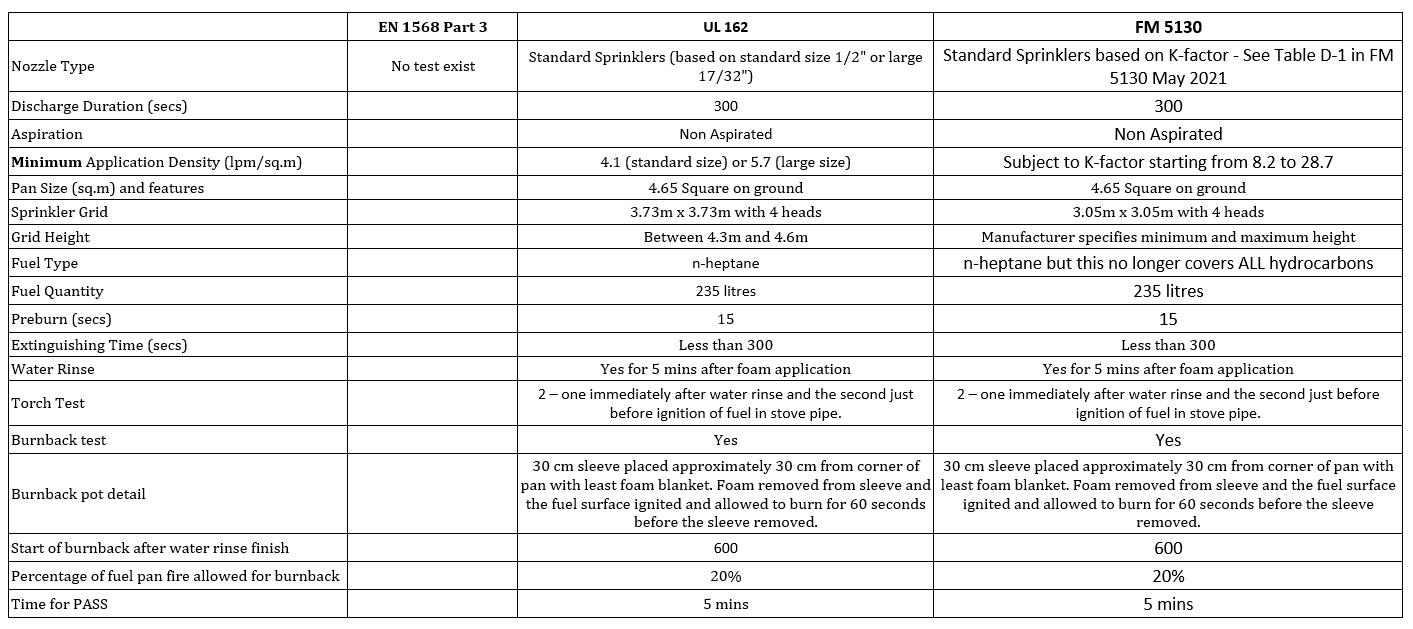
differentiating factors between FM 5130 and and we again have chosen to follow the FM testing and approval process with the Enviro Programme as we believe that the real world installations require that we can provide data for a range of installation heights rather than the UL approach of a fixed height test. Our current FM approvals for the Enviro USP UL 162 are however related to the fuels and test heights, both of which have significant implications to the performance with SFFF’s when we are dealing with the expansion and drain times achievable with the standard sprinklers and operating pressures. Similar to the top side
testing on the water immiscible fuels (hydrocarbons) FM has recognised that using heptane as the test fuel for the “hydrocarbon fuel” group for SFFF is no longer appropriate, and whilst adding a considerable expense to the Fomtec position from our more than 2,000 fire tests in our Enviro programme is that we support this requirement as we have data that indicates different performance with fuels with lower flashpoints, higher vapour pressure or fuels that are blended such as gasoline and ethanol. With the difference in the formulations
 Figure 3 – Comparison between EN 1568, UL 162 and FM 5130 for fire performance testing for foam on water immiscible fuels.
Figure 3 – Comparison between EN 1568, UL 162 and FM 5130 for fire performance testing for foam on water immiscible fuels.
between manufacturers different performances to the Enviro foams are possible, and probably likely ! Our testing indicates that extrapolation of data is rarely possible with SFFF fire performance and we again have chosen to follow the FM testing and approval process with the Enviro Programme as we believe that the real world installations require that we can provide data for a range of installation heights rather than the UL approach of a fixed height test. Our current FM approvals for the Enviro USP and Enviro ARK with the Viking Sprinklers in the most part cover a range from 6’ (1.8m) to 48’ (14.6m).
Fomtec Final Comments:
When we look at the fire performance approval standards for SFFF’s we feel that there are gaps with the EN 1568 standard due to the single point testing without reference to the foam qualities achieved with discharge devices. Additionally the lack of a test standard for foam assisted sprinklers is a deficiency (which we understand is being addressed with the next version).

The UL and FM standards differ from the EN standards in many ways but the linking of the topside testing to foam qualities achieved with real world discharge devices rather than



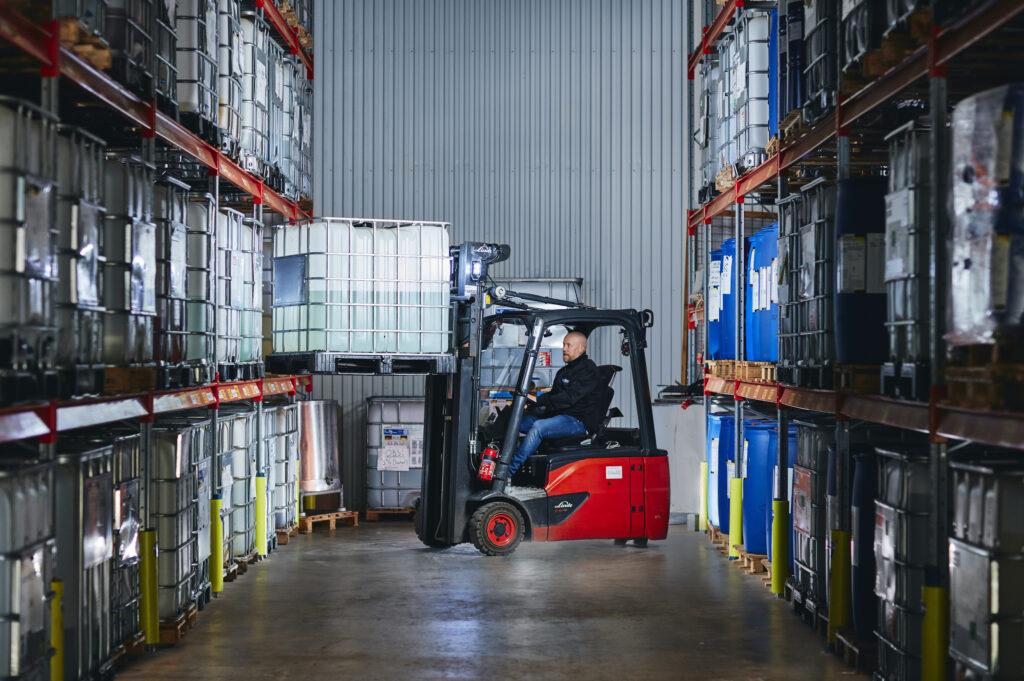
a dedicated test nozzle gives an end user and system designer more data upon which to base decisions.
The additional facts that FM has already adopted a policy with regard to different hydrocarbon fuels and the requirement for sprinkler testing between a low and a high height, with the grid sized as most installations is again in our considered opinion most closely linked to real world installations.
Whilst we will consider to add UL 162 listings, EN 1568 approvals and approvals to other standards such as ICAO, IMO, US Mil Spec and participate in industry specific testing such as LASTFIRE, our preference and primary testing protocols with the Enviro Programme will remain FM 5130.
Without the testing and approvals then decisions will be made based on opinions rather than data !
About the Author:
John Olav Ottesen, Managing Director and founder of Dafo Fomtec AB. A 55 years old Norwegian with 30 years’ experience from the foam industry spending 10 years at Tyco in various positions from the early 1990’s until staring up Fomtec in Sweden in 2001. Caught the foam bug from day one and has been a student of all aspects of foam and foam systems from that day.

Contact:
Phone: +46 8 506 405 66
Email: john@fomtec.com
EN 1568
PREPARING OUR EMERGENCY SERVICES FOR EVERY RESPONSE


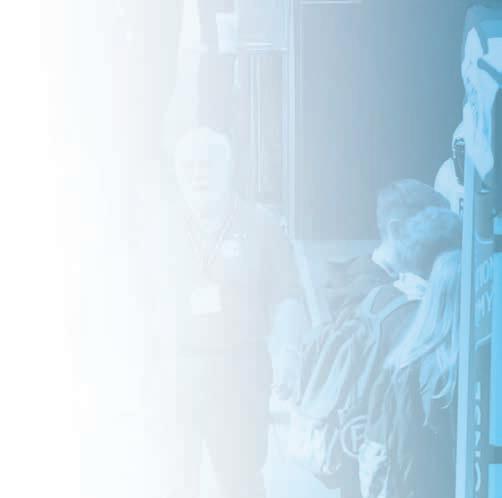

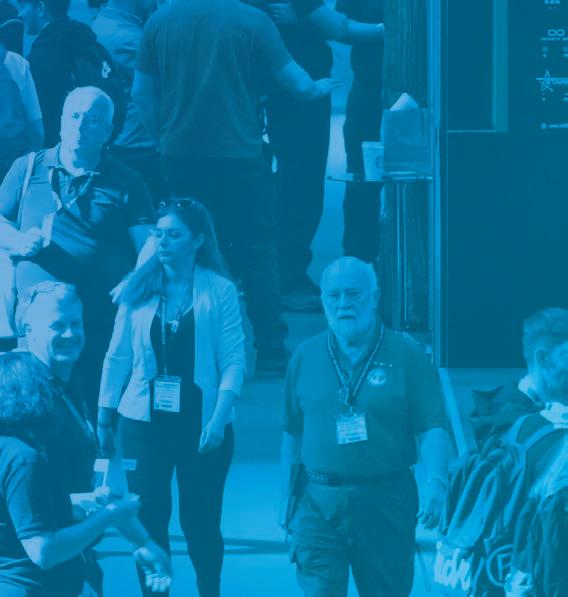

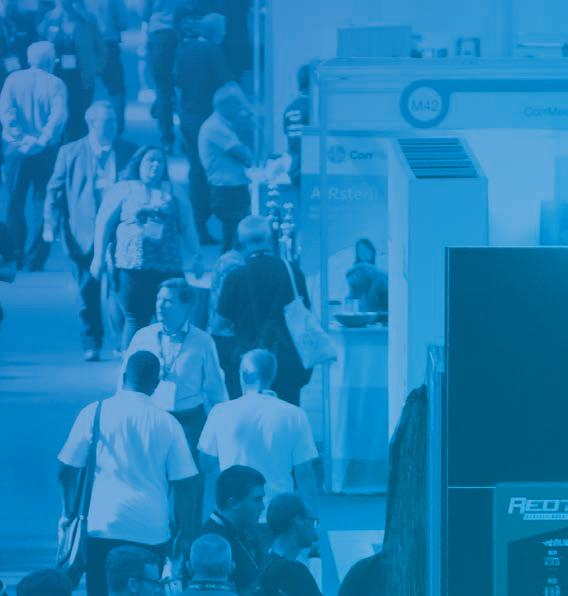

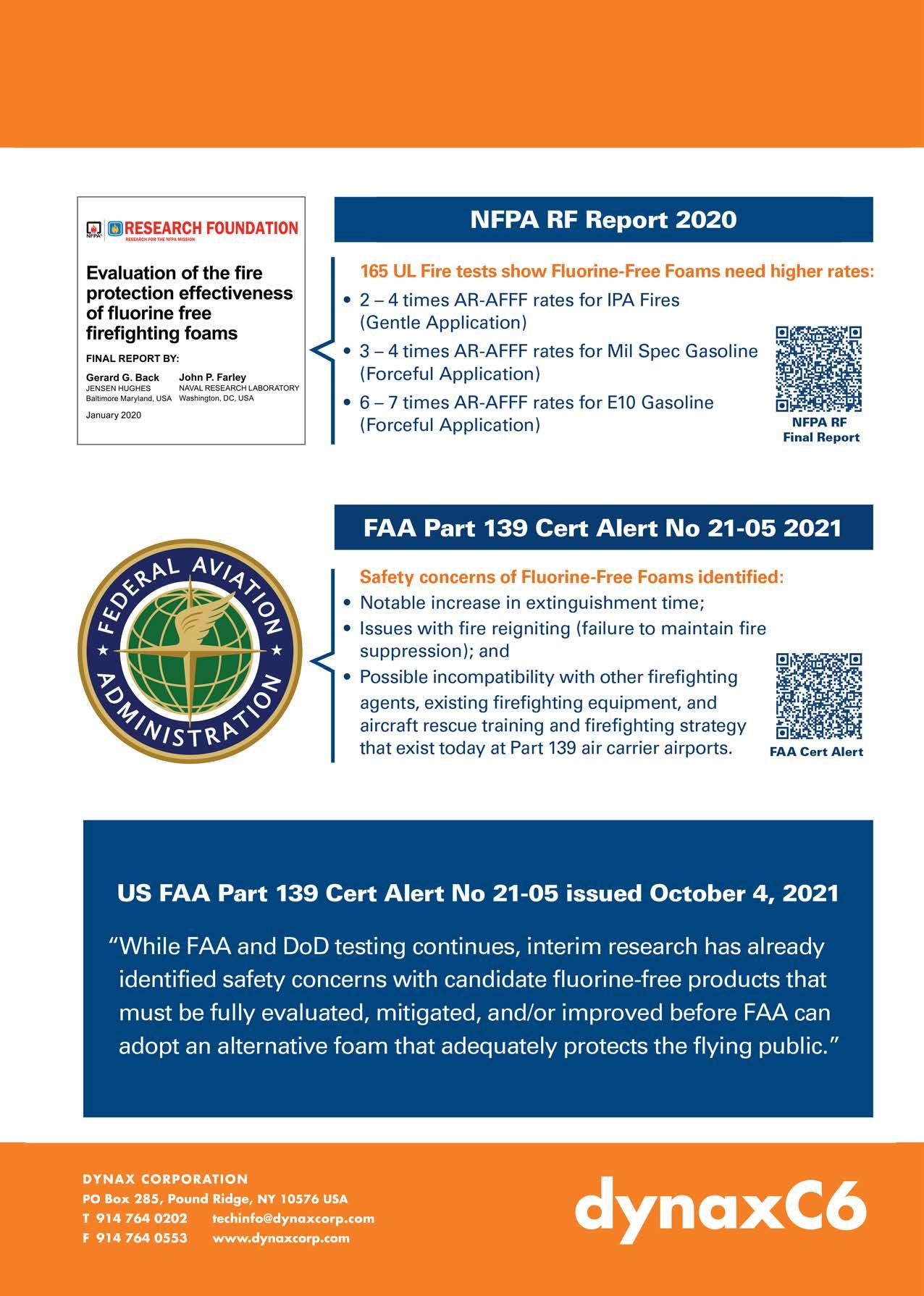
Replacement of fluorinated extinguishing foam: When is clean clean enough?
By Kees Kappetijn - Director/Owner, KSSThe industry and the firefighting sector face a formidable challenge. As a result of upcoming European regulations that will virtually end the sale and use of PFAS-containing products, all types of extinguishing foam that contain these harmful fluorine compounds should be replaced with fluorine-free alternatives in the coming years.
The responsible removal, disposal and processing of foam from existing extinguishing vehicles and stationary extinguishing systems and the thorough cleaning of this equipment is a technically and logistically complex and intensive process. Residues of PFAS-containing foams have proven to be very difficult to remove from tanks, pumps and piping. The Dutch companies Arcadis and Kenbri have jointly developed a cleaning process that they expect will meet the standards for ‘clean equipment’ set by the European chemicals agency ECHA.
The European restriction on the use of PFAScontaining extinguishing foam is expected to take effect in mid-2023. However, this does not mean that all extinguishing foam needs to be replaced at once. The European Chemicals Agency has set various terms for the transition to fluorine-free alternatives for various distinct user groups. Governmental fire brigades (municipalities/safety regions) will have 18 months to replace their PFAS-containing foams. For companies subject to the Seveso III directive and their corresponding fire brigades, the PFAScontaining foam ban will only take full effect ten years after the implementation of the EU restriction.
The latter term allows Seveso companies and fire brigades that require access to an extinguishing agent with guaranteed effectiveness for large liquid pool fires the time to make a safe transition to alternatives proven to be equally effective. Incidentally, these transition terms are subject to highly stringent conditions for situations in which PFAS-containing extinguishing foam
can still be used. Examples include a locationspecific PFAS extinguishing foam management plan, safeguards to prevent the dispersal of these substances in the environment and the thorough retrieval and processing of PFAScontaining waste water after use.
Scope of the problem
Many companies and governmental and company fire brigades have already begun the foam transition, generally making the switch to fluorine-free foams when extinguishing vehicles are replaced. The stationary extinguishing systems and vehicles with PFAS-containing extinguishing foam that are still in use are the core of this problem. This category primarily comprises governmental foam extinguishing vehicles, industrial extinguishing vehicles, airport crash tenders, foam containers, as well as strategic stockpiles of foam kept in mobile or stationary tanks or storage containers in the industrial sector. It is estimated that there are still many hundreds of thousands of litres of PFAS-containing foam in fire engines and storage locations all over the country. Likewise, spread out across high-risk companies with company fire brigades and the public-private
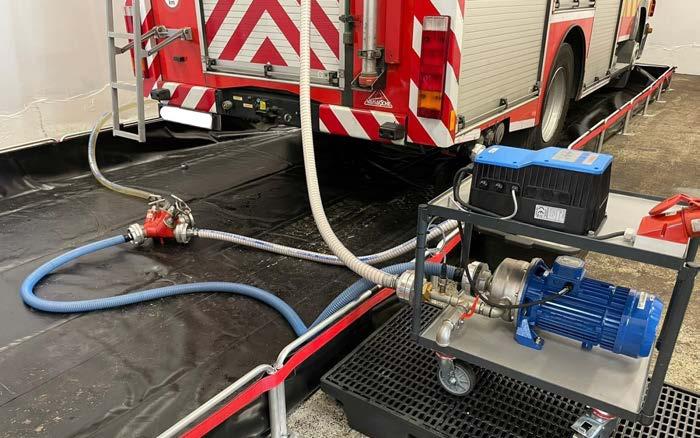
Unified Fire Service, large quantities of fluorinated extinguishing foam are still used in the port and industrial zones of Rotterdam and Amsterdam. Stockpiles of foam stored in vats or IBC containers are relatively easy to dispose of. However, this needs to be done in a thorough manner that can be monitored properly. We need to make sure that ‘old’ stockpiles of PFAScontaining foams are transported responsibly, without any spillage or leakage hazards during transportation. Moreover, these materials need to be processed via a (preferably) certified procedure by a specialised processing company in order to render these PFAS compounds harmless. However, the capacity of such processing companies is limited.
The PFAS-containing foams still present in fire engines are a bigger issue. Many fire engines, especially those used by fire brigades in the (petro)chemical industry, feature an integrated foam tank with capacities ranging from hundreds to thousands of litres. The foam is mixed in a mixing system within the vehicle and is then sprayed onto the fire through vehiclemounted fire monitors or fire hoses by means of the fire pump.
Strict standards
Replacing fluorinated extinguishing foam with a fluorine-free variety (Fluorine Free Foam or 3F foam) may seem a relatively straightforward operation, but appearances are deceptive. Simply ‘draining’ the fluorinated foam from the tank and ‘rinsing’ the pump and mixing system of the vehicle with water before adding the new 3F foam just will not suffice. PFAS-containing foam residues tend to strongly adhere to the walls and bulkheads of tanks as well as the pipes, pumps and fixtures of the mixing system, even after rinsing. As such, the new foam could be ‘contaminated’ with PFAS due to ‘leaching’, resulting in excessive concentrations of fluorine compounds in the environment after all.
What is an excessive concentration? The EU PFAS restriction contains strict norms for the concentration of fluorine compounds that may be released during the extinguishing process due to minimal residues of ‘old’ foam left behind after thorough cleaning of the equipment and materials. For PFOS (the most harmful fluorine compound with so-called C8 molecules), this concentration should not exceed 25 ppb (parts per billion). The slightly less harmful PFAS (C6 compound) has a maximum of 1,000 ppb. PFAS is a collective name for 6,000 different fluorine compounds. The 1,000 ppb applies to all PFAS compounds. These may seem like absolutely negligible concentrations, but due to the effects of PFOS and PFAS on the environment and health, the EU has opted for extremely severe norms in the restriction proposal. Due to the severe ‘adhesion’ of old PFAS-containing foam residues in firefighting equipment, however, it will be a great challenge for the industry and (company) fire brigades to meet this norm.
Dilemmas and challenges
The foam transition is a necessary operation to protect the health of firefighters and other professionals that may come in contact with extinguishing foam on the one hand and to protect the environment on the other. Nonetheless, this transition and the corresponding severe requirements for the disposal of fluorinated foam and the cleaning of materials and equipment present the industry and governmental and company fire brigades with a number of dilemmas and challenges. First of all, they will have to thoroughly inventory their existing stockpiles of PFAS-containing foam and draft a detailed management plan for the use of these substances. Moreover, the ‘scope’ needs to be considered: which items that came into contact with the foam should be included in the cleaning process?
Thorough, location-specific descriptions of situations and conditions in which the foam may be applied need to be drafted. In principle, only ‘class B’ fires, meaning liquid pool fires so large they cannot be fought with an alternative, fluorine-free extinguishing agent, are exempt from the restriction during the transition term. On top of that, the plan must include a thorough description of the way the polluted extinguishing water with fluorinated foam residues is retrieved, disposed of and processed in case foam is used. The plan also needs to state how the company in question intends to ensure this process is performed by a certified specialist.
Moreover, the users should consult the relevant authorities and their insurer to ensure the use of fluorinated foam is allowed during the transition period and that any costs related to the retrieval, processing and, if necessary, remediation of the surroundings of the fire are covered. On top of that, companies need to make sure that they continue to meet the conditions for (company) fire brigade performance stipulated in their license during the transition period and the switch to fluorine-free alternatives.
Management of Change
For the companies and fire brigades involved, it is crucial to properly prepare for the foam transition and to integrally consider all aspects of the switch: the purchase of fluorine-free foam and the need to ensure equal effectiveness in normative, large fluid fire scenarios, the potential need to adjust the technology
and equipment in fire engines and extinguishing systems to the new requirements of fluorinefree foam varieties, responsible disposal and processing of ‘drained’ and stockpiled fluorinated foam and the thorough cleaning of all equipment to meet the severe concentration norm for PFAS after cleaning.

These required actions will force industries and their fire brigades to draft detailed Management of Change plans (MoCs) as a guideline to ensure diligence and to make sure the entire transition takes place within the framework of European law. This way, users can ensure that no ‘crosscontamination’ takes place due to residues of fluorinated foam in tanks, pipes and equipment when extinguishing vehicles are replaced and cleaned.
Cleaning in five steps
In order to ensure a safe and responsible cleaning process, all organisations involved, governmental and corporate user organisations, maintenance companies for firefighting equipment and PFAS waste processing companies should duly prepare themselves. Procedures and methods need to be developed and staff needs to be trained and equipped with the correct personal protective equipment to optimally protect them when replacing foam and disposing of fluorinated extinguishing agents. Having a risk inventory and evaluation (RI&E) drafted by a skilled occupational hygienist to serve as a guideline is an absolute must.
Which brings us to the cleaning process itself. As stated above, simply rinsing with water after removing fluorinated foam does not suffice to remove all PFAS residues from tanks, pumps, pipes and fixtures. Nooks, crannies and connectors especially may still contain built-up foam residues. Arcadis, an engineering firm, and Kenbri, a producer of stationary and mobile extinguishing systems, have jointly developed a procedure they expect will sufficiently ‘clean’ materials and equipment to meet ECHA standards. A pilot with a number of vehicles owned by company and governmental fire brigades has shown the effectiveness of this procedure. The procedure comprises a 5-step approach. The entire extinguishing system is first given a lengthy and thorough rinse with hot water (over 50 degrees) containing a special rinsing agent.
In each day-long step, a different proportion of water and rinsing agent is used, and samples are collected after each step is completed. The residues collected after the tanks, pumps and pipes are rinsed are retrieved and submitted to a specialised processing company as PFAS waste. After these three rinsing steps, an ‘oxidation step’ is performed. The last of the rinsing water is analysed to determine how much PFAS it still contains. The fifth and final step entails analysing the samples taken after rinsing and oxidation in a laboratory. If the analysis shows that the measured concentration of PFAS still does not meet the EU standard of 25, or, respectively, 1,000 ppb, the entire rinsing process needs to be repeated.
Triple certification
It is essential that the rinsing and residue retrieval processes take place under completely controlled circumstances, including sufficient measures to guarantee occupational safety for the employees involved and to prevent any spillage or leakage hazards. The entire cleaning process is ISO certified. The same goes for the disposal and processing of the retrieved residues by a processing company. A certification standard and quality label for the cleaning and processing procedures are clearly required to ensure diligence and to minimise the risk of exposure. The third relevant quality variable is the activities of the laboratory analysing the results of the process. This assessment will also be certified.
The process described also shows that thorough cleaning requires a significant amount of time. At least five days in the best-case scenario, to be precise, if the analysis results after performing the steps are positive. The industry and fire brigades need to keep in mind that their equipment will be out of operation for five to ten days during cleaning. On top of this, no new fluorine-free foam may be added to the cleaned system in the three days between the cleaning process and the results of the laboratory analysis. After all, if the concentration measured in the last rinsing water exceeds the EU standard, the new foam will also have to be disposed of as ‘PFAS-contaminated material’. The industry and fire brigades will need to carefully consider the total time for the cleaning
process and implement measures to maintain their preparedness. To summarise: thorough cleaning of fire engines and extinguishing systems is a specialised process that requires diligence. Moreover, it is a time-consuming and expensive process. Cleaning is an important part of the foam transition process and should be safeguarded where possible. The process developed by Kenbri and Arcadis offers these safeguards. The health and environmental stakes are too high to settle for less.
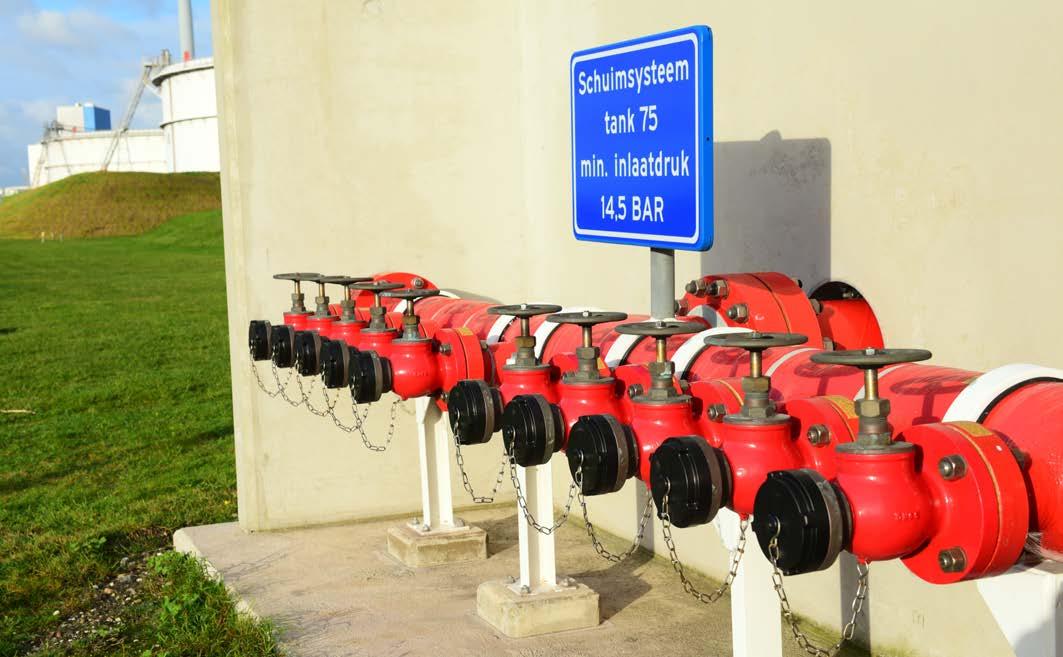
Kees Kappetijn is a consultant and director/owner of Kappetijn Safety Specialists, a company that helps clients to better handle industrial safety risks in their environment. Preparing Industrial fire services, organizing Mutual Aid and PPP and Crisis Management Training belong to the core of the services of the company.
Contact: k.kappetijn@kappetijn.eu
A NEW LEVEL OF PERFORMANCE
LV ICAO C 3% F-5
vaPUREx® LV ICAO C is one of the first newtonian foam concentrate 3rd-party listed with fire performance Level C without any PFAS added. As the key benefit of the low viscosity newtonian vaPUREx® ICAO C foam apart from its excellent and robust fire performance it allows for a one-to-one replacement of standard AFFF. The foam agent is successfully tested at its nominal induction rate of 3 % with different types of monitors, handlines and foam pipes. There is no need to retrofit equipment or even recalibrate the mixing systems. vaPUREx® LV ICAO C achieved an excellent 1+C-rating according to EN1568:2018 part 3 on jet fuel also in an independent 3rd party test.
vaPUREx® LV ICAO C is suitable for forceful and gentle foam application on spill fires or 3D-fires of jet fuel for both Level B and Level C applications on airports or in hangars and works well on fires of other non-polar class B fuels like hydraulic oils. Additionally due to its built-in wetting capabilities vaPUREx® LV ICAO C can be used on fires of solid materials (class A-fires) such as freight stocks, plastics or wood.
For foam transition support, demonstration and pricing get in touch with us by mail: info@sthamer.com
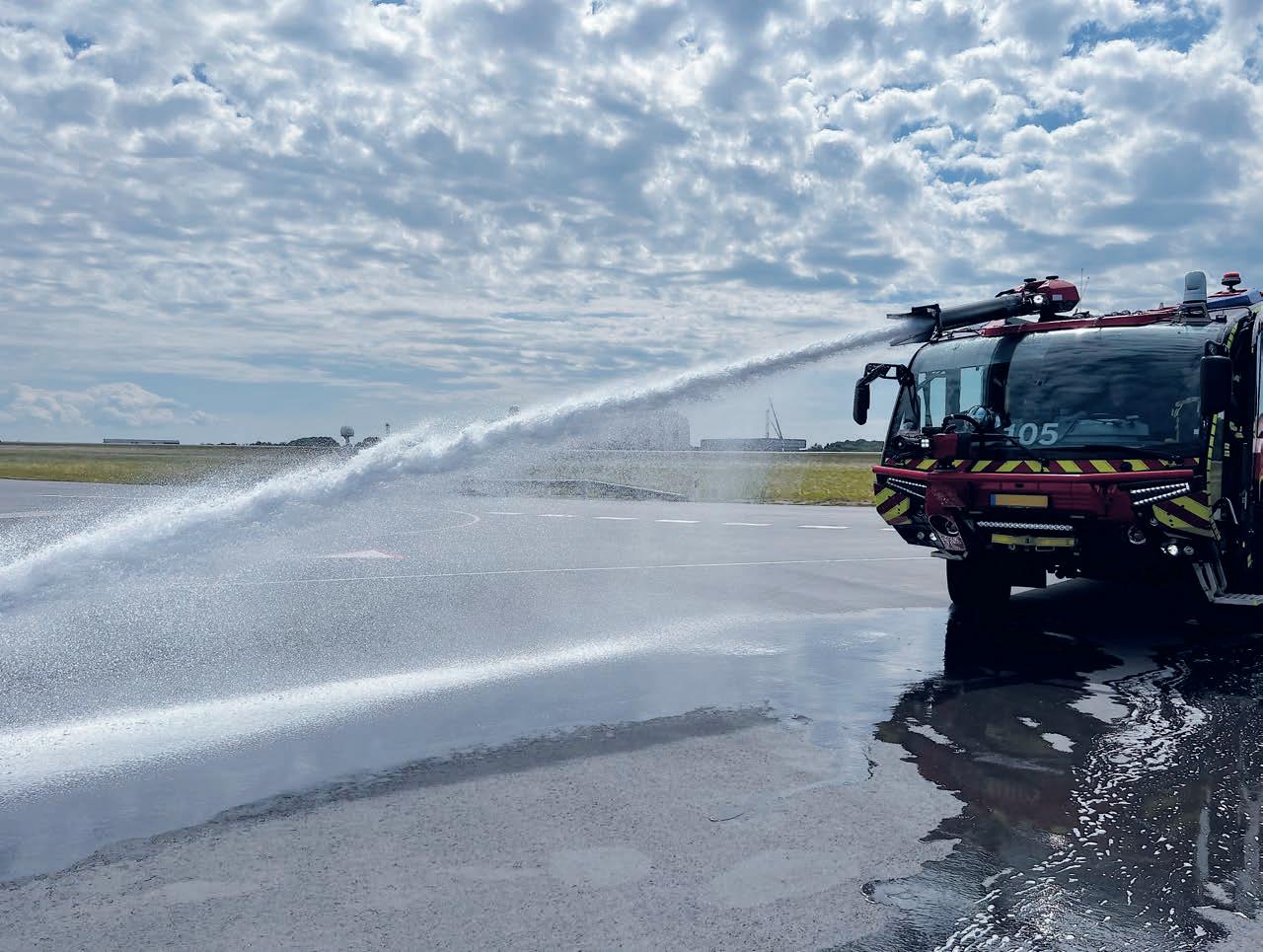
Transition to Fluorine free foams on airports
By Lorenz Grabow - Managing Director, Dr. STHAMERFluorine free foams on airports
Transitioning to fluorine free foams requires the evaluation of different aspects in order to assure that the entire system in combination with the foam concentrate works properly and is in line with the standards applied. This article gives an overview on how the transition can be done on civil airports and what to watch out for.
ICAO Standard
The International Civil Aviation Organization (ICAO) publishes the Airport Service Manual which in part 1 covers Rescue and Firefighting. As per this manual, airports are categorised from 1 – 10 depending on the size of aeroplanes that are arriving and departing, as well as the number of movements at the airport. Firefighting foams are categorised in performance levels A, B and C, where A is the lowest level and C the highest. The firefighting foams on category 1 – 3 airports “should preferably” meet performance levels B or C.
How is the performance measured?
The extinguishing performance of a firefighting foam is tested using a circular fire tray, filled with jet fuel on a water cushion, according to the relevant test protocol. Further details are shown in table 1
Performance level C covers the Level A and B ratings. If an airport requires level B, it could be an option to choose the level C foam performance for additional safety due to the better performance of the foam.
The test foam branch pipe (type UNI 86) generates low expansion foam with an expansion rate (ER) of approx. 1:8.
Independent from this test, it is a wellknown fact that especially on liquid fuels the extinguishing performance of fluorine free foams varies depending on the type of foam outlet device, the pressure
1 ICAO Standard, page 2-5

and water quality, ambient temperature, premix temperature, to state some aspects. Performance variations are greater than with fluorinated foams. For example, an AFFF could be effective when applied non-expanded on hydrocarbon fuels, whereas fluorine free foams in many cases require the use of aspirating equipment in order to fight the fire effectively. If the crash tender is equipped with a water monitor, the fire extinguishing performance most likely is lower compared to the performance when a foam monitor is used. Not in all cases adaptions are necessary. In order to be sure, expansion ratio and water drainage time should be measured.
Viscosity
…is the resistance of a liquid material to flow, caused by ingredients, which are dissolved in a solvent (water) and cause it to change its normal flow behaviour. Surfactants, salts and solvents raise viscosity but do not change the type of it. Polymers raise the viscosity and may change the type of it. There are two main types:
- Newtonian, where the temperature influences the viscosity;
- Non-Newtonian, where the temperature and the applied shear stress influences the viscosity.
There are newtonian and non-newtonian fluorine free foams available on the market. Both may be suitable for use on airports, especially the nonnewtonian may have a different viscosity from the foam used before. It is important to check that the proportioning system can handle the viscosity of the new foam concentrate. Using a newtonian F3 foam with a viscosity of max 120 mm²/sec facilitates the transition.
Exchanging the foam
In case the old foam can no longer be used, it should be disposed by a licensed waste disposer. Keep the disposal documents in your files in case an auditor is asking for it.
Before filling the fluorine free foam into the tanks, clean the truck thoroughly. Ideally this is done by a specialist cleaning company. In any case, collect the cleaning water and hand it over to the waste disposer, the same way as the foam concentrate. There is no standard for cleaning foam systems or fire pumps and from experience, the way it is done varies from a brief flush to a thorough cleaning, possibly including the exchange of system parts, which could contaminate the new foam. The cleaner the system the lower the risk of cross contamination.
Foam deliveries in emergencies
For vehicle replenishment purposes, ICAO recommends holding 200% stock of the minimum foam quantity needed.
After an incident, quick foam deliveries are essential in order to keep the airport in operation.
Sustainable Aviation fuels (SAF)
There is an increasing demand for SAF on airports worldwide. The SAF burning behaviour is equal to hydrocarbon based jet fuel. Approvals are the same, as well.
So, the for ARFF most important question: “Is an alcohol resistant foam needed?” can be answered with “no”. The fuel won´t allow for polymer film formation of an alcohol resistant foam. Instead, the higher viscosity of an F3-AR can cause proportioning issues, especially if the ARFF trucks stand by outside for a longer time.
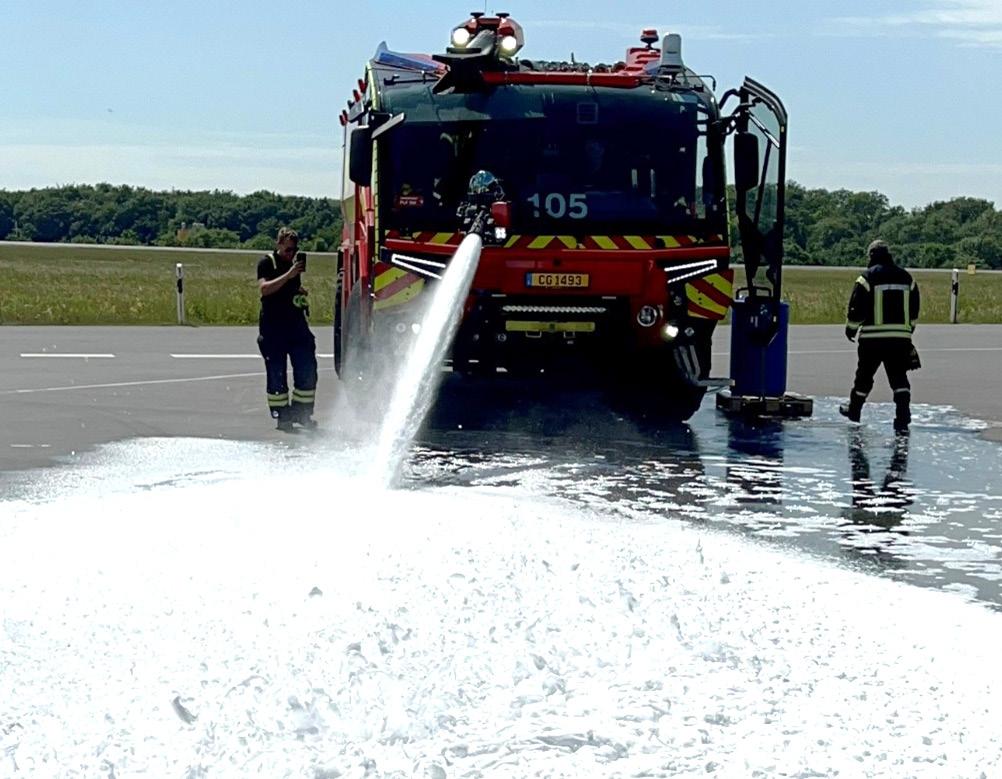
Overall conclusions:
The transition to fluorine free foams on airport is possible when considering the above-mentioned aspects. Firefighting foams with
a high performance level and a low viscosity facilitate the transition process. Some foams have NATO Stock Numbers and can be used for military purposes.
About the Author
Name: Lorenz Grabow
Job:
Managing Director
Company: Dr.STHAMER
Email: L.grabow@sthamer.com
 Secondary foam expansion, hitting the pavement through a semi-aspirated nozzle. (Foto: M. Gorski)
Secondary foam expansion, hitting the pavement through a semi-aspirated nozzle. (Foto: M. Gorski)
JOIFF
INDUSTRIAL EMERGENCY SERVICES MANAGEMENT CONFERENCE 2023 6
& 7 MARCH 2023

JOIFF In association with RelyOn Nutec are pleased to announce The JOIFF Industrial Emergency Service Management Conference 2023 will take place on March 6th & 7th 2023 at the Hilton Hotel - Rotterdam - The Netherlands.


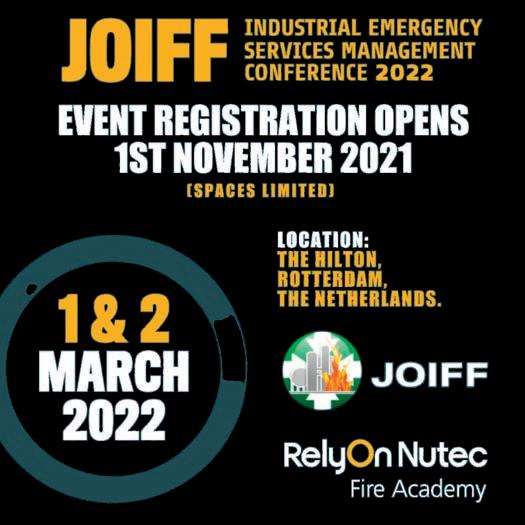

World Class Presentations, Unique Face To Face Networking, Direct Contact With Suppliers & Industry Specialists, Live Fire Demonstrations
As part of the ongoing Shared Learning commitment to the high hazard industry JOIFF are pleased to announce that we will be hosting the JOIFF Industrial Emergency Management Conference 2023 in Rotterdam, The Netherlands 6th & 7th March 2023.
This will be both a live in person event and also a hybrid/virtual event with global subject matter experts from around the world presenting on the subjects that matter most to the Industrial Emergency Services Management Specialist. Plus live demonstrations at the RelyOn Nutec Fire Academy.
To ensure that this unique Shared Learning is available to everyone JOIFF will not be charging delegates a registration fee to attend this Conference.
(Does not apply to travel, accommodation or refreshments outside of the Scheduled Conference)
World class presentations, unique face to face networking, direct contact with suppliers and industry specialists.

International speakers covering the full range of Industrial Emergency Management topics over the 2 day Conference, latest technical advances, case studies, technical presentations, live demonstrations, suppliers presentations & supplier exhibition.

FOR DELEGATE REGISTRATION PLEASE GO TO WWW.JOIFFCONFERENCES.COM


If you would like further information on how you can promote your company at this unique event please contact the Event Director - Paul Budgen Tel: +44 (0) 1 305 831 768 or email: pbudgen@edicogroup.net
If you would like to submit a presentation for consideration please contact Conference Coordinator Lora Lammiman email: lora.lammiman@edicogroup.net
SFFF related considerations for your bladder tank proportioning system
By Simon Barrett - Foam Product Manager,As attention is increasing on system components due to SFFF project transitions, we take a specific look at one of the most commonly used and simple foam proportioning methods – the balanced pressure bladder tank system.
2022 was a year in which increasing PFAS restrictions around Europe and other parts of the world started to have a notable impact on fixed fire protection foam systems across more standard industries such as logistics, recycling or manufacturing for example. Much has been written about the effects of fluorine containing foams restrictions on high profile industry sectors such as emergency response, military or oil companies; there is also a significant amount of smaller business and facilities that in some cases have been slower to understand and react in the required way.
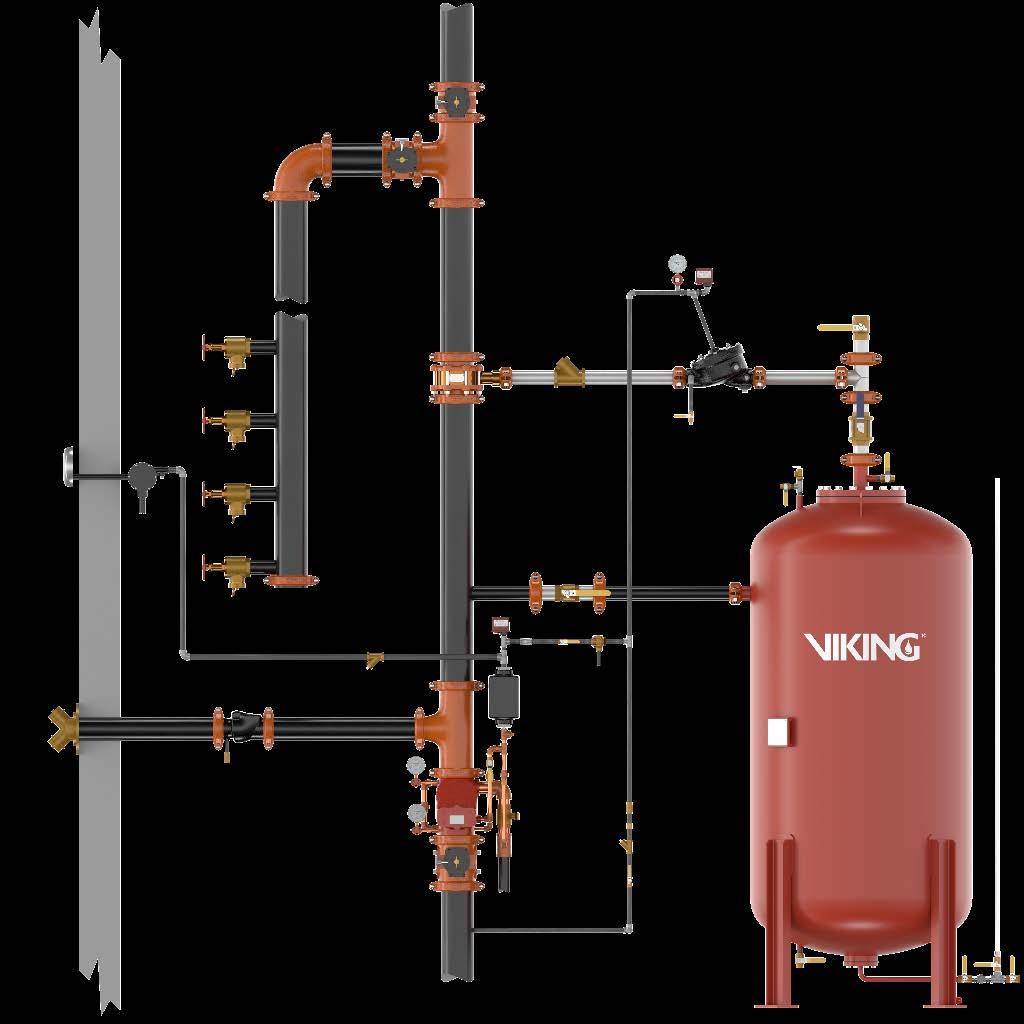
Baseline: Increasing legislation, SFFF transitioning more than a simple review process
As the January 1st 2023 PFOS restriction in Europe loomed closer and additionally proposed restrictions gained higher profiles, end users and design / installation contractors responsible for maintaining existing and implementing new systems were now awake to the fact that they needed to do something –but compliance planning is not a simple review process. That is not to say all companies are slow on the uptake. Larger multinationals have been reviewing their strategies for a couple of years now due to increasing regulation in their home countries or because of their corporate sustainability policies for example. Many of these multinationals are now working through their transitioning projects to move from fluorinated to non-fluorinated SFFF type foam concentrates.
EMEAThis means that theory is now reality and we can therefore learn from some of the challenges faced by these early pioneers. This experience tells us that key considerations for end users and system designers relates to the use of recognised design standards and system components that have been independently tested to recognised test standards. As a generalisation, SFFF foams are not having the same performance levels compared to fluorinated foams.
To quantify, this is comparing, for example, a good quality fluorine free and fluorinated foams tested against the same standard. Often there will be differences with critical application density, extinguishment time, usability or even long term stability. This effectively means the safety margins found in the past with fluorinated foams are reduced, so other elements such as design and system components now play an even greater role in maintaining a high standard fire protection.
Key consideration system components: Bladder tank as proportioning device
Whilst a lot of attention is placed on the fire performance of foam (in combination with its specific discharge device), another key aspect when considering transitioning to SFFF in existing or new installations is the proportioning system. This is the set of components that shall correctly mix foam concentrate with system supply water to make a foam solution which is then distributed via a fixed piping network to the location of the fire.
Failure to correctly deliver the foam concentrate from its foam storage container to the proportioning device will impact fire performance. There are several different proportioning methods such as foam pumps, water driven proportioning pumps, eductors or balanced pressure bladder tank systems. Whilst each proportioning method has its own advantages and disadvantages, they all share a common need for good design and installation, especially when used with higher viscosity SFFF Foams.
The choice to use a bladder tank system is usually made due to economic and simplicity reasons. This proportioning concept uses water flow from the main fire protection system only, requiring no additional external power or components to achieve proportioning. The foam concentrate is stored within a reinforced bladder bag that is securely fixed within a steel tank.
Water pressure from the main system supply is used to pressure the outer side of the bladder, which will help to push the foam concentrate from the tank to the proportioning device during operation. During operation, the firefighting water flowing through the proportioning device creates an area of low pressure, which draws foam concentrate from the bladder tank, through a calibrated orifice, into the riser and onwards to the discharge devices in the risk area. As foam exits the bladder tank, the system supply water replaces it, ensuring the system remains balanced.
The proportioning device is known as a venturi and is a major contributor to making this system simple and comparatively low cost. An added benefit of this method when using higher viscosity foams – as it is common with most current SFFF’s – is that the foam injection is with a high turbulence which ensures a homogeneous foam solution mixing – which is not always found with other proportioning methods.
A weakness sometimes directed at the bladder tank is the inability to refill the tank during operation. However, this feature is normally required only in high risk facilities where indefinite durations could be anticipated and additional foam reserves are kept on site. These are typically oil company facilities or other bulk chemical storage and manufacturing facilities. Standard applications are based on discharge durations and fire brigade attendance, so refilling in operation is not anticipated. The
choice to use SFFF foam concentrate does not change this situation.
As end users review their firefighting systems involving the bladder tank concept, there are several topics that arise. Each project is different but here are some common considerations when transitioning or designing new systems for use with higher viscosity SFFF foam concentrates and bladder tanks.

1) Tank Location
Special care should be taken with the pressure loss around the bladder tank pipework. If the combined length of pipe to the tank and the return foam concentrate pipe is too long or contains too many restrictions, then the proportioning effectiveness will be affected. If this pressure loss exceeds the pressure drop created by the venturi effect in the proportioning device, then the mixing percentage will be decreased. It is recommended that the equivalent length of proportioning loop be kept below 20 meters. Transition projects that were formally using low viscosity AFFF type foams may be particularly troublesome, as this “water like” low viscosity foam concentrate moved much easier in the concentrate supply pipe, meaning the location of the tank in relation to the existing proportioning devices will need to be reviewed.
If this is not feasible, then the pipework should be installed in a way that minimises changes in direction and elevation. The isolation valves used should be full port ball or gate valves; butterfly valves should be avoided due to their additional pressure loss.
Such design considerations on a new system should not be an issue. In fact, the concentrate pipe should be replaced on transition projects anyway to avoid cross contamination between the old and new foams.
If equivalent length can still not be reduced, then a pressure-regulated system with inline balanced pressure proportioner (ILBP) could be used to allow longer distances between tank and proportioner. This system reduces the pressure at the inlet of the proportioner compared to the incoming water supply and subsequent bladder tank pressure. The tank then has a higher pressure which injects the foam along the concentrate line to the proportioner. The ILBP will then regulate the foam mixing percentage between its rated minimum and maximum flow rates.
It should be noted that foam pumps or water driven proportioning pumps would also have incorrect proportioning of foam, if the suction pipe conditions are not correct. Therefore, pipe diameter, length, changes of direction and ancillary valves should all be considered when assessing their use in transition or new installation projects.
2) Bladder
As chemistry varies widely across different foam manufacturers, the compatibility with the bladder within the tank should be considered. Can your system supplier demonstrate long term compatibility between the concentrate and material(s) used to construct the bladder? Foam concentrate is a huge investment that needs to be stable over a long period of time. Using a combination of foam concentrate and bladder tank that has been tested and approved as part of the FM5130 or UL162 test protocol will give a much higher level of assurance than a supplier without the same or similar testing. If the project is a transition to SFFF, then the bladder should be replaced in every scenario to avoid cross contamination. Where densities remain the same, tanks could be reused within an approved system as long as the components are approved together.
The bladder is sometimes referred to as a weakness with this type of technology, which can be true, if used incorrectly. Damage to the bladder itself can mean costly remediation work and foam replacement. Therefore, during the filling and commissioning of a bladder tank it is important to use skilled workers with the correct filling equipment. It is also important that the skilled workers use totally separate equipment for fluorine free and fluorinated foam transfer operations – which actually applies to any foam storage vessel filling.
3) Proportioning Devices
These devices have an effective operation range based on the minimum and maximum flow rate of the fire protection system. The minimum and maximum flows of these devices are foam and device size specific. This range is tested and verified independently, if FM Approved or UL Listed products are selected. The process is expensive for manufactures but does give piece of mind because the behaviour of higher viscosity liquids is difficult to predict. In transition projects, complete proportioners should be replaced as opposed to changing only components.

A wet “closed” device system will have several potential flow rates depending on how many sprinkler heads operate. In this case, a special wide range (or low flow) type proportioner is used but this will have a greater impact on pressure loss. The designer should therefore check if the pump capacity can manage this additional loss.
Deluge systems more often have higher, single flow rates, so a traditional ratio controller type device could be more suitable. This will be a financially cheaper product and will have a lower pressure loss that may benefit water supply costs.
About the Author

The environmentally responsible alternative

Viking EMEA is pleased to announce our extensive line of FM Approved fluorine free fixed foam systems for Hydrocarbon and Polar Solvent applications. The product line now has an extensive range of non-aspirated sprinklers, proportioning equipment and other discharge devices for use in ignitable liquid risks such as warehouses, chemical manufacturing areas, loading racks or aircraft hangars.

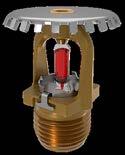
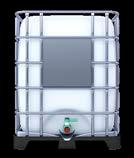

SFFF Compatible Products
Viking and its partners have worked hard to develop a range of SFFF foam concentrates and compatible hardware for use in fire protection systems. It is important to note that SFFF foams are not always a drop in replacement for existing AFFF or AR-AFFF systems. This is why Viking worked with international approval and certification bodies, carrying out extensive fire and performance tests to recognised test standards, demonstrating real life performance of the complete system.
For more information visit:

An Holistic Approach for the Transition to Fluorine Free Foam.
By Eleanor Lister and Niall Ramsden, ENRg ConsultantsIntroduction
The transition to fluorine free foams is perhaps one of the biggest issues facing firefighting foam users for a number of years. The issue is not only limited to industrial firefighters but applies across all users of foam. It is generally recognised that a pragmatic approach has to be taken, i.e., this transition has to happen. It is more a case of “when” not “if”.
The critical question is, how can foam users actually transition successfully, without regret spend, and still maintain appropriate risk reduction?
ENRg Consultants as LASTFIRE Coordinator has spent several years working on the issue with various parties. Initially concentrating on foam performance, carrying out small scale research into how these new formulations work compared to older C8 or C6-based formulations; working up to larger scale (50 m flow length) and understanding how to maximise efficiency and effectiveness of the foams through different application types and methods. Recent LASTFIRE work in December 2022 concentrated on hands-on application carried out by international firefighting experts from around the World to assist with developing real-world guidance on how to optimise the use of fluorine free foam.
Much of this research has been reported elsewhere, so is not discussed here, but this article draws on some of the lessons learnt from this testing and provides an overview on some of the areas that should be considered when planning for transition to Fluorine Free Foams. Note, at the end of this article, a brief summary of the latest (December 2022) research phase is provided.
As such, LASTFIRE has developed a significantly in-depth understanding into how these foams work, how they compare with previous formulations and how users may need to adapt to transition from previous PFAS-containing formulations. Based on all the research carried out, ENRg Consultants is now working alongside organisations, including the Arctic Council as well as LASTFIRE member companies, to develop transition guidance in a totally independent, end user driven, practicable way, that goes
right back to basics to consider exactly how users can make the move successfully meeting legislative requirements whilst ensuring cost effectiveness, protection of the environment and overall process safety and hazard management.
For information, for the Arctic Council project a full range of protocols as a complete Transition Manual has been developed for all aspects of the transition. Pilot studies are now planned for each Arctic Council country to check their practicability and application.
Transition guidance is being developed globally, but it is LASTFIRE’s belief that this has to be a site-specific, multi-step process and should be seen as an opportunity to go right back to basics. This is analogous to the situation when Halons were taken out of service back in the 1990s when taking a true fire hazard management approach, it was recognised that some systems weren’t really justified.
The Transition Process and Steps to Consider
First of all, it is very important to again highlight that any transition manual or documentation produced has to be on a site-specific basis. One process or system that works in one location may not be viable or the best option for another. It is not possible to have a prescriptive guidance document
that would work for every situation where foam is used or handled, although the process steps will be the same.
Fire Hazard Assessment
As mentioned previously, this situation needs to be seen as an opportunity to review what you have on site, and what you actually need. The first question that should be asked is, do you actually need the specific foam system or application equipment?!
It is important that the first step is to assess credible scenarios and whether or not foam is justified for them. A good example of this is typical protection for large aircraft hangars. Standards typically require a foam spray/ sprinkler system supplemented with ground level monitors for under wing protection. This would be ideal for a large flammable liquid spill
scenario, but is this a realistic scenario when fuel tanks are normally emptied prior to work on the aircraft.
Another example would be jetties handling flammable liquids. Typically, these are protected by foam monitor systems prescribed in ISGOTT. However, with breakaway couplings, manifold area bunding and drains to a sump, a spill of any significant size might not be a realistic incident.
It is emphasised that the above examples are not saying that these systems are not required but suggesting that on a site-specific basis these points should be considered.
Foam Procurement Specification
Secondly, and perhaps arguably one of the most important aspects to consider for transition is the procurement of the new foam. The product you will be replacing old stocks with has to be correct for your specific requirements. It is undoubtedly true that previously this detailed performance-based specification was not sufficiently developed and this new situation gives an opportunity to correct this. For example, if you buy a new fire truck you would normally do factory acceptance testing, so why shouldn’t you factory acceptance test the critical safety related product – foam! (Suppliers might argue that having UL approval may obviate the need for this, but mistakes happen in production processes whatever systems are in place.)
LASTFIRE has developed a typical performancebased purchasing specification (to both EN and LASTFIRE performance standards) for Fluorine Free Foams that is very rigorous in its detail. Alongside the perhaps more obvious information, such as required quantity, foam type, foam equipment compatibility, fuel types and scenarios, further things to think about could be (but not limited to):
•Environmental data
•Shelf-life guarantees
•Storage and stock management requirements
•Batch testing
•Long term availability
A copy of this document can be obtained from LASTFIRE by contacting info@lastfire.org
Management of Change
Management of Change documentation should already be in place in an organisation, but it is pertinent to consider how this may need to be applied to fit in with transition. For example, what critical aspects need to be considered on your site? What back-up options need to be in place during transition? Will systems be taken offline during clean-out procedures?
Disposal and Treatment Considerations
Treatment and disposal of contaminated liquids and equipment is correctly receiving a great deal of attention as a key aspect of transition to meet legislative requirements with many focussing on “how clean is clean?” for storage tanks or equipment previously containing PFASbased foams. Several options exist and should be considered, but there are many that are still in the development stage and may not yet be suitable for commercial application to PFAS containing foam concentrates or foam solution or equipment on site. With the current state of development of new and improved disposal methods, controlled storage may be an answer, where sites might consider holding the replaced concentrate and foam solution in an appropriate manner with ongoing management to prevent release until more efficient and cost-effective methods of treatment and disposal are available.
Ongoing Assurance
LASTFIRE has developed a Foam Assurance Guidance document that can assist with this stage of transition. It identifies 10 elements of assurance that should be considered in the development of an ongoing foam management system:
• Element 1 - Assessment of Needs
• Element 2 - Foam Concentrate Procurement Specification & Procedures
• Element 3 - Site Foam Storage and Stock Management
• Element 4 - Site Foam Concentrate Assurance
• Element 5 - System specification and design
• Element 6 – Testing of Foam Application Equipment and Systems
• Element 7 – Environmental Fire-Fighting Foam Management Assurance
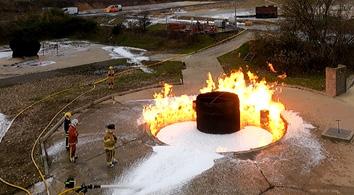

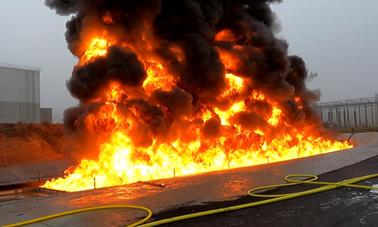
• Element 8 – Site Logistics for Foam Application
• Element 9 – Training and Exercising for Foam Application
• Element 10 – Scenario Specific Emergency Response Plans
A copy of this document can be obtained from LASTFIRE by contacting info@lastfire.org
Interim Requirements
In the interim before transition, there are things that can be put in place that are straightforward to implement which will help with the overall process. For example, sites should review containment options – can existing stocks be contained in a safer way such that potential release to the environment is stopped/ minimised? Other options for system testing and for training requirements should be assessed as PFAS containing foams should not be used for these activities.
Hot off the Press
The latest series of LASTFIRE tests, held at GESIP in France in December 2022 concentrated on handline application to spill fires in order to develop practical guidance and training material for responders.
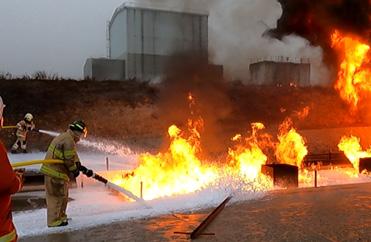
The firefighting was done by some of the World’s most experienced, leading industrial firefighters from USA, Belgium, Netherlands, Germany, Finland, France and UK from within LASTFIRE members.
Full results are currently being analysed and a full report will be issued and published after LASTFIRE member review, but extinguishment was achieved in all cases!
The tests involved Gasoline, E15 (15% Ethanol and Gasoline) and Ethanol. Different hand held application equipment types including nonaspirated, low expansion and medium expansion were used. Some tests involved direct comparisons of the different foams using the same application techniques, others involved simultaneous application of different foams from different handlines. Application rates were typically below NFPA – down to approximately 35% of NFPA rates in some cases. Application techniques included forceful application, “Rollon” pushing foam on from the front of the fire, “banking” applying foam to hot objects in the fire and “rain down”.
Concluding Remarks
Hopefully this article has shown that the transition to Fluorine Free Foam requires careful site-specific considerations, but it can be achieved. In fact, many end users, including airports and oil companies have already completed, or at least started, this transition. There really is no excuse for any foam user not to at least have started developing a transition plan. Meanwhile making sure that their emergency planning arrangements for flammable liquid incidents, rather than just considering how much foam to apply, also considers how that foam should be contained.
About the Author
Eleanor Lister and Niall Ramsden work for independent Fire Hazard Management Consultancy, ENRg Consultants Ltd. ENRg Consultants are the LASTFIRE Project Coordinators and hence Eleanor and Niall have carried out extensive testing of new generation firefighting foams and are working with the Arctic Council on the Transition from PFAS-containing Foams.
Contact: info@lastfire.org
The team initiating fire attack Using roll on technique to establish bridgehead Ethanol fire attack Gasoline pit fire full surface burningNew Technology, Performance Proven
New non-fluorinated THUNDERSTORM® foam proves effective for large tank fire suppression
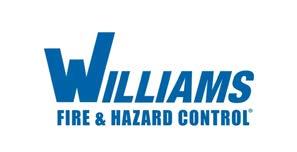
Within the industrial emergency response sector, oil and gas fires are some of the most dangerous and challenging types of fires to extinguish. Specifically, fuel in-depth fires and sunken roof hazards are of major concern to flammable liquid storage facilities, oil and gas tank farms, refineries and petrochemical processing operations. As these operations continue to grow worldwide, fire suppression products must also continue to evolve to provide safer, faster-acting solutions – while keeping pace with a shifting environmental regulatory landscape.
Historically, alcohol-resistant aqueous filmforming foam (AR-AFFF) was the standard for delivering rapid control and extinguishment of Class B industrial fires. These foams work by forming an aqueous and/or polymeric film on the surface of the flammable liquid to suppress the fire and mitigate off-gas vapor. As foam technologies advanced, a new class of non-fluorinated products was introduced but struggled to deliver the performance of traditional AR-AFFFs.
Advancing non-fluorinated foam technology
Since then, Johnson Controls has been driven to develop non-fluorinated foam solutions that perform as well as their legacy counterparts. After thorough research, development and testing, the company unveiled the new THUNDERSTORM WNF33A 3x3 Foam Concentrate in the fall of 2022. Part of the WILLIAMS FIRE & HAZARD CONTROL® foam portfolio, this new foam is the first product in its category to deliver control and extinguishment performance on large hydrocarbon tank fires that is comparable to its AR-AFFF predecessors.
The new solution is UL 162 listed as an alcoholresistant synthetic fluorine-free foam (ARSFFF) for use on all Class B fires, which include hydrocarbon fuels such as crude oils, gasolines, diesel, aviation fuels and polar-solvent fuels like alcohols and ketones with appreciable water solubility.
With performance on par with legacy THUNDERSTORM AR-AFFF concentrates, THUNDERSTORM WNF33A Foam Concentrate now offers industrial firefighters a nonfluorinated solution to help fight oil, gas, chemical and industrial fires – without compromise - to help keep people and facilities safe and productive.
Tank fire tests demonstrate new level of performance
The performance of THUNDERSTORM WNF33A was recently demonstrated in tank fire tests conducted at the Industrial Rescue Instruction Systems Training Center in Beaumont, TX, USA. During multiple rounds of testing, the concentrate was applied to fuel in-depth fires in a 42-foot (12.8-meter) diameter tank. While NFPA 11 and UL 162 standards mandate a minimum foam application rate of 0.16 gpm/ft2 for these types of fires, the THUNDERSTORM WNF33A Foam was tested at half that application rate, 0.08 gpm/ft2 (3.26 lpm/m2), to challenge its fire suppression properties.
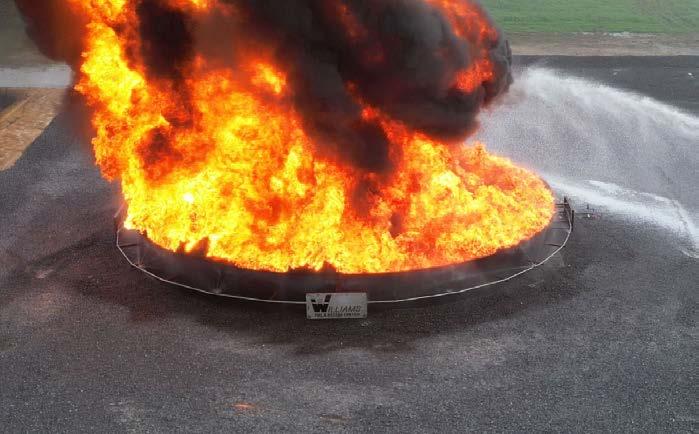
Following a 30-second pre-burn, firefighters were able to achieve control of the fires with THUNDERSTORM WNF33A Foam Concentrate
in less than two minutes with full extinguishment achieved in under five minutes. For comparison, legacy THUNDERSTORM
AR-AFFF products applied at the same application rate delivered control times in the range of one minute 45 seconds to three minutes, thus demonstrating the comparable control performance of the new non-fluorinated foam. These results are summarized in Table 1.
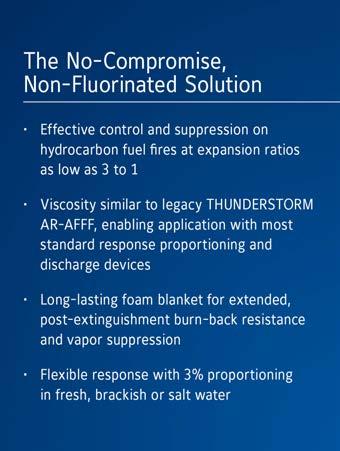
Tank Setup:
• 42-ft (12.8-m) diameter, 4-ft. (1.2-m) deep tank
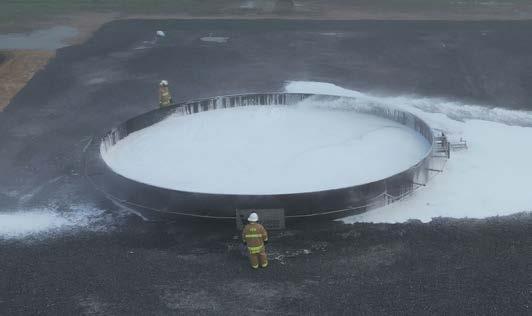
• 1,385 ft2 (128.7 m2) of surface area
• Up to 1,250 gallons (4,732 liters) of E-III™ Industrial Grade Fire Training Fluid* on a water substrate
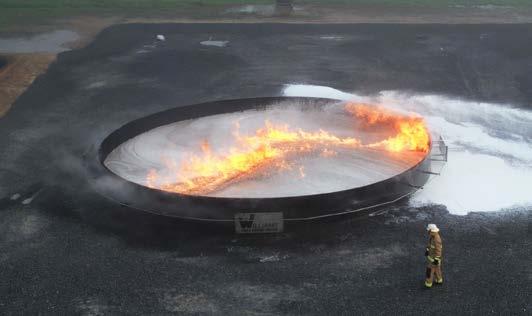
• 30-second pre-burn
• Test field set-up for capture and containment of foam for disposal in accordance with applicable regulations
THUNDERSTORM WNF33A Foam:
• 3% proportioned concentration
• ¾-inch (19-mm), low-head jet proportioner
• 0.08 gpm/ft2 (3.26 lpm/m2) application rate
• Non-air-aspirating, 110 gpm nozzle at 100 psi (416 lpm at 690 kPa)
• Foam expansion ratio between 3:1–4:1
Firefighting foam application rates should be scaled with tank size for large, industrial fires. The WILLIAMS FIRE & HAZARD CONTROL Emergency Response Service team recommends THUNDERSTORM WNF33A ARSFFF application rates as indicated in Table 2 for increasing tank size ranges. The new nonfluorinated foam’s 25% drain time exceeds one hour and provides for a long-lasting blanket


with enhanced burnback resistance and vapor suppression. This aids firefighters in post-extinguishment hazard control of large flammable liquid tank fires. Unlike many nonfluorinated firefighting foams on the market, THUNDERSTORM WNF33A Foam Concentrate has been extensively tested for use in conjunction with dry chemical agents. The foam is compatible with Purple-K and similar dry chemicals for dual firefighting application.
Application benefits
Equally important as fire suppression performance is the ability to apply the foam concentrate using current, conventional firefighting equipment. Independent industry
tests have suggested that many non-fluorinated foam concentrates require foam expansion ratios between 7:1 and 10:1, necessitating air-aspirating discharge devices to achieve effective fire suppression on Class B fires. THUNDERSTORM WNF33A Foam Concentrate produces robust, effective firefighting foam blankets at lower expansion ratios - between 3:1 and 4:1 – as demonstrated in both smallerscale pan fire and larger-scale tank fire tests, on fuels more volatile than heptane, and verified by independent third-party testing. This lower expansion range allows application of THUNDERSTORM WNF33A Foam with most standard discharge equipment, and for first responders provides a safer throw distance than air-aspirated foam. This is especially critical for response operations to large-scale industrial tank fires.
A second challenge with many non-fluorinated foams is proportioning, due to high concentrate viscosity. THUNDERSTORM WNF33A Foam Concentrate was developed with a viscosity shear curve very similar to the legacy THUNDERSTORM concentrates, as illustrated in Figure 1.
Therefore, it may be effectively proportioned with the same equipment and setup as the legacy concentrates in nearly all applications. This eliminates the need to modify most existing mobile response equipment when transitioning to non-fluorinated THUNDERSTORM
Figure 2. Control achieved on 42-ft tank fireWNF33A Foam. In addition to its firefighting capabilities, THUNDERSTORM WNF33A Foam Concentrate is a readily biodegradable, GreenScreen CertifiedTM Silver formulation. As a non-fluorinated foam concentrate, it does not contain intentionally added PFAS chemistry, and it is produced using equipment that has not handled PFAS chemistry. Non-fluorinated firefighting solutions are quickly becoming compulsory for today’s flammable liquid operations.
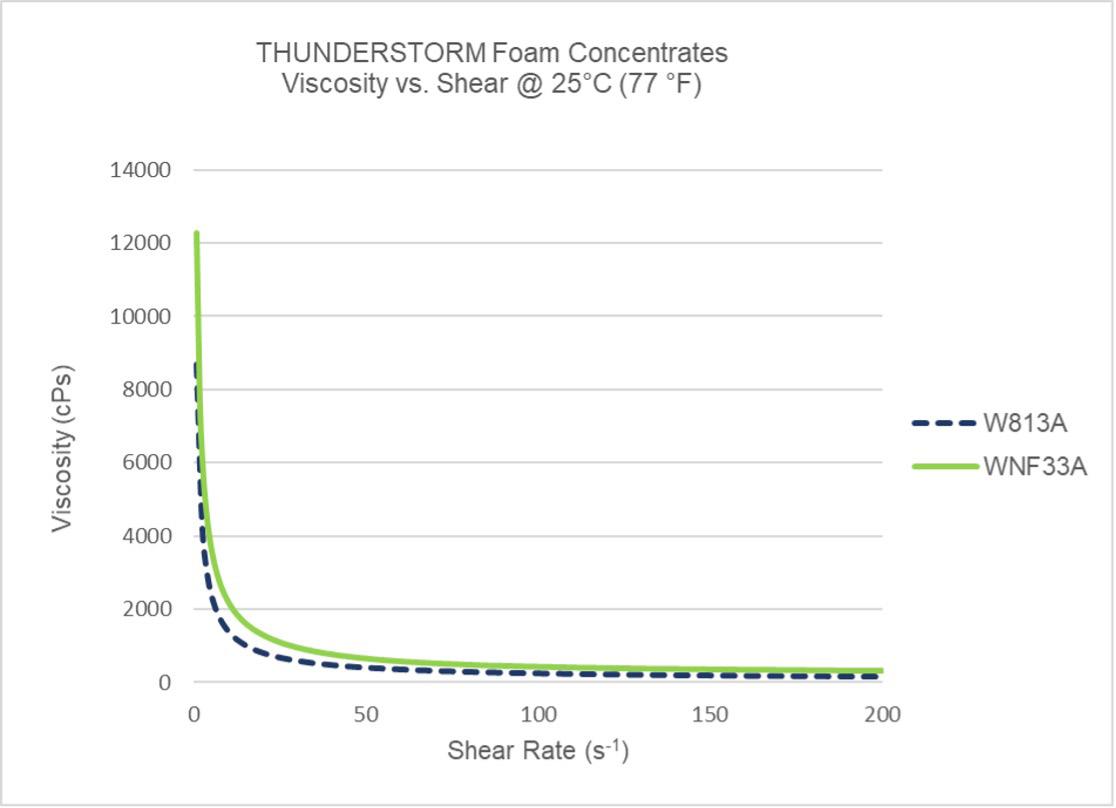

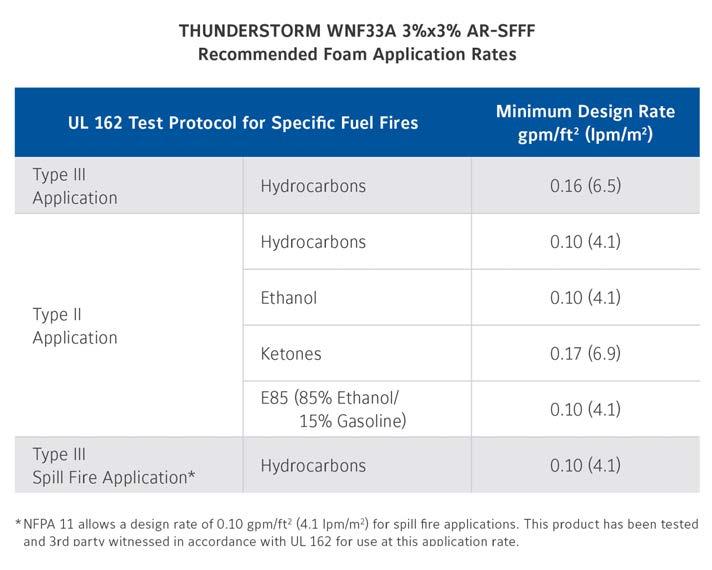
Pursuing the highest level of performance
As firefighting technologies evolve, established approaches will inevitably give way to new advances. The transition from AR-AFFF to new, high-performing non-fluorinated foams for Class B firefighting demonstrates the industry’s adaptability to new customer demands and shifting regulatory guidelines. By employing the latest advancements in foam technology, such as THUNDERSTORM WNF33A concentrate, emergency response teams can be prepared to face the most challenging flammable liquid hazards with the greatest confidence. Visit
* E-III™ Industrial Grade Fire Training Fluid is a trademark of Chevron Phillips Chemical Company LP
Proven Performance. Powerful Protection.
Non-Fluorinated THUNDERSTORM® WNF33A 3x3 AR-SFFF Concentrate
The new, no-compromise firefighting solution to today’s most challenging oil, gas and chemical fires:
• Demonstrated effective on fuel in-depth tank fires.
• High-quality foam blanket produced with most conventional response equipment.
• UL 162 listed.
Backed by 70 years of WILLIAMS FIRE & HAZARD CONTROL® fire protection expertise, THUNDERSTORM® WNF33A foam is the proven, no-compromise solution for large tank fires.
For more information, contact your regional WILLIAMS FIRE & HAZARD CONTROL® product representative or visit www.williamsfire.com.

Is Decontamination of PFAS From Fire Suppression Systems Required?
Ian Ross Ph.D. - PFAS Practice Lead, CDM Smithusing F3 foams, it’s clear that the performance of several F3 foams is now comparable to those containing PFAS [1] [2]. With the release of a military testing specification (MILSPEC) for a F3 foam (MIL-PRF-32725) on 6th January 2023[3], many end users may want to transition to foams that meet this specification. However, foams accredited to this specification may not be appropriate for use in sprinkler systems, for large tanks fires and for use on polar solvent fires. There are, however, several ‘multi-purpose F3 foams’ available from foam vendors, such as Angus/National Foam, Perimeter Solutions, 3F and Bioex, with Fomtec specialising in F3 foam for use in sprinkler systems.
When transitioning between firefighting foams, effective decontamination of fire suppression systems may be required so that the replacement foam does not become contaminated with perand polyfluoroalkyl substances (PFAS) above regulatory thresholds.
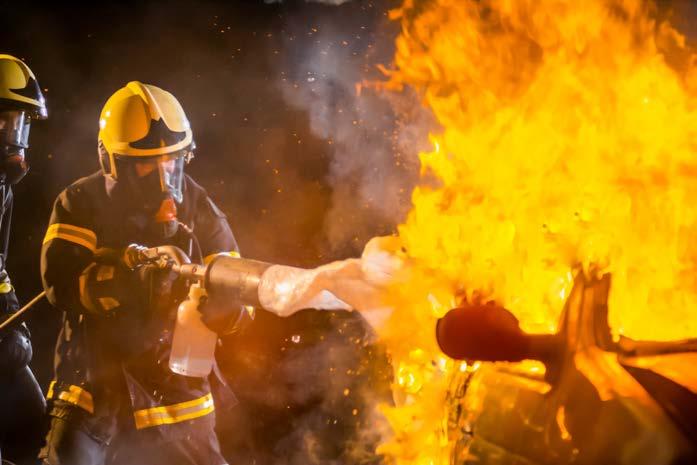
But how do owners of fire suppression systems, when considering foam transition, evaluate whether they need to decontaminate? What PFAS removal approaches appear credible, based on PFAS chemistry, and how is the process decontamination of validated?
With disparate PFAS regulations in differing geographies and multiple technologies proposed for PFAS decontamination, this article aims to identify how to test for PFAS within fire suppression systems, review decontamination approaches and the data used to support the successful clean out of PFAS from fire suppression systems.
Identifying whether there’s a need to decontaminate a specific fire suppression
system could be the first logical step before spending significant amount on decontamination. However, as regulations progress in different parts of the world, this may be a driver for attempts at more aggressive and expensive decontamination approaches.
Introduction
Many end users of firefighting foam are transitioning away from Class B foams such as aqueous film forming foams (AFFF) and fluoroprotein foams (FFFP and FP) containing fluorosurfactants termed PFAS. Transitions generally involve moving away from C8 and C6 PFAS-foams to fluorine free firefighting (F3) foams. F3 foams are widely available and used across multiple sectors, their accelerating adoption, as a result of providing effective fire protection in most situations, means that transitioning to F3 foams is now commonplace. With LASTFIRE having carried out a series fire tests at 40-50 m scales demonstrating successful extinguishment of a series fires
From the 12,000 members of the PFAS family of synthetic chemicals there are potentially hundreds extremely persistent fluorosurfactants which have been used in firefighting foams since the 1962 [4], with the extreme environmental persistence of fluorocarbon compounds being well known since at least 1950 [5]. Differing PFAS are being discovered in drinking water above safe levels in many countries, it’s clear that the use of all PFAS (C6 and C8) in firefighting foams will soon be curtailed by advancing regulations. For example, in Europe there is currently a proposal to restrict PFAS under REACH [6] with supporting documents being made available on 7 February 2023 and a media event in Brussels from 11:00 to 12:30 (CET). This has been described as representing the largest substance ban ever in Europe and somewhat complex because there are more than 10,000 types of PFAS, applied in a multitude of products [7].
Why are Fluorosurfactants Accumulating on Surfaces?
Fluorosurfactants, like all surfactants, when
dissolved in a polar solvent such as water, are retained at surfaces and interfaces, where their local concentration increases. Differing types of surfaces also can interact with fluorosurfactants, via electrostatic or hydrophobic interactions. As the surface concentration increases to saturation, fluorosurfactants begin to associate with each other and form assemblies which comprise multiple bilayer structures [8, 9]. As the perfluoroalkyl tail of fluorosurfactants is rigid and broad, this enables close packing in bilayer structures and creates relatively stable ‘crystalline’ solid forms of PFAS, termed supramolecular assemblies. As over time, more dissolved fluorosurfactants continue retained on surfaces, new assemblies that form can begin to fuse together with the existing assemblies and grow. This process is usually facilitated when there are combinations of positively charged (cationic) and negatively charged (anionic) PFAS, and combinations of different charges within these supramolecular assemblies can cause increased stability. Figure 1 shows a schematic diagram of how PFAS contained in 3M Light Water potentially assemble into stacked bilayers that comprise supramolecular assemblies. Supramolecular forms of PFAS were recently identified on the interior of fire suppression systems using electron microscopy [10], with x-ray photoelectron spectroscopy (XPS) analysis showing these structures contain fluorine.

A significant mass of PFAS can potentially adhere to the interior of fire suppression systems but the amount that rebounds back into the F3 foam will depend on the surface area / volume of the fire suppression system components exposed to the foam and the rugosity and type of the surface material. For example, rough surfaces such as any woven materials or metal surfaces comprising plates and fissures (or rusting parts increasing surface area) have the potential for increases adsorption of PFAS.
How to Measure PFAS on Surfaces
To assess whether effective decontamination of fire suppression systems has been achieved a method to measure the concentration of PFAS that are present in firefighting foams is required. As all fluorinated firefighting foam contain fluorosurfactants, termed polyfluoroalkyl PFAS, for which there are no analytical standards, the use of targeted analysis (i.e. USEPA method 1633) is inappropriate for detection of the PFAS contained within aqueous film forming foams (AFFF) and fluoroprotein foams. These targeted analytical methods may report a ‘total
PFAS’ but this is meaningless as the bulk of the PFAS known to be present in firefighting foams will not be mesures. So in the context of decontamination, the principle PFAS contained within most firefighting foams that will contaminate the fire suppression systems will not have been detected. These proprietary polyfluoroalkyl PFAS used in firefighting foams are termed precursors as when they interact with soil and groundwater, they are biotransformed to create perfluoroalkyl acids (PFAAs) such a perfluorooctane sulphonate (PFOS), perfluorooctanoic acid (PFOA), perfluorohexane sulphonate (PFHxS), perfluorohexanoic acid (PFHxA) etc. which are regulated in many locations.
As none of the parent precursors are detectable by conventional chemical analysis, methods are required that can detect them and two technologies are currently widely available commercially (1) TOP Assay and (2) Total Organic Fluorine analysis by Combustion Ion Chromatography (TOF-CIC).
Application of TOF-CIC or the TOP assay are required to collect data showing that effective decontamination has been achieved, as these techniques can enable detection of the bulk of the fluorosurfactants present in firefighting foams. Data was published in 2019 demonstrating a 100 fold increase in PFAS concentrations were evident using TOP assay to validate decontamination, as compared to conventional targeted analysis [11]. If TOF-CIC or TOP assay are not applied to demonstrate successful decontamination, the bulk of the PFAS present in firefighting foams, are likely to be undetected and could still be significantly contaminating the fire suppression system. However, testing the decontamination agent for PFAS using these methods does not reveal what is present on the surfaces of the fire suppression system. So a validated swabbing method to
quantify PFAS on surfaces is required. ALS Laboratories (UK) have recently developed and tested such a method for detection PFAS on non-porous surfaces within a specific surface area. This approach comprises use of multiple surface isopropyl alcohol (IPA) swabs which are pH adjusted, this is coupled to a baseacid sequential extraction from the swabs and chemical analysis using the TOP assay.
This swabbing method has been shown to be effective for assessment of PFAS impacted pipework by measuring the total elemental content of the pipe surfaces using time of flight elastic recoil detection (TOF-ERD). The difference in surface elemental composition of PFAS-impacted pipework on an area that had been swabbed, using this method, vs an unswabbed area, has demonstrated that the swabs remove over 97% of the fluorine associated with the pipe surface.
Further research on this swabbing approach is being done by Eurofins (US) using repeat swabs in the same area of a pipe, assessing each swab to show when no further PFAS is detected.
This swabbing method is ideal to detect and quantify PFAS within a surface area, such that the mass of PFAS adhering to the walls of tank holding firefighting foams can be determined. The results can be multiplied by the total surface area of the tank and the total mass of PFAS contained on the tank surfaces estimated. This mass can then be compared to the volume of F3 foam concentrate that will be added to a tank, to establish the PFAS concentration that could rebound back from the tank walls in to F3 foam.
In some circumstances it could be prudent to drain some foam concentrate from a tank, to allow access to the tank wall, before
Figure 1 Schematic Diagram of PFAS Supramolecular Assembly Structurescommencing decontamination, to establish how impacted the tank is and whether decontamination is required.
A double water rinse of a fire suppression system in Australia between a PFAS-foam and F3 foam resulted in 1.6 g/L PFAS subsequently being detected in the F3 foam [12]. These high rebound concentrations may not be typical in some fire suppression systems, with little known regarding the concentration of PFAS on the interior of fire suppression systems as a method for surface detection has not been available.
Regulations
This g/L concentration detected in F3 foams, above, is 6 orders of magnitude (a million times) higher than target levels being set for PFAS in F3 foams in Queensland Australia. Where a concentration of 1 ppb total PFAS (by TOP assay) that has been stipulated as the acceptable level in F3 foams [13, 14]. The US National Defence Authorisation act (NDAA) has also stipulated a target of 1 ppb [15] total PFAS in F3 foams, with TOF-CIC being evaluated to determine if these detection limits can be achieved in foams.
In Europe the European Chemicals Agency (ECHA) have proposed a limit of 1 mg/L total PFAS within F3 firefighting foams[16], knowing that decontamination can be difficult. Considering current regulations in Europe focussed on C8 foams, it is critical that the polyfluoroalklyl PFAS within firefighting foam are measured during decontamination to comply with European / UK regulations[17], so TOP assay will be essential for this purpose. If F3 foams contain more than 25 ppb of PFOA or 1,000 ppb of PFOA-precursors, they currently can’t be used if they can’t be 100% contained when discharged. It is
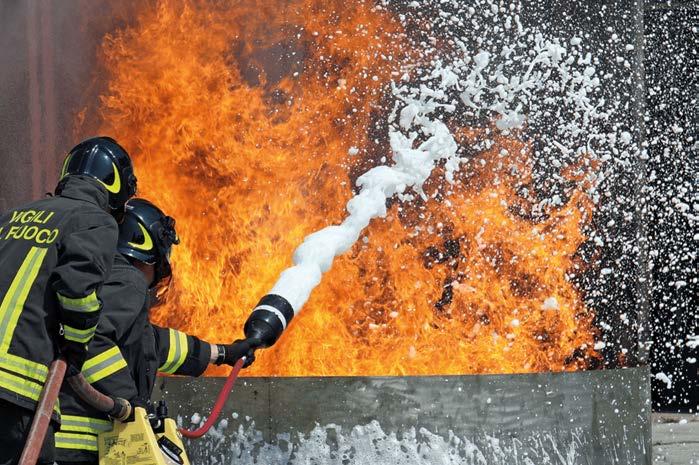
possible that for some fire suppression systems, inadequate decontamination could lead to these concentrations being breached in F3 foams. Residual PFAS supramolecular assemblies could remain within the fire suppression systems. An overview of these regulations has been published by the Irish EPA[18], highlighting the potential for up to 100,000 euro fines for noncompliance.
How to Decontaminate
Recent laboratory work performed by CDM Smith using PFAS-impacted pipes from fire suppression systems and multiple decontamination methods [19], showed that significant rebound of PFAS from pipes treated using PerfluorAd® and potable water was observed. Elevated concentrations of PFAS, sometimes higher than initial levels, were shown to desorb from the pipes that had been treated using both water and PerfluorAd® after 2 and 4 weeks. There was no significant difference in the rebound concentrations measured between pipes being treated using water and PerfluorAd® suggesting neither approach was very effective for decontamination of PFASimpacted surfaces in these trials.
As the PerfluorAd® decontamination technology uses coagulants [20] which have been described as cationic (positively charged) hydrocarbon surfactants that bind to anionic (negatively charged) PFAS and cause then to sediment, it is not going to be effective for addressing the cationic fluorosurfactants present in most firefighting foams, which can be incorporated and stabilise PFAS supramolecular assemblies.
It should be noted that the lines of evidence used to demonstrate successful decontamination with this product are limited to measuring
concentration of anionic PFAS in solution and TOP assay has not been applied which can also measure cationic polyfluoroalkyl surfactants (precursors). This technology is being used for water treatment, where it can be effective to sediment PFAS from solution. It has been adapted for decontamination but it’s mechanism of action to address layers of ‘solid phase’ anionic and cationic PFAS in supramolecular assemblies on the walls of fire suppression systems, is lacking.
The recent publication identifying supramolecular foams of PFAS within fire suppression systems, used TOP assay to assess both cationic and anionic PFAS[10]. This report showed improvements in PFAS dissolution from impacted pipes into water at 40 oC as compared to 22 oC. The use of a proprietary decontamination reagent (Fluoro FighterTM ) was shown to be improved at 40 oC when compared to 22 oC but performance diminished at 80 oC. The ingredients of FluorofighterTM listed on it’s safety data sheet (SDS) include <1% hydrochloric acid (<10 g/L). A 1% solution of acid would create a pH below 1 in aqueous solution but the reagent is described as being at pH 7? Confirming the pH of the Fluoro FighterTM solution being applied and ensuring that it’s acidity does not impact components of the fire suppression system (e.g. viton seals) being decontaminated appears to be wise. There may be a concern from fire suppression system manufacturers that decontaminating systems using acidic reagents may void the warranties of sensitive components such as foam proportioners.
Further research performed by CDM Smith has shown that mild heating (50 oC) enhanced decontamination and significantly better removal of PFAS from contaminated surfaces was observed using solvents such as methanol and propylene glycol. Glycols, such as butyl carbitol, are used as solvents to solubilize PFAS in AFFF and have been applied for fire suppression infrastructure decontamination in research done by the US Navy, with 99.97% removal of PFAS reported [21, 22]. The use of glycols as solvent to dissolved PFAS supramolecular assemblies, combined with mild heat and attrition are a logical approach to enable the dissolution of these supramolecular forms of PFAS and remove them from surfaces.
As glycols are common components of F3 foams, the F3 foam will be expected to dissolve significant PFAS from the walls of a foam tank, or fire suppression system piping over time as they will remain in the fire suppression system for prolonged periods.
Foam Transition
For successful foam transition a site-specific strategy is essential which is prepared by a multi-disciplinary team of consulting fire engineers, experienced environmental engineers and scientists, fire equipment vendors, foam vendors and both fire engineering and environmental contractors. A foam transition strategy generally involves several stages including:
• Assessment of fire risk scenarios and determination of need
• Evaluation of multiple fire suppression strategies and comparison of risk reduction options
• Review of options available to provide effective fire suppression
• Assessment of replacement foams available and whether any suppression system modifications are required
• Assess strategies to maintain active fire suppression during foam changeout
• Perform a cost benefit analysis to compare replacement specific components vs. decontamination
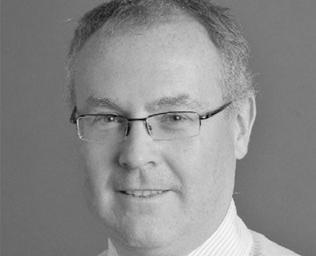
• Implementing decontamination with verification of progress and success done via assessment of total PFAS within the cleaning agent and on the surfaces of fire suppression system components
• Manage waste firefighting foams and PFAS saturated cleaning agents via multiple disposal routes
Stepping back and evaluating the fire hazard scenarios and need for fire suppression can assist with
determining the most pragmatic way forward when evaluating how to maintain effective fire suppression whist removing PFAS-based foams. The most cost-effective approach may not be to retrofit a F3 foam into the existing fire suppression system, as many alternatives may be available which provide robust options for fire suppression.
Conclusions
Decontamination of fire suppression systems are largely being done without adequate data being collected to show that the interior surfaces of fire suppression systems are decontaminated. Most data collected may be described as ‘total PFAS’ but could represent less than 1% of the PFAS present, using targeted analytical approaches.
Knowing that PFAS adheres to fire suppression system walls in the form of supramolecular assemblies assist with understanding that the use of decontamination reagents that can effectively dissolve away these structures is important, such as the application of alcohols and glycols.
CDM Smith has spent the last 3 years evaluating differing approaches for fire suppression system decontamination and can assist with providing technical support from data collected as part of these trails. Our team can apply the new swabbing methods and interpret the data to determine whether a fire suppression system required decontamination.
With disparate regulatory thresholds for PFAS in F3 foams around the world, achieving a 1 ppb target for total PFAS in foam concentrates (as required by the NDAA and Queensland regulators) may be very difficult to achieve, especially as F3 firefighting foams often contain glycols which is a solvent that can dissolve residual PFAS from the interior surfaces of fire suppression system into the F3 foams.
Ian F. Ross Ph.D.|Vice President|PFASPractice Lead|CDM Smith
Norley, Cheshire|UK|
Teams No. +1 (925) 296-8025|
Cell: +44 7855 745531
Email: rossif@cdmsmith.com
1. ACAF, S. DFW Fire Testing. Available from: https://www.youtube.com/watch?v=uXyGlYHw_ZM&t=33s.
2. S.Pepper. Has SFFF Come of Age? 2021; Available from: https://www.industrialfireworld.com/613420/has-sff-come-of-age.
3. Fire Extinguishing Agent, Fluorine-Free Foam (F3) Liquid Concentrate, for Land-Based, Fresh Water Applications. 2023; Available from: https://quicksearch.dla.mil/qsDocDetails.aspx?ident_number=285047.
4. MacKay, N., A Chemical History of 3M 1933-1990. 1991, Minneapolis, Minnesota: The 3M Chemcial, Film & Allied Products Group.
5. Simons, J.H., Fluorocarbons and Their Production, in Fluorine Chemistry, J.H. Simons, Editor. 1950, Academic Press Inc. Publishers: New York, N. Y. p. 401-422.
6. ECHA. ECHA receives PFASs restriction proposal from five national authorities. 2023; Available from: https://echa.europa.eu/-/echa-receives-pfass-restriction-proposal-from-five-national-authorities.
7. REACH, B., 2023.
8. Santaella, C., P. Vierling, and J.G. Riess, Highly Stable Liposomes Derived from Perfluoroalkylated Glycerophosphocholines. Angewandte Chemie International Edition in English, 1991. 30(5): p. 567-568.
9. Barenholz, Y.L., D.D., Handbook of Nonmedical Applications of Liposomes From Design to Microreactors. Vol. 3. 1996, Boca Raton: CRC Press.
10. Lang, J.R., et al., Characterization of per- and polyfluoroalkyl substances on fire suppression system piping and optimization of removal methods. Chemosphere, 2022. 308(Pt 2): p. 136254.
11. Ross, I., Miles, J., Storch, P. Environmental Impact & Management of Fluorosurfactant-Based Firefighting Foams. 2019; Available from: https://www.researchgate.net/publication/330797525_ Environmental_Impact_Management_of_Fluorosurfactant-Based_Firefighting_Foams.
12. Ross, I., Now AFFF is defunct, what’s the way forward?, in International Fire Fighter. 2021: https://www.researchgate.net/publication/352020572_Now_AFFF_is_defunct_what’s_the_way_forward. p. 31-34.
13. Protection, Q.D.o.E.a.H., Operational Policy, Environmental Management of Firefighting Foams, in Handout, D.o.E.a.H. Protection, Editor. 2016.
14. Protection, Q.G.D.o.E.a.H. Environmental Management of Firefighting Foam Policy Explanatory Notes. 2017; Available from: https://www.ehp.qld.gov.au/assets/documents/regulation/firefightingfoam-policy-notes.pdf.
15. Sullivan, M. House Armed Services Committee Subcommittee on Readiness. 2020; Available from: https://www.congress.gov/116/meeting/house/111006/witnesses/HHRG-116-AS03-WstateSullivanM-20200915.pdf.
16. Simpson, P. PFAS in firefighting foams. 2022; Available from: https://www.youtube.com/watch?v=BYrC4H2ODzI.
17. COMMISSION, T.E. COMMISSION DELEGATED REGULATION (EU) 2020/784. 2020; Available from: https://eur-lex.europa.eu/legal-content/EN/ TXT/?uri=CELEX:32020R0784.
18. EPA, I. The Changing Nature of Fire-Fighting Foams Understanding the risk posed by PFAS. 2020; Available from: https://www.epa.ie/publications/monitoring--assessment/waste/AFFF-Booklet-Web. pdf.
19. Dung (Zoom) Nguyen, Y.F., Julie Devon, Charles Schaefer, David Fleming, Emily Crownover, Greg Knight, Jürgen Buhl and Martin Cornelsen, Sustainable Firefighting System Cleanout and Rinsate Treatment Using PerfluorAd®, in Battelle 2022 Chlorinated Conference. 2022: Palm Springs.
20. Cornelsen, M., R. Weber, and S. Panglisch, Minimizing the environmental impact of PFAS by using specialized coagulants for the treatment of PFAS polluted waters and for the decontamination of firefighting equipment. Emerging Contaminants, 2021. 7: p. 63-76
21. Edwards, D. Study of Waste Management and Minimization for AFFF Wastewater*. 2018; Available from: https://exwc. navfac.navy.mil/Portals/88/Documents/EXWC/ Environmental_Security/NESDI/NESDIAnnualReport2018.pdf.
22. Spence, H., Edwards, D., Appleman, T., NESDI Project 533 Study of Waste Management and Minimization for AFFF Wastewater. 2020, Naval Facilities Engineering Command.
Unified Fire Department Rotterdam begins transitioning to F3 foam
By Charles Hanegraaf, Gezamenlijke BrandweerThe Unified Fire Department Rotterdam (Gezamenlijke Brandweer GB) initiated its transition to fluorine-free firefighting foam to ensure that its foam concentrate is free of PFAS additives over time. The GB provides industrial firefighting services to its 65 member companies in the Rotterdam port area. This means that the transition is a complex process for this public-private partnership. Providing adequate firefighting facilities, safety of firefighting personnel, compliancy with requirements of authorities having jurisdiction and continuing to provide appropriate fire services to members are the focal points during this transition. All in all, a huge challenge.
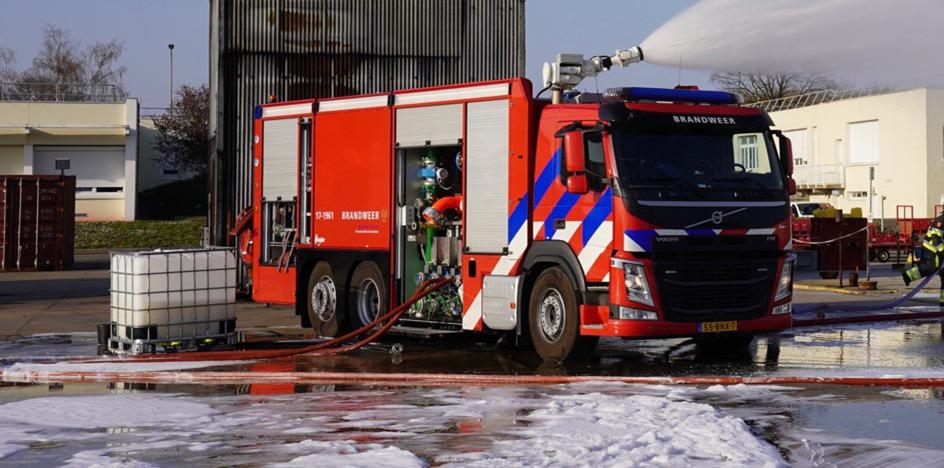
Since its founding in 1998, the Unified Fire Department Rotterdam has been the largest provider of industrial fire services in the Netherlands. The organisation includes 65 member companies, 8 fire stations and 250 firefighters, and covers an enormous highrisk service area in the port, all the way from the Waalhaven to Maasvlakte 2. Over time, this has developed into a system that is unique in the Netherlands: the GB performing contracted firefighting duties within the license of a member company. This means the stakes involved in the transition are very high.
There are many stakeholders, all of which must be kept up to date and involved. While all members are situated in the same port, their business processes, risks, and product combinations are all unique, and demand a different approach and information flow. In addition, GB closely cooperates with the Rotterdam-Rijnmond Safety Region and the Rotterdam Port Authority; both parties that play a major role during incidents in the port.
Martin van de Watering; GB’s head of operational services explains how the organisation sees this foam transition. “The final result is cut and dried for us: the GB is also switching to firefighting foam without PFAS, but at a pace in which safety of our own staff remains guaranteed. With this starting point in mind, our main question is: when and how do we make a transition to fluorine-free foam concentrate? We have closely followed the developments in the foam market in recent years and have arrived at a position where the quality of some fluorine-free foams has reached a level acceptable to us.”
Martin van de Watering; GB’s head of operational services explains how the organisation sees this foam transition.
“The final result is cut and dried for us: the GB is also switching to firefighting foam without PFAS, but at a pace in which safety of our own staff remains guaranteed. With this starting point in mind, our main question is: when and how do we make a transition to fluorine-free foam concentrate? We have closely followed the developments in the foam market in recent years and have arrived at a position where the quality of some fluorine-free foams has reached a level acceptable to us.”
With the arrival of the latest three industrial foam trucks, the GB has already had them equipped with an extra tank filled with 400 litres of fluorine-free foam concentrate, in addition to the 4,000 litres AFFF present. While using this, the organisation started to gain experience and knowledge on incidents response with fluorine-free foam over the past few years. Van de Watering explains: “Developments have increased and improved rapidly over the last 1.5 to 2 years. We now think we can make the transition responsibly. The complexity and scope of the project demands specific expertise and a lot of additional capacity and time, which is why the GB has asked H2K to provide support. As the GB is the linchpin between authorities and member companies in this situation, we
consider it very important that we take the lead in this transition.”
Jochem van de Graaff from H2K supplies this extra capacity. He has been appointed project manager by GB to implement the transition and therewith represent the interests of GB and its stakeholders. “The GB uses a stratified system for the deployment of firefighting foam,” explains project manager Van de Graaff, “as the extent of deployment increases, it can easily be scaled up.” The 7 industrial foam trucks each have 4,000 litres of foaming agent at their disposal. In case of larger incidents, the foam trucks are supplemented with up to 5 hook lift containers with a total of 50,000 litres of foam concentrate. If this quantity is insufficient, the organisation also has a mobile stock of 120,000 litres of concentrate in trailers. Van de Graaff continues: “Within the transition project, we have opted to follow this stratification. Firstly, the foam concentrate currently in the industrial foam trucks will be replaced with a PFAS-free type. These vehicles are first-line units and, on an annual basis, the lion’s share of foam is used by these foam trucks. That’s 4,000 litres, give or take. Replacing the foam in these first-line vehicles is a clear first step towards restricting PFAS emissions. Later, other stocks within the stratified system will be replaced.”
The project started in September 2022 with the first preparations. After an introduction in December, a pilot will start in the first quarter of 2023 at the Maximakazerne, the westernmost GB station at Maasvlakte 2. This location is suitable for the pilot program because the limited number of member companies in the immediate vicinity and therefore also a limited number of incident scenarios. From an organisational point of view, this station allows for implementation of the pilot most convenient.
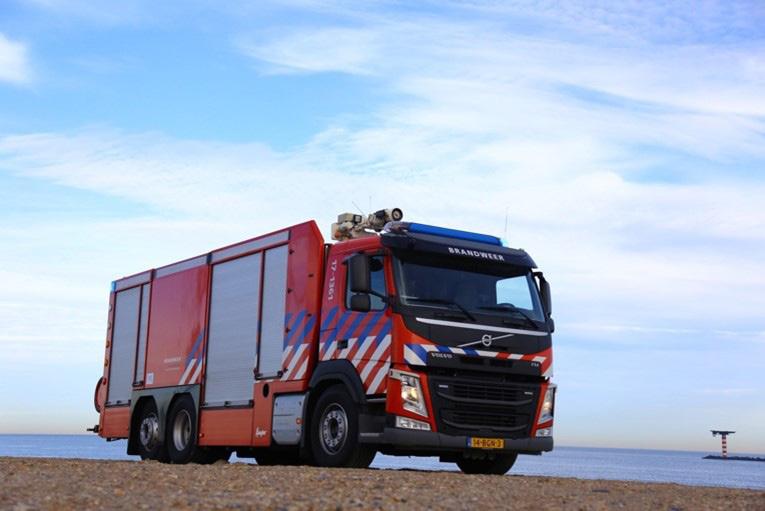
During the pilot, several challenges concerning the vehicles’ pump and admixture technology will be checked for feasibility. As two types of foam concentrate will be used during the pilot, the foam trucks must be adapted accordingly. The vehicles will hold fluorine-free foam concentrate while the hook lift containers and trailers will still contain fluorinated foam concentrate.
Meanwhile, research is done to ascertain to which extend a new foam is compatible with the existing semi-stationary facilities that member companies possess, and which the GB uses during incidents. One of the project’s greatest challenges is that this is not required for just one system or company, but for systems located at 65 member companies.
Because this foam transition is much more than just a technical transition, the professional skill of firefighting personnel is the most important pillar. Van de Watering tells: “The safety of the staff is very important to me. Before we make the transition, I must be sure that the staff are properly prepared. And that their knowledge and skills for using fluorine-free foam is up to date with current developments. This differs from an approach with fluorinated foam.” Part of the pilot at the Maxima station is a specific training programme intended to increase the training experience in the practical use of fluorine-free foam and to deepen the knowledge around it. In addition, workshops for teams will be arranged at other stations, and practical training will be conducted at an external training facility. “We are also going determine whether the training program currently in place is adequate and can be used as blueprint for our other stations,” explains the head of operational services.
As well as the technical components of this foam transition and the skill of the personnel, it is important to the GB and its member companies that the Authorities Having Jurisdiction agree to the proposed transition. To achieve this, contact was made with AHJ’s supervisors at an early stage. Project manager Van de Graaff: “This is also new to the supervisors. The GB and its’
members are now taking steps to comply with the legal requirements arising from the European PFAS restrictions. However, becoming compliant with this new theme does not mean that one automatically remains compliant with other themes. This is why from the early start we’ve involved the authorities to make clear in which way this transition is justified, and the situation remains compliant with all prevailing legislation.”
“Due to the complex nature of the partnership between the companies in the port area and the GB, the authorities also benefit from a standardised working method for the assessment of the foam transition per company,” says Van de Graaff. “By involving the supervisors from the start, we can set up our project in such a way that the assessment process of the Authority Having Jurisdiction will be as streamlined as possible for all parties. The pilot provides space to start harmonising the initial frameworks for this.”
Later this spring, a series of practical tests will be organised at a specialist testing and training facility in France. In larger scenarios, tests will be performed to examine whether the cohesion between foam concentrate, technology and professional skill of the fire service is effective. AHJ’s supervisors and a delegation of member companies will be invited to observe the performance in France. Van de Graaff explains: “It is precisely the cohesion of all these facets that shows that the transition is not only concerned with the selection of the right foam concentrate. The entire system has to be adequate. To achieve this, GB is investing time and energy daily.”
As the schedule now stands, a European tender will be put out in 2023 for procuring new foam concentrate. The pilot at the Maxima station will provide information for the specifications for this. It is expected that the transition of
the first-line industrial foam trucks will be completed by the end of 2024. By then all foam trucks will have been adapted and filled with fluorine-free foam.
Over the coming period, the project team will start preparing to transition the hook lift containers and trailers to fluorine-free foam also. After all, these are the largest stocks by far. Van de Watering concludes: “This transition is not happening overnight. Our phased approach means we can continue to adjust course and stay in control. The foam transition will take place, but we certainly do not want to rush into anything. After all, civilians and companies in the Rotterdam port area need to be able to count on the effective and efficient deployment of the Unified Fire Department, and our personnel has to be sure that they can work safely with the new foam.”
About Martin van de Watering
Martin van de Watering started as volunteer firefighter in 1988. Soon after this, he was taken on by Rotterdam Fire Department for various executive and managerial positions. Since 2011 Martin is the Head of Operations at the Unified Fire Brigade Rotterdam. He also holds two senior positions within the operational command structure of the Rotterdam-Rijnmond Safety Region.
Contact: m.vandewatering@gez-brandweer.nl.
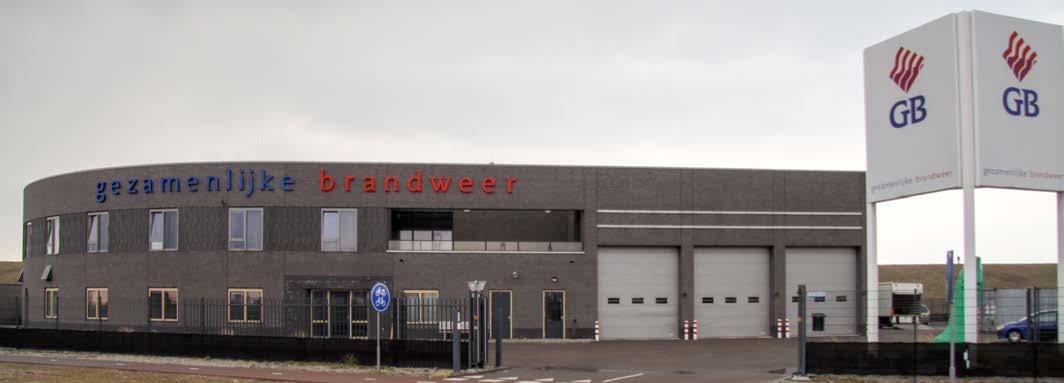
About Jochem van de Graaff
Jochem van de Graaff works at JOIFF-member organisation H2K as senior consultant and trainer on industrial emergency planning and response, and specialist on the topic of firefighting foam. H2K in provides firefighting education, training courses and consultancy to its customers.
Contact: j.vandegraaff@h2k.nl
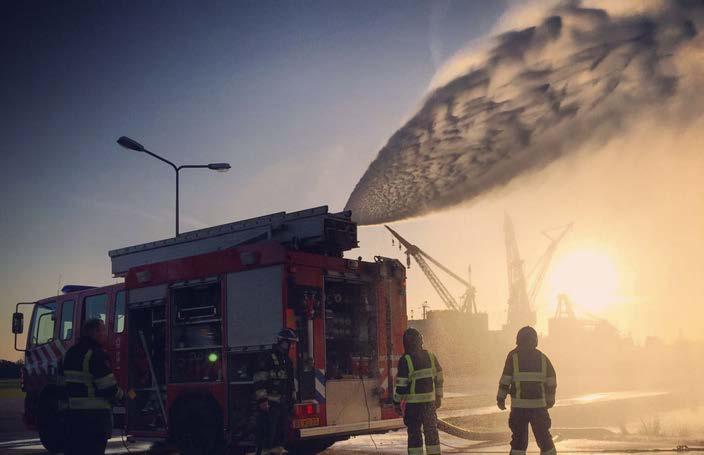 Maxima station: location of the pilot – Credit: Erwin Bakker
Maxima station: location of the pilot – Credit: Erwin Bakker
BasedinIreland,Sigteqaresolutionleadersinthe emergencyresponsesector.Weuseour20yearsof hardwareandsoftwaredesignexperiencetocreate systemsthatrespondtomultipleemergency scenariosandcustomisethemmeetyourspecific needs.




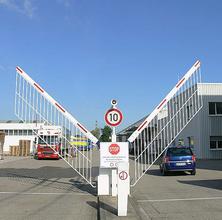

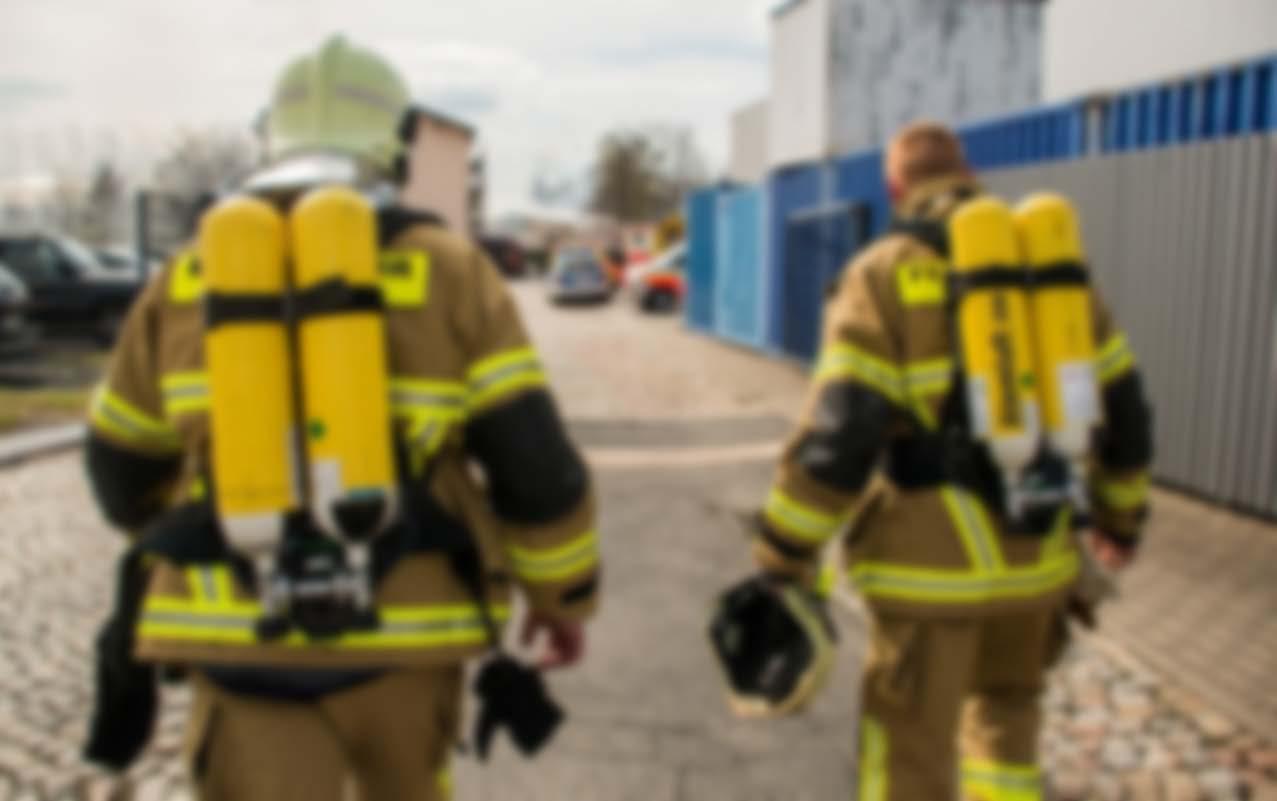
ByintegratingwithexistingfirealarmsandotheronsiteemergencysystemsourAlertNetlineof equipmentcapturesdatainrealtimeandpushes notificationstokeypersonnelwhilealsotriggering tasksforcriticalresponseoperations.
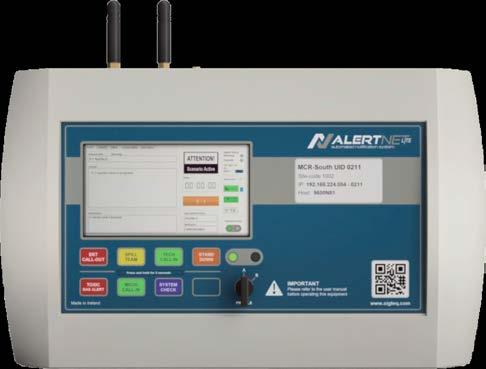


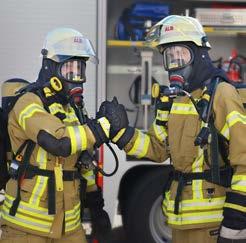


Understanding foam part 1: The application rate and the L Curve
By Eike Peltzer - Consultant - E.P.FIRESo we all kind of know it by now: AFFF will go away and we will all use fluorine-free firefighting foams one day. We also know that a transition isn’t easy and that AFFF has some unique properties that SFFF cannot achieve. That is why we look at the foam manufacturers to see what they come up with and we hope (or expect) it would suit all our needs. Something as good and as easy to use as AFFF. A dropin replacement. I don’t believe that is going to happen. The performance of fluorine-free foams has improved. We are seeing better results in extinguishment times and burnback performance. We are also getting foam concentrates with 1% proportioning rates and lower viscosities than five years ago. The tests results when comparing foam concentrates from different manufacturers are not that far apart anymore. But a drop-in replacement? Hasn’t happened yet.
So, what more can we do? I think we need to understand how foam works and how we can improve the performance of fluorine-free foams. Because it is not only about the chemistry. Not only about finding the best foam concentrate. I would like to take a deep dive into the factors that influence the performance of foam in the real world. This time: The application rate. Not new at all. But (I think), not very well understood.
What is the application rate?
The application rate is, of course, how much foam solution (not finished foam) you apply per minute and surface area. It is sometimes also called application density and is measured in L/min/m², mm/min or gpm/ft². Application rate seems to be an easy one: The more foam the faster the extinguishment. It’s true, but there is more to it. If you apply a lot of foam on a fire – let’s say gasoline in a fire pan – you get a relatively fast extinguishment. If you then repeat the test with a lower application rate (all other factors remain the same) it takes more time. If you keep on repeating the test this will continue until you hit a point where the foam is not able to extinguish the fire anymore.
You have reached the critical application rate. That is the minimum rate at which the foam is able to extinguish the fire. Below that rate the foam is being consumed by the fire as fast as it is being applied. If you draw a diagram of the extinguishment times over the application rate from the different tests, you will find that the relationship is not linear (see figure 1). Rather the times asymptotically approach the critical application rate on the left side and the curve has the shape of an “L” – this is called the L Curve (Fiala 1985: 25, Sheffey and Wright 1994: 3, Back and Farley 2020: 53). You could consider the L Curve as a representation of the extinguishment performance of the foam. The closer it is to lower left side, the better the foam.
1 4.074L/min/m²
is equal to 0.1gpm/ft²
The L Curve and the real world
The L Curve looks unimpressive, but the fact that the relationship between extinguishment time and application rate is not linear is of great importance in practice.
In other words: Your experience will tell that the curve is right. Some examples: In any fire you
need to maintain the minimum application rate or the foam attack will fail. Fortunately it is very low. Typically around 2L/min/m² (0.05gpm/ ft²) in our simple example with gasoline and a good performing foam. The gradient of the curve is negative and quite low at this point.
A small increase in the application rate will give you a big benefit in extinguishment time. Applying rates from standards like NFPA 11 or EN 13565 ensure that you have some safety margin to the critical application rate. If you calculate how much foam you have used in a real fire, you will find in most cases that you overshot. You have probably used way more foam than what was actually needed. Most likely this is somewhat unavoidable. But it is important to understand that at already high application rates you will not get a much faster extinguishment by applying even more foam (the gradient of the curve at this point is still negative but has a smaller value). If you have a big fire and you are at the end of the capability of your equipment, you are going towards the critical application rate and it will take more time to put the fire out.
Fiala,
Sheffey
Comparing AFFF and SFFF
If you use a different foam concentrate you would get a different L Curve. And the same is true if you change other parameters like the fuel for example. This is where it gets really interesting, because you can compare the extinguishment performance of two foams. Any two foams really, but for the sake of this example it should be an AFFF and a fluorinefree foam. Take a look at figure 2. The better performing foam concentrate (let’s assume this is the AFFF ) has an L Curve that is shifted to the lower left side. Faster extinguishment at lower application rates. But if you compare the two foams, it depends at which point you do that. At point A fluorine-free foam might be below its critical application rate. So without doing any other tests and without giving the full L Curve one could claim that “only AFFF did the job”. At point B you will get a big difference between the two foams and one could still argue that “AFFF is far better than fluorine-free foam”.
2 Applying foam by sprinklers requires generally higher application rates than used in the examples here, but that is a different story
3 You could argue about this. Some say that the L Curves (or the extinguishment performance) of AFFFs have shifted to the upper right side with the transition from C8 to C6 foams. The L Curves of SFFF have shifted to the lower left side in the past years for sure. Their performance has increased. Have they passed the AFFF L Curve? Or are they very close at least? That’s a bit too much detail for this article…
But if you increase the application rate even more (point C), the differences between the two foams get smaller up two a point where you would hardly notice a difference during a real fire.
Application rates in tests and in the real world
So the application rate really matters when you are comparing the performance of a fluorinefree foam to that of an AFFF. That is why standard tests are mostly done at low rates of about 1.6L/ min/m² (0.04gpm/ft²) to about 2.5L/min/m² (0.06gpm/ft²) . At these rates you will see the differences in performance between the foams. But practical application rates are much higher. Typical practical application rates start at 4.0L/ min/m² (0.1gpm/ft²) , many are at 6.5L/min/ m² (0.16gpm/ft²) and can be much higher.
Is the performance gap between AFFF and SFFF overrated?
So can it be that the performance gap between AFFF and SFFF is systematically overrated in test setups? Some test reports fail to acknowledge the influence of this at all. The FAA, for example, published their test results on 2 AFFF and 7 SFFF in a report in 2022. They conclude that “None of the FFFs evaluated had an equivalent or better extinguishing performance to AFFF.” (Casey and Trazzi 2022: 88). But they did not discuss the application rate once. Instead they choose foams rated ICAO Level B and tested them according to performance Level C. But the only difference between these two levels according to ICAO is the application rate. It is 2.5L/min/ m² for performance level B and 1.56L/min/ m² for level C. So it is no surprise that an ICAO Level B foam concentrate fails with an ICAO level C application rate. That is exactly why it is rated level B. As a practical application rate ICAO recommends rates of 5.5 L/min/m² (for level B foams) and 3.75L/min/m² (for level C foams). Tests like these are welcomed by fluorosurfactant manufacturers
and their lobbyist (Willson 2022), but hardly bring a fair comparison between AFFF and fluorine-free foams or help to gain a fair understanding on how they perform.
4 ICAO Level C, UL-162 Type III for AFFF on hydrocarbons
5 ICAO Level B, EN1568-3 Annex H, UL-162 Type III for SFFF on hydrocarbons
6 EN 13565-2
Manipulate Design your own test
You want to do some tests of fluorine-free foam yourself? Do you prefer AFFF or SFFF to look good? For AFFF choose a very low application rate like 1.6L/min/m² (0.04gpm/ft²). For SFFF choose a higher rate. 6.5L/min/m² (0.16gpm/ ft²) or even 10L/min/m² (0.25gpm/ft²) for example. If you only present these results and don’t show the extinguishment times from tests at other application rates, you can support your own opinion.
However, I don’t want to say that fluorine-free foams are automatically as good as AFFF in extinguishment performance as long as you choose a high application rate. There might still be an advantage of AFFF over SFFF and there are other factors to consider than just the extinguishment performance. But at practical application rates the gap is most likely much smaller than at those used in many tests.
Getting the full L Curve means a lot of repeats with different application rates. That is why not all test programs can afford to test at different application rates in addition to the other parameters they want to change. But the next time you are reading a test report, look at the application rate and keep the L Curve in mind.
For further parts of this series
“Understanding Foam” go to the Knowledge section of https://epfire.de/en
Eike Peltzer (eike.peltzer@epfire.de) is an independent consultant and owner of E.P.FIRE. He advises fire departments and end users of extinguishing systems on the transition from AFFF to fluorine-free foam.

PFAS foam transition
We are aware of your challenges.
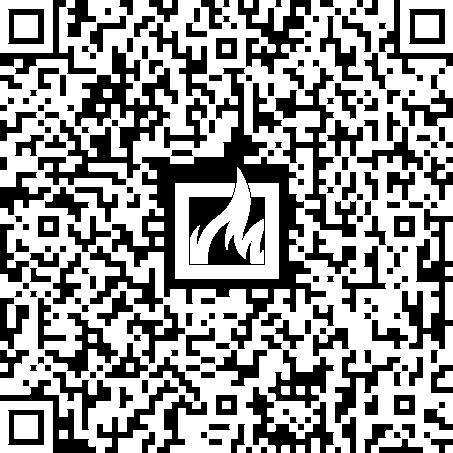
Kenbri Fire Fighting is your full service provider for PFAS Cleaning & Treatment solutions.
We combine our advisory services with extensive technical knowledge. Through our strong partnerships we can assist you from A to Z in the transition to fluorine free firefighting foam.
Advice
Cleaning solutions • Fluorine free firefighting foam • Technical engineering
Service & maintenance
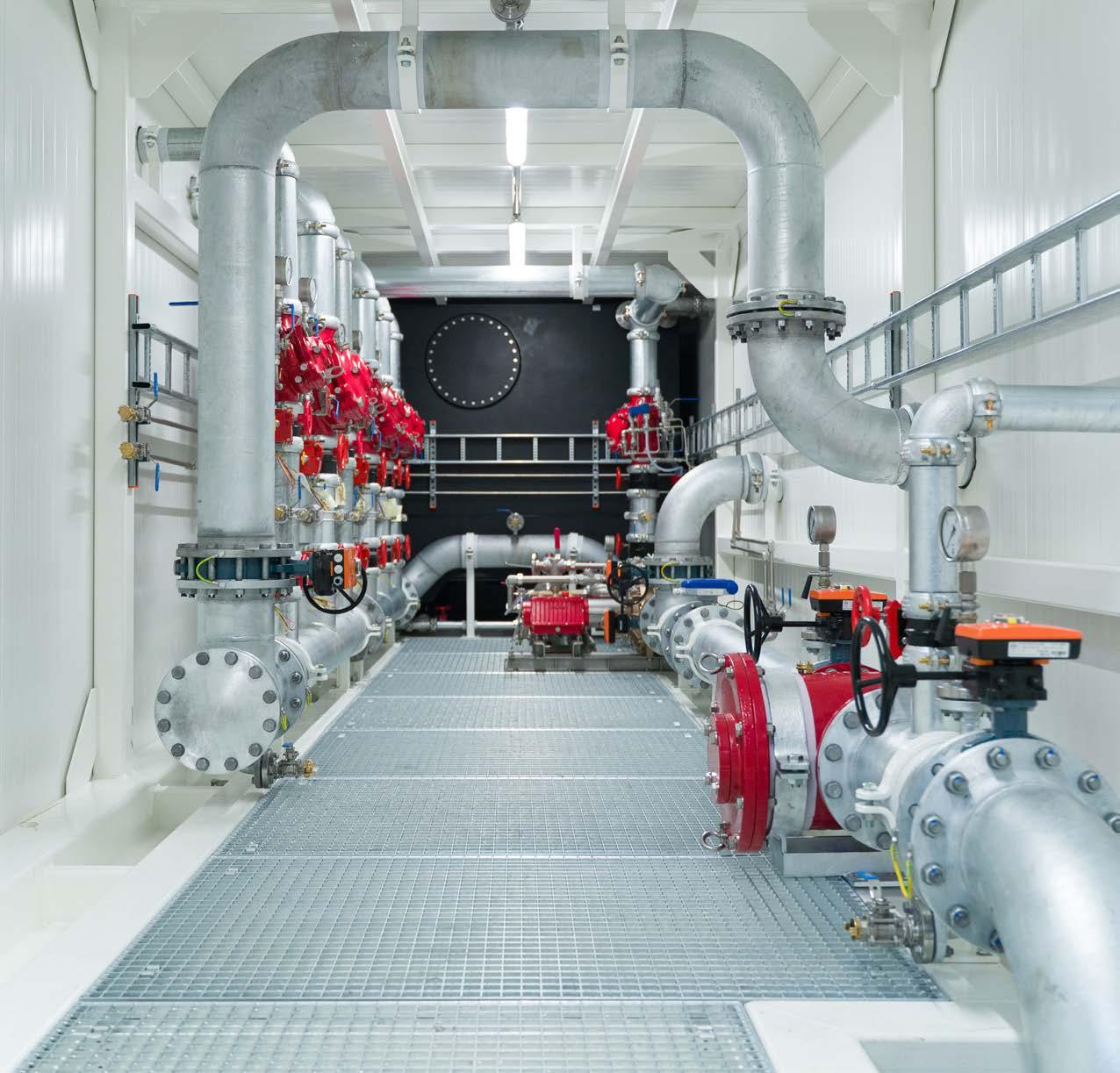
Guiding companies through the fluorine free foam transition
By Hans Huizinga - Fire Safety Consultant, KenbriThis year Kenbri celebrates its 40th anniversary. The company started out its business by offering solutions for firefighting in the (petro-chemical) industry.
Current partners such as BP, Lyondell, VOPAK and Shell benefit from Kenbri being able to advise and implement solutions quickly and professionally. In the field of firefighting foam, a collaboration with the Angus International Safety Group, allows Kenbri to offer its services regarding the fire-fighting foam transition, worldwide.
Kenbri Fire Fighting can guide customers from A to Z in the transition to fluorine-free firefighting foam. We do this in collaboration with our
fire-fighting foam manufacturer Angus International Safety Group and our strategic partner Arcadis. We carried out several projects and case studies at large petrochemical companies in the ports of Rotterdam and Antwerp. As such we have gained a lot of experience regarding the transition to PFASfree. With our services, we are much more than a supplier of PFAS-free firefighting foam.
Our activities start with an advisory process in collaboration with the customer. With subsidiary company Fire Protection Engineering (FPE) we can carry out the basic and detailed design such as hydraulic calculations. Specifically for firefighting foams and its difficult viscosity we are able to engineer existing and new systems with validated software.
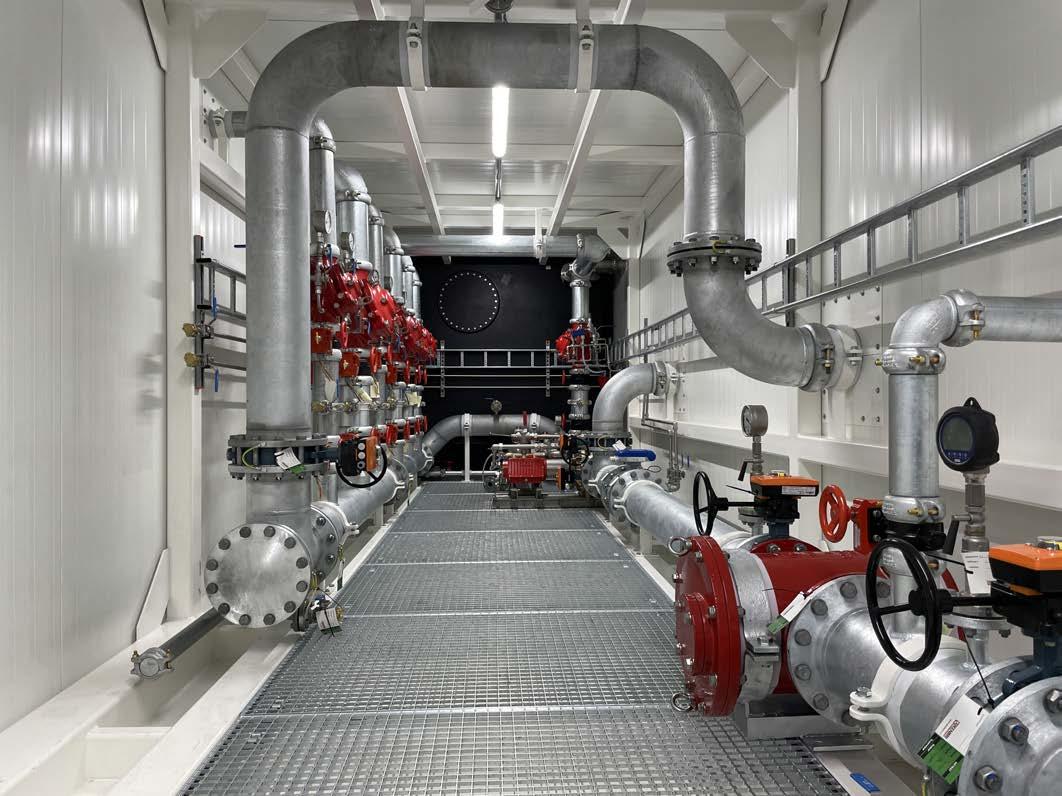
Developments are moving very fast. We have already performed this service for various costumer in Europe. In short, we give hands and feet to the transition process in a most professional and pragmatic way.
Raising awareness for fluorine-free firefighting foam
During the awareness phase on fluorine-free products we were highly involved in informing our partners on the necessity to switch to fluorine-free foam concentrates and the consequences it has for their business. Now we are ready to actually take our clients to the next phase of transition: the execution of the transition plans.
PFAS Cleaning & Treatment Solutions
Kenbri, in collaboration with our partner Arcadis, is represented in PFAS Cleaning & Treatment Solutions. PFAS Cleaning and Treatment Solutions focuses on the implementation and knowledge development of PFAS related projects in soil, water and piping systems. With this collaboration Kenbri can offer a total package of services. PCTS is an initiative with a focus on non-destructive treatment and cleaning of PFAS contamination in soil, water (groundwater, wastewater and surface water) and the complete fire suppression infrastructure.
“This includes a complete plan of action, but also determining the quality and carrying out accredited tests with fluorine-free firefighting foam on specific hazardous substances.” Kenbri has taken care of the transition processes for a number of major petro-chemical refineries in the Rotterdam port area. During this process Kenbri oversaw the complete Management of Change program.
Fire Fighting Containers with fluorinefree systems
In 2022, Kenbri carried out a major project at a company in the port of Rotterdam. For the safe storage of flammable substances, the company switched to the use of decentralized foam mixing systems. This decision was made after following our advice. As such, we fully assembled the FiFi Containers at our location in Numansdorp in the province of South Holland. This saved time and made working circumstances a lot more comfortable than on-site work processes in the winter months. In this way we could also deploy more staff and have all the materials to be installed at our disposal within a few meters, stocked in our warehouse.
We equipped the FiFi containers with FireDos water driven mixing systems. For fluorinefree foam, we work together with Angus Fire International, which developed Respondol, a new generation of fluorine-free foam. A product that is still in constant development and after a thorough
Testing, testing, testing
Never before have there been so many tests executed with fluorine-free foam, compared to fluorinated foam in the decades before. It is interesting to see that there has always been a rock-solid confidence that everything could be extinguished with fluorinated foam, without specific test results being at the basis for this trust.
For fluorine-free foam, the wheel apparently needs to be reinvented. We often see that only with a test certificate, the Competent Authority can be convinced that the fluorinefree foam can extinguish fires based on certain chemical components. These test certificates are mandatory when switching to the new foam, while in the past such tests were never requested when using fluorine-containing for the same chemical components.
Kenbri witnesses these increased testing requirements, as the company nowadays sends about twenty samples each week, collected at clients, to the laboratory for analyzing the components containing certain types of PFAS. The lab analyses which components are included. As such we can determine, when the company should switch to fluorine-free, based on the-by law- allowed substances. Although PFOS has been banned for a long time, and companies made adaptations to their firefighting foam, we still find this substance in many test samples. This is proof to us that cleaning and rinsing the installations – in the proper way- is really crucial for the complete removal of PFAS-containing residues. We notice that simply replacing the foam in the systems and vehicles without a thorough cleaning procedure unfortunately still leads to too high concentrations of prohibited PFAS in the extinguishing foam concentrates
Driven to constant improvements
Kenbri is at the forefront of offering the process from advice to realization regarding the firefighting foam transition, but when things get chopped, chips fall. We also notice that we sometimes meet the limits of our capacity, even when we apply state of the art techniques. But we learn from this. Although we aim to work flawlessly, this is not the case for all our highly innovative projects. However, it is important to recognize it in time and to correct the error. This drives us to continuously improve procedures and to take an increasingly pragmatic approach to the fire-fighting foam transition.
Transition Directive
The experience that cleaning systems containing fluorine is more difficult than expected, has in fact only been coming to light recently. Owing to many foam tests, this knowledge is now available. This drove Kenbri to take the lead in drawing up an industry guideline (or Directive). Such a Directive needs to be implemented in the Laws and Regulations. We do this in collaboration with Arcadis and the authorities having jurisdiction. The consultation on this is being broadly initiated with ministries and environmental authorities, because it must lead to a generally accepted guideline. This Directive
will describe how a company can and should switch to fluorine-free extinguishing foam, how to ensure that the systems are 100% clean and adjusted for fluorine free foam and how to achieve this? It will include to which standards the rinsing and cleaning has to take place in order to comply with the legislation in the field of fluorine-free extinguishing foam systems.
Fluorine Free Foam study tour
To demonstrate the possibilities of fluorinefree extinguishing foam and to create more awareness of the need for the transition, Kenbri Fire Fighting is organizing a practical study tour to France (Reims), where our Foam manufacturing facility is located. This is planned to take place in February 2023. If you are also interested in participating, please contact Hans Huizinga.
About the Author
In 2013 Hans Huizinga joined Kenbri Fire Fighting, after a career as instructor and fire fighting expert for special projects. Starting in a position as Sales Engineer, Hans now operates as Fire Safety consultant, while advising on all aspects of Industrial Fire Fighting with an emphasis on Fire Fighting Foam Concentrates and Fire Fighting Foam systems. In his free time Hans is also a volunteer fire fighter in his hometown.
Contact: hans.huizinga@kenbri.nl
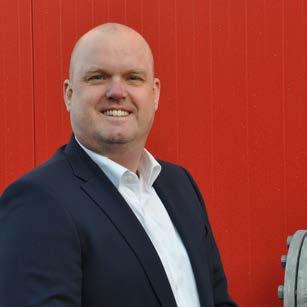
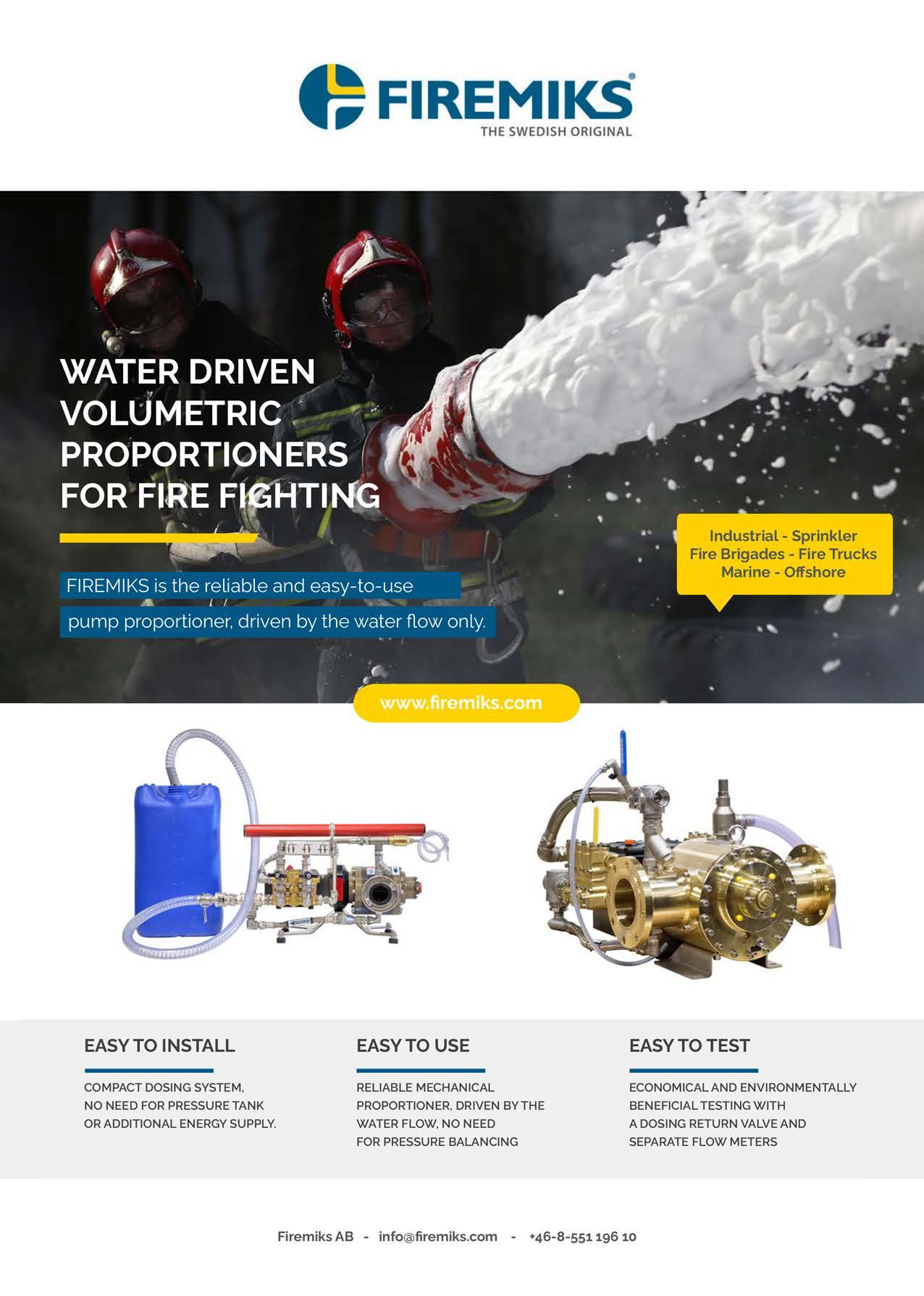
A mobile proportioner creating a handy and flexible resource for the Fire brigades
By Per Aredal - International Sales Manager, FIREMIKSWith a water driven volumetric pump proportioner, fire fighters can easily build a robust multi-nozzle system, easy to adapt to different firefighting situations. This means that one can use several nozzles at the same time independently of each other, quickly open and close them intermittently (pulsing), and place the nozzles at different distances and heights from the water driven volumetric proportioner. The proportioner itself can also be placed anywhere in between the main pump/hydrant and nozzles. As long as water is moving, above the minimum flow specified for each proportioner, the concentrate is accurately proportioned into the firefighting water stream.
A water driven volumetric pump proportioner, like FIREMIKS, has substantially lower pressure losses compared with inductors, resulting in a far longer throw length of the foam/water solution, enhancing the safe distance from the fire for the personnel, concentrate supply and the apparatus. Especially important at high-risk incidents.
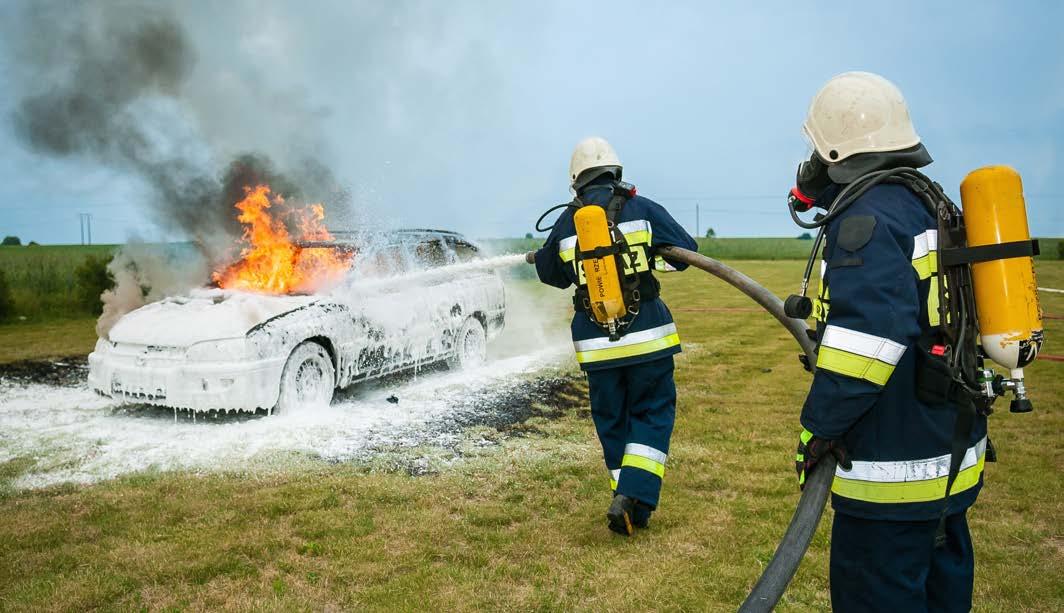
FIREMIKS proportioner works with all nozzle types, for example variable spray nozzles, low expansion and medium expansion nozzles, the nozzle type doesn’t affect the dosing accuracy. All FIREMIKS mobile models are equipped with separate strainer to be placed on water motor inlet to ensure that only clean water is entering the water motor.
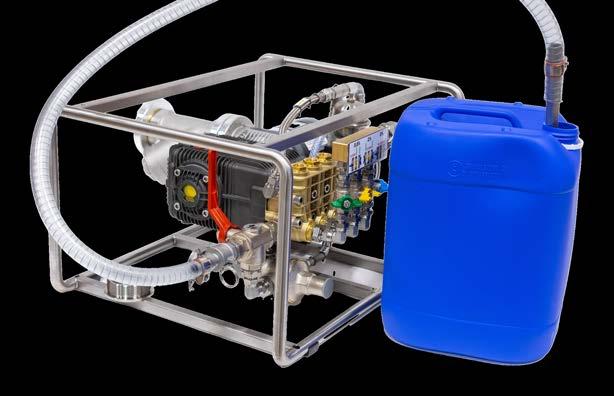
Wide range of proportioning options.
A water driven pump proportioner equipped with piston pump has normally 1% and 3% as standard fixed dosing rate. Other fixed dosing rates, as for example 0,5% and 2% are available as well as selectable dosing rates, such as 0,30,6-1% and 1-2-3% in one unit.
The latest development in FIREMIKS mobile proportioner program are units with selectable 0,5-1-3%, available in two flow sizes 600 and 1000 lpm. It is the only brand on the market that offers the dosing selection 0,5-1-3% with only one foam pump. This design gives easy understanding of the unit’s function and selection of dosing rate is done with easy to understand shut-of-valves at the piston pump head. Changing dosing rate is possible without stopping the fire fighting.
Suitable for the new SFFF concentrates.
FIREMIKS is uniquely positioned by being able to offer two types of pumps: Piston pump models for viscosities from 1 cP (including wetting agents) up to around 4000-4500 cP and Gear pump models for viscosities up to around 8000 cP (Brookfield viscometer spindle 4# at 30 rpm).
Wide range of different flow sizes
From the smallest unit with max flow of 180 lpm, to units with max flow of 2400 lpm, FIREMIKS offer eight different flow sizes for mobile applications. The units are equipped with handle and bottom bracket or with a sturdy surrounding frame, and if requested, supplied with lockable wheels. FIREMKS proportioners
gives a precise dosing rate within the approved tolerances by EN, NFPA , FM, etc., in a wide pressure and flow range.
Installation on Fire trucks or trailers
Any water driven proportioner can easily be installed fixed or semi-fixed in Fire trucks or trailers, connected to a larger foam supply. The main advantage in comparison with Around-the Pumps venturi systems is the wider operating pressure range, and that one avoids contaminating the water pump with foam concentrate. The main advantage in comparison with electronic systems is the simplicity and that it is not dependent on any electric energy source making it possible to disconnect the unit, if installed semi-fixed, and to be used as a mobile unit when required. Another advantage is that, since the rpm of the unit follows the flow rate, dosing is immediately correct even if nozzles are quickly opened and closed (pulsing).
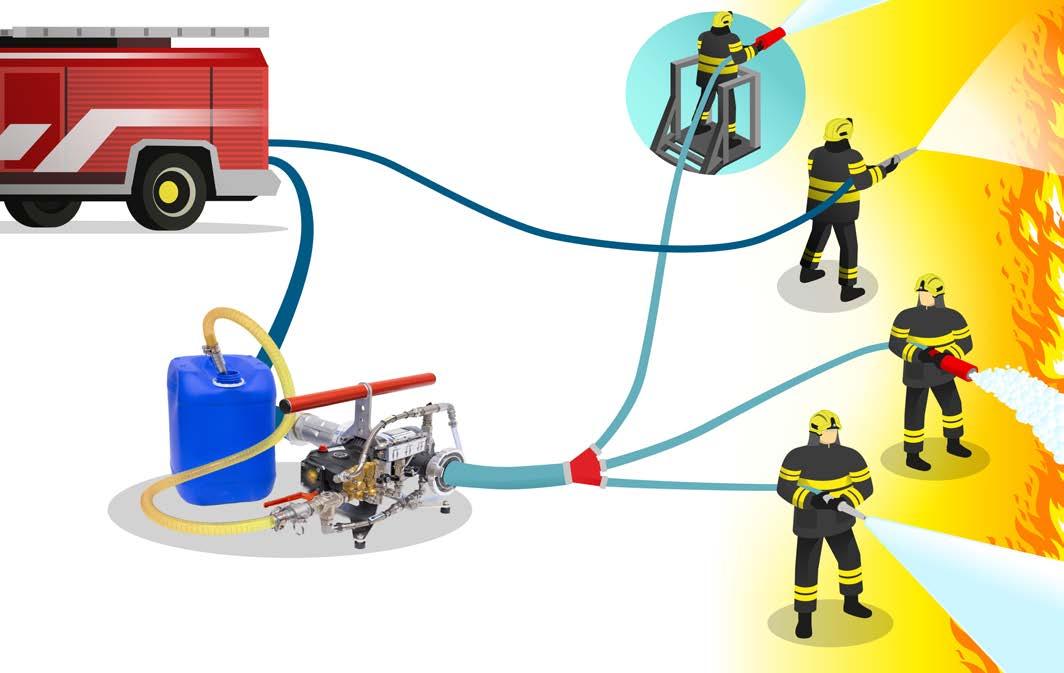
Per Aredal is International Sales Director with +30 years of experience of producing and delivering water-driven volumetric proportioners worldwide.
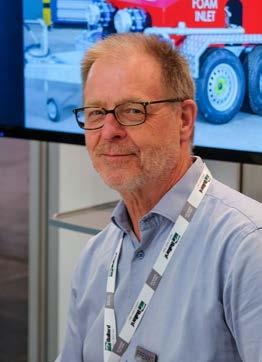
For more information contact per.aredal@firemiks.com or visit www.firemiks.com
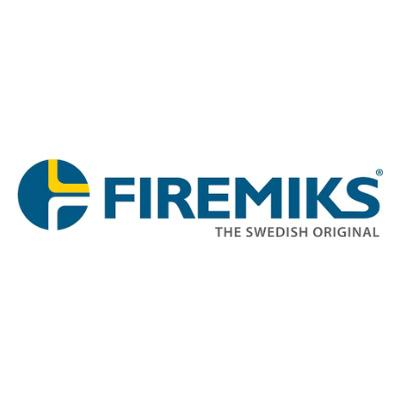
Making the Transition to Fluorine-Free Foam
By Covadonga Perez - R&D Manager, Perimeter SolutionsRegional governments are proactively introducing regulations to stop the intentional use of per- and polyfluoroalkyl substances and other chemicals in firefighting foams. The Queensland Government led the charge in Australia, issuing regulations in 2016 that banned the use of firefighting foams containing Perfluorooctane sulfonate (PFOS) and perfluorooctanoic acid (PFOA), and started to phase out PFAS with the target date of 2019.1 Additional new regulations on the use of PFAS are frequently introduced around the world.
This includes the European Union, where the use of all PFAS will be phased out, except for where they are proven to be irreplaceable and essential to society. The European Chemicals Agency (ECHA) has investigated the environmental and health risks posed by using PFASs in firefighting foams at the request of the European Commission. Currently, PFOS/PFOA and derivates are already regulated in EU as Persistent Organic Pollutants and PFOA will not be allowed after July 4, 2025.2 Proposals are also in place to restrict the use of PFHxA and/ or any PFAS in firefighting foam, banning them from being placed on the market, or being used in the formulation of firefighting foams, after transition periods that vary by industry sector.3
With the presence of PFAS in traditional firefighting foams, these rules affect everyone in fire safety – from the municipal market to petrochemical, aviation and others. To remain in compliance with these new local and global requirements, many organizations are making the transition from older foams that contain PFAS, such as aqueous film forming foam (AFFF), Fluoro Protein Foam, and alcoholresistant aqueous film forming foam (AR-AFFF), to newer, fluorine-free foam equivalents.
The municipal market will have a relatively easy path forward toward fluorine-free technology. For the most part, municipal fire crews don’t typically deal with large fuel-in-depth fires that consume thousands of liters of foam concentrate, so when they transition to fluorine-
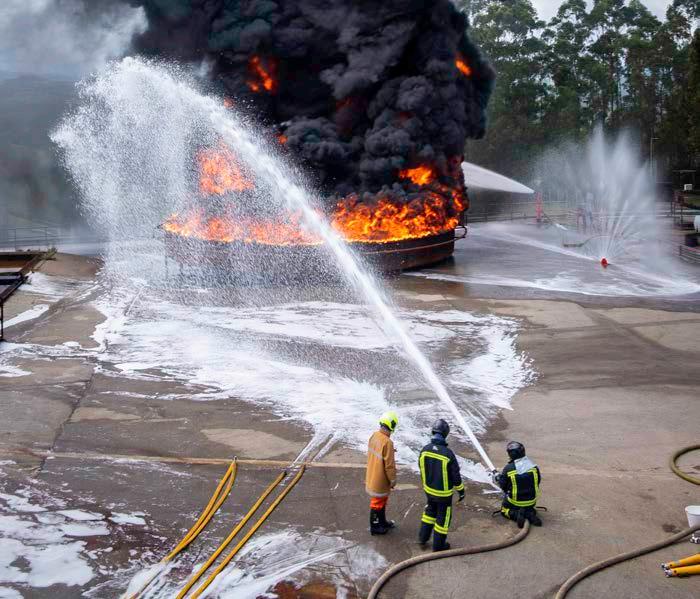
While AFFF solutions are still the most effective option in some scenarios, recent tests— including those conducted by LASTFIRE—have demonstrated that fluorine-free foam can achieve high-performance results, even on direct application on fuel in-depth gasoline.
free foam (FFF) they may have to change their proportioning systems and end of line discharge devices, but that is relatively easy compared with other organizations. For other industries, there are several factors that need to be considered before moving to FFF.
Converting to Fluorine-Free Foam? Here’s what you need to know.
Organizations need to realize that converting to FFF may take time and could have an impact on budgets. It requires a multidisciplinary discussion and decision between safety, engineering, environmental and purchase departments. Once the decision is made, one of the first things to consider is the type of fire hazards present at your location,
and which fuels you have on hand—hydrocarbon or polar solvent – spill fires or fuel-in-depth fires? This will determine the type of fluorinefree foam that you need. While many of today’s advanced FFFs can be used to suppress both types of fuel fires, when compared to traditional AFFF and AR-AFFF, the flow rate (application rate) needed to extinguish large fuel-in-depth fires may need to be higher with the FFF analogs. Additionally, since FFFs do not have the same fuel-shedding characteristics found in AFFFs, the application of the foam will likely have to be gentler in order to prevent contamination of the foam with the fuel. These two factors will impact many of the decisions that need to be made when making the transition from fluorinated foams to fluorine-free foams.
Generally speaking, there are two broad methods by which foam may be applied to a fire, manual firefighting operations and fixed or semi-fixed foam systems. In both cases, the ability to get the proper foam solution flow rate (i.e., application rate) will be one of the very first considerations. If it is deemed that one needs a higher application rate based on the particular FFF that is being used or the particular fuel to which the foam is being applied, then this will be one of the very first considerations. Determine if you have enough water and pumping capacity to handle higher flow rates. For manual firefighting operations, this may mean there is a need for larger pumps or more pumps, higher capacity proportioning systems, lager diameter hoses or more hoses and manifold systems. While for fixed or semi-fixed foam systems this may require you to change out the fire pump and driver to a larger model, the need for larger diameter distribution piping as well as larger foam concentrate storage, and larger foam concentrate proportioning systems. With both manual operations and fixed or semi-fixed systems, this will likely mean that end-of-line discharge devices will also need to change in terms of size or number of devices in order to handle the increased total foam solution flow. Proper engineering considerations by competent individuals or engineering firms will be a must.
Equally as important as achieving the proper application rate (fire flow rate), is the ability to make foam with the proper foam quality parameters of both expansion ratio and drainage rate. Currently, FFFs do not have the same ability to shed fuel when applied to hydrocarbon fuel applications or to prevent foam blanket deterioration when applied to polar solvent (water miscible fuels) applications as do their fluorinated counterparts. End-ofline discharge devices may need to be changed out for air aspirating devices and operating pressures for those devices may need to be increased to make them work effectively. In manual firefighting applications, if a straight stream or variable pattern end-of-line device is changed out to an air aspirating device, two important considerations must be taken into account: First, the total range of the devices will become much lower; thus forcing the firefighter to be much closer to the fire and heat; and second, without a variable stream pattern, the firefighter will not have the ability to switch to a fog pattern to absorb some of the heat, should there be an unforeseen thermal event. And, of course, more discharge devices or larger discharge devices may need to be employed. For fixed or semi-fixed foam suppression systems, more end-of-line discharge devices may be needed in order to meet the application rate requirement and distribution piping.
Proportioning devices and foam concentrate storage tanks may also need to be changed to accommodate the increased flow. As with manual firefighting operations, particular attention must be paid to the foam quality as it may mean that operating pressures may need to be increased. For sprinkler suppression systems, it may mean that conventional sprinkler heads may need to be changed out to air aspirating or foam water heads. And, if the sprinkler system is a wet pipe system, it may need to be converted to a deluge type system to accommodate foam water heads. Particular attention should also be paid as to whether sprinkler heads have been tested and approved for use with the particular FFF and the particular fuel that the system is protecting by a third-party agency or other authority having jurisdiction.
If an organization decided that they can use their current fire safety equipment – whether it’s a sprinkler system or another distribution system – they need to remember that they are using piping, discharge devices, etc. that are, most likely, contaminated with PFAS-containing foams. The level of “contamination” allowed by a government entity or other authority having jurisdiction will be the deciding factor as to whether or not existing equipment and distribution piping can be used with FFFs. Cleaning out all the piping and the hardware can be a nightmare, and a heavy expense – and when the cleaning is complete, the equipment may still contain PFAS residue at detectable levels with the consequent waste disposal. Perimeter Solutions has helped a number of clients in several countries make the transition to FFF, and we often recommend replacing all their solution pipe, because large amounts of pipe will be more affordable than the cleaning process to drop the levels of PFAS below the allowable threshold.
It is also critical to attend all possible workshops, presentations, speeches, etc. to keep up to date with the innovations in the market, both in terms of fire-fighting foam concentrates and equipment. Working together with companies in the same industry facing similar situations can also provide support with the transition.
Making the Transition
AFFF was developed more than 60 years ago, so it has had a huge head start in innovation when compared to its relatively new FFF counterpart. When converting to FFF, end users should realize that they will need to train their fire brigade on how to use the new product. Fires are not fought the same way with FFF, and as discussed in the previous section, it might not involve the same equipment. In the testing of our products as well as competitive products,
we have found that FFFs are much more sensitive to different types of fuels and different acceptable foam qualities. As mentioned earlier, higher application rates are required in some cases and organizations will have to conduct their own on-site testing to determine the right levels, rather than relying on outside recommendations from industry consultants or on their previous experience with AFFF solutions. Just because a product works on heptane or other standardized test fuel using a certain application rate, that doesn’t mean it will work the same on other fuels or fuel types. Completing thorough testing with a trained brigade and having an in-depth preplan will prepare the organization for almost any scenario. The application methodology may need to be changed to help minimize the plunging of foam into the fuel. This could include banking the foam off a vertical surface or rolling the foam into the fire rather than applying the foam directly onto the fuel surface.
Regulations have spurred many companies to move forward with the transition to FFF, regardless of their industry. While regulations are the overall driving force, another factor for some organizations is the improved foam quality that many FFFs have (especially slower drain times) when compared to AFFF. When an AFFF is applied it starts to break down, and after approximately 20 minutes, more AFFF may need to be applied to secure vapors coming off of the fuel. With FFF, after you make the first application, the improved drainage time means that a repeat application may not have to be made for 40 to 60 minutes or even longer in some instances.
Making the transition will be easier for larger organizations. Leadership at one of our clients in the chemical industry made the decision to exit fluorinated technology and directed the company to move to fluorine-free foam for their internal sprinkler system. At the time they made the change, Perimeter Solutions’ SOLBERG® RE-HEALING™ RF3 3% Foam Concentrate was the only industry product that had reasonable listings. The organization used the SOLBERG concentrate on hydrocarbon fuels, but there wasn’t an industry product available at the time that had industry listings for polar solvent fuels. The company opted for a different 3x3 fluorinefree solution to address polar solvents, but that solution didn’t have any sprinkler listings. To accommodate the new fluorine-free foam, they designed their internal system for a 6% solution and doubled their application density. They had to increase the size of their bladders, and then had to increase it even more due to the application density.
To remain compliant with increasing regulations, many organizations are making the transition from older foams that contain PFAS, such as aqueous film forming foam (AFFF), Fluoro Protein Foam, and alcohol-resistant aqueous film forming foam (AR-AFFF), to newer, fluorine-free foam equivalents.
They also had to increase the size of their piping to account for the higher flow rates. Being self-insured, this organization could make changes like that with no issues. An insurance underwriter would not approve of that kind of system, so smaller organizations that must rely on their approval would not be able to get away with it. They simply don’t have the same kind of resources as large organizations. When smaller organizations make the transition, they need to be diligent in their product selection and confirm their performance on the specific fuel hazards they face to ensure that the system and products they use are actually going to work.
Looking Ahead
How the transition to fluorine-free firefighting foam will look in the years ahead will vary by country. Central and South America, the Middle East, Africa and most of Asia (with the notable exception of China) have little current interest in moving away from fluorinated foam technology. In Europe, organizations are on the fast track to comply, as are Australia and New Zealand. As we have mentioned, firefighting foams containing PFOS and PFOA are banned throughout the entire European Union starting in 2025. As countries—and regions—move to ban these ingredients, we could potentially see manufacturers moving production facilities to
areas that are more amenable to these technologies. The United States, Canada and other countries are pushing forward with new regulations, and we will see the transition to FFF continue in those regions. We believe that there will be ongoing exemptions as producers of FFF work to close the gap on the 60-year innovation lead AFFF has had. AFFF solutions are still the most effective option in some scenarios but several tests, including those conducted by LASTFIRE, continue to demonstrate that FFF can achieve high-performance results, even on direct application on fuel in-depth gasoline, easing previous performance concerns.
For those who have been in the industry and have witnessed the evolution of AFFF and alcohol-resistant (AR) AFFF, you may recall that they were proportioned at up to 9% foam concentrate. Those percentages dropped to 3%, and even to 1% in some cases, meeting or exceeding the same level of effectiveness. It is likely that fluorine-free foams will see the same type of development over time and will ultimately catch up to the fluorinated foams with the same proportioning percentages and application rates. It is just a matter of time, and there will be reasonable allowances to ensure that FFF can meet the efficacy of fluorinated foams, and that the end goal of protecting property, the environment, and saving lives is met.
About the Author
Covadonga Pérez Rodríguez is R&D Manager at Perimeter Solutions. She has worked in the fire safety industry for more than 20 years, starting her career as Laboratory and Quality Manager at AUXQUIMIA in 2002. She earned her Ph.D. in Analytical Chemistry from the University of Oviedo.

Contact: covadonga.perez@perimeter-solutions.com
1 “Government moves to ban use of PFOS and PFOA firefighting foam in Queensland”, The Queensland Cabinet and Ministerial Directory, Queensland Government, 8 July 2016, https://statements.qld.gov.au/statements/78276; and https://www.qld.gov.au/environment/management/environmental/incidents/pfas/firefighting-foam, Accessed 12 December 2022
2 “Guidance Leaflet PFOA in Fire-Fighting Foams,” Environmental Protection Agency, https://www.epa.ie/publications/monitoring--assessment/waste/65203287-PFOA-EPAFactsheet-Final.pdf, Accessed 12 December 2022
3Brabcova, Karolina, et al., “Restriction of PFHxA and PFAS in firefighting foams, “European Chemicals Agency (ECHA), 27 June 2022, https://echa.europa.eu/ documents/10162/2082415/20220627_reply_ngo_letter_en.pdf/28b88ab9-15ad-3cb0-10bd-7861d2c456c6?t=1662624253940, Accessed 13 December 2022
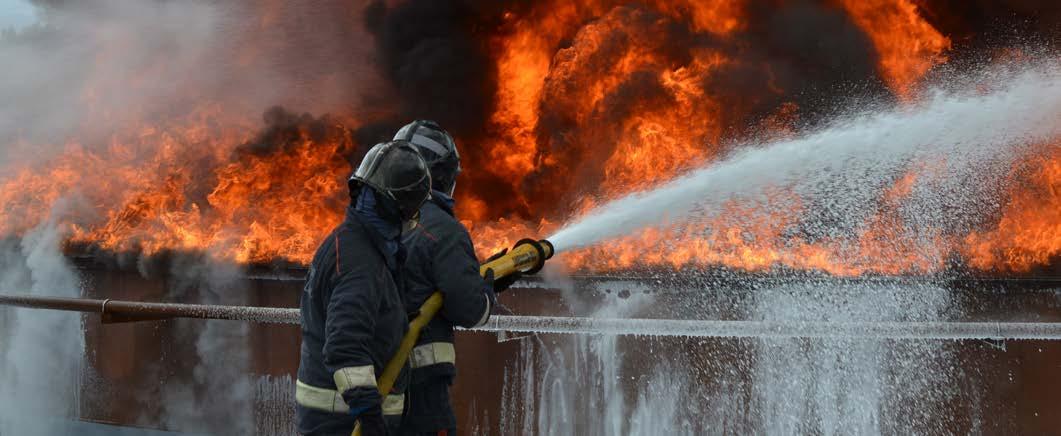
Check these 15 Key Questions Before Transitioning to Fluorine Free Foams (F3s)
By Mike Willson - Wilson ConsultingAs a result of regulatory changes, legacy longchain C8-foams are being phased out of use with safe destruction by high temperature incineration (≥1,100oC) or other approved effective destruction methods. It’s necessary because of concerns around potential impacts on human health and our environment when such foams are not adequately contained and treated, although significant environmental problems can eventuate from any foam use unintentionally discharged into our environment. Restrictions are widely being placed on firefighter training, system testing and calibration to prevent environmental releases, halting legacy problems from perpetuating. Consequently, successful elimination of virtually all legacy training emissions is being achieved. Such pre-planning to prevent or minimise any foam discharges to our environment has become a critical part of emergency risk management.
Choosing alternative agents F3 or C6?
Many foam users still harbour concerns about how effective alternative agents will be, whether Fluorine Free Foams (F3s), or short-chain C6foams (C6-foams). Choosing which agent to use should not weaken existing life safety and critical infrastructure protections, so it is important to give adequate consideration, seek factual fire performance data before making decisions that may affect lives and livelihoods at your facility.
Ensure risks and benefits fully evaluated
Most fire professionals using Class B foams are overwhelmed by articles, ads, debates and salespeople all with ‘opinions’, but relevant factual evidence seems harder to find. Basing decisions on factual data is an important step in protecting lives and better-informed decisions.
Fire Brigades increasingly use F3s, shown effective on vehicle roll-overs, spills and smaller industrial fires, where higher F3 application rates usually result from using standard equipment. F3 foams are sometimes put into service protecting high hazard flammable liquids, but care must be taken to ensure a
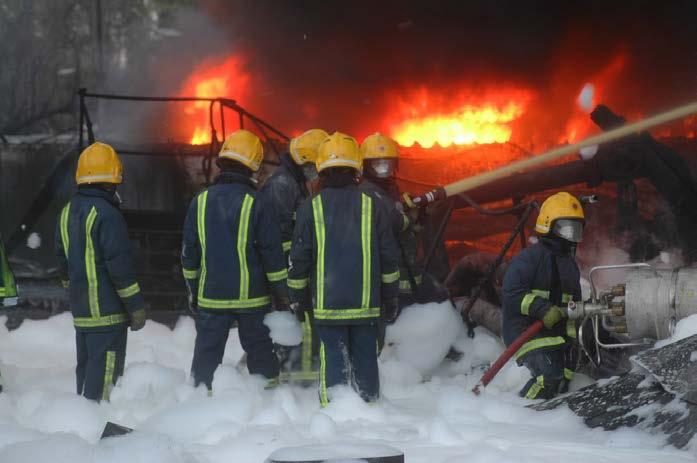
thorough evaluation of benefits and risks.
Approval testing suggests leading F3s can provide equivalent fire performance results to legacy C8-foams but results may be misleading us, when many approvals only use heptane test fuel, including EN1568-3, UL162, FM5130, Lastfire, IMO etc. These do not replicate F3 behaviour on more foam destructive fuels like gasoline blends more commonly used and stored by industry. Major comparative fire testing studies by US Federal Aviation Administration (FAA), US Naval Research Laboratory (NRL), Sweden’s Research Institute (RI:SE), NFPA Research Foundation (NFPARF), Batelle research have each checked these more volatile fuels, plus specific UL 162 (Underwriters Laboratory) listings confirm that higher F3 application rates are usually required for effective extinguishment of gasoline, E10, even Jet A/A1. So check your foam’s capability on specific fuels you are using, potentially including crude oil, naphtha, condensate, gasoline blends, Jet A/A1, as well as any specific polar-solvent fuel inventories.
A ‘Road Map’ for transition
US National Fire Protection Association Research Foundation’s (NFPA-RF) “Fire Service Road Map” (May 2022) has provided valuable
guidance for foam users. It confirms “The new fluorine-free foams are similar to the legacy protein foams in that they rely solely on the foam blanket to contain the fuel vapors to extinguish the fire (i.e., fluorine-free foams do not produce a surfactant film on the fuel surface like AFFF). As a result, air-aspirating discharge devices may be required to optimize the capabilities of these products.” Cautioning “However, it is incorrect to assume that these new FFFs [F3s] are a ‘drop-in’ replacement for AFFF, even though they may have a specific listing or approval. At this time, there is too much difference between specific FFF’s in properties and performance to suggest that the class can be a drop in replacement for the AFFF class of foams.” Foam quality is a critical consideration “…FFFs tend to lose effectiveness when discharged through non-air-aspirating nozzles that produce lower aspirated/aerated foam with expansion ratios less that 4-5. … Specifically, reduced foam quality can be compensated for by increased application rate and vice versa.”
F3s are yet to be proven similarly effective in major incidents, making C6-foams often necessary alternatives for emergency use on high hazard flammable liquid incidents, particularly where existing system
application rates cannot be increased, or delivery devices are unable to be changed. Sometimes C6-foams are restricted or banned without thorough consideration of existing system performance benefits and potentially increased safety risks. A full cost-benefit analysis is a useful tool for the entire foam system performance including potential modifications, to clarify decision-making before embarking upon such major safety changes.
Two studies show small PFAS health impacts
Research confirms most C6-foams provide equivalent fire performance to legacy C8PFAS foams, without bioaccumulative, nor toxic characteristics. 2013 research confirmed excretion of C6-PFAS from humans via urine during its short human half-life averaging 32 days, rather than 3-8 years human half-life of restricted legacy C8-PFAS. A major health study (Dec.2021) of three AFFF-impacted Australian communities near Defence sites against similar non-exposed communities, found “limited evidence to support a contributing link between PFAS exposure and most adverse health outcomes included in the study. For most of these outcomes, the differences in rates between PFAS affected and comparison communities were relatively small. The evidence for other adverse health outcomes was limited. …People living in all three PFAS affected communities, irrespective of PFAS serum concentrations were more likely to have experienced psychological distress than those who lived in comparison communities. In other similarly PFAS affected communities, the overall findings relating to PFAS exposure are broadly applicable.”
Findings supported by a study of 799 Australian aviation firefighters and vehicle technicians (Dec.2020), sampling 40 PFAAs (a subgroup of PFAS) in blood serum, were mostly not detected or in less than 15% participants (incl. PFHxA). Only six PFAS were detected in 90% participants all long chain C8-PFAS, half strongly correlated to Lightwater AFFF use pre-2005. It confirmed “Overall health associations found were relatively small and did not result in an increased risk of out-ofrange (potentially abnormal) values across the serum PFAA concentrations in this study. Participants had PFOA concentrations similar to general population, indicating no increased exposure through occupational activities to this chemical.” Tightening regulatory restrictions in most countries are focused around firefighter training (requiring containment, collection and safe disposal) while C6-foams are still widely permitted for emergency use.
Key questions ensure continuing safety
Foam users are being faced with increasingly complex choices, so it’s important to obtain clear written answers to key questions, while benchmarking F3 findings against existing fire system performance to avoid unintended consequences or common pitfalls.
These 15 key considerations should help maintain your facility’s current fire protection standards of life safety and critical assets, without being unnecessarily compromised.
1. Are your existing and proposed flammable liquids currently on site effectively protected by F3? Standard test fuels are not always representative of your hazards, especially with F3s so seek test data on your specific fuels like crude oil, condensate, naphtha, gasoline blends, Jet A/A1 aviation fuel, etc. Research confirms most F3s require higher application rates/ longer operating times on such volatile fuels.
2. If storing or handling crude oil, what F3 application rate reliably extinguishes, before any boil-over may arise? Achieved at 0.22 to 0.25 gpm/ft2 (9-10.25 L/min/m2) rates with premium AR-AFFFs on crude oil, firm F3 recommendations using meaningful scale test data are needed. Expect higher recommendations than AR-AFFF.
3. Could longer extinguishment times increase fire spread and incident escalation risks? Aiming to get flames out fast, protecting firefighters while minimizing risk of fire spread or incident escalation into new areas, is usually a key objective, which could be more challenging using F3s. Check what F3 re-application frequency is necessary after successful extinguishments or unignited fuel spillages? Faster foam blanket deterioration may require increased and/ or longer applications, which may vary with different fuels, potentially requiring extra F3 storage.
4. Entering F3 blankets during firefighting or rescue operations – is that still safe? Guidance in this area is always difficult and F3s may vary with different fuels or delivery devices. NFPA-RF [paraphrased] cautions ‘you are transitioning to a less forgiving agent, solely reliant on the foam blanket effectiveness from gentle application’. Pre-planning, training, incident command practices and decision making all depend on critical knowledge for firefighter safety and reducing risks.
5. Does a total system engineering approach (eg. UL/FM protocols) highlight any concerns? Foam concentrates, proportioners, foam makers and the fuel being protected should all be
demonstrated effective together and listed through independent 3rd party approvals. NFPA-RF advises F3 systems “will need to be designed and installed within the listed parameters in order to ensure a high probability of success during an actual event. …it typically took two passes to extinguish all the fires [with F3] as opposed to one for AFFF.” Check more viscous F3s still meet % proportioning rate accuracy requirements year-round, while remaining effective with existing delivery devices, otherwise consider replacements.
6. Has a full cost-benefit analysis for your F3 transition been conducted? Keeping control of expected costs, time-lines and fire performance helps ensure existing safety protections are not unintentionally compromised, and all expected benefits are delivered. Consider alternative solutions, including optimisation of existing C6foam containment and collection during major emergencies, which may prevent potentially increased containment for F3s.
7. Is your F3 compatible with other agents used on site? Dry Chemical often discharged alongside, or above your foam, may cause partial or instant F3 collapse. Limited dry chemical compatibility was found by FAA in six of nine leading F3s recently tested. One ignited immediately.
8. Are current application rates and back-up stock levels still appropriate? F3 inventory levels may need increasing if higher application rates or durations are required. Check your mutual aid group has usable compatible stocks, plus quick re-stocking facilities following incidents.
9. What is your F3’s storage life and reliability record? Ensure 3 or 5-yr storage samples have been tested to verify it passes, without gelling or separating, and still extinguishes volatile fuels as effectively as when new? If not, have an aged F3 sample tested by an approved independent laboratory to verify continued effectiveness on your flammable fuels, avoiding performance deterioration over time. If using an AR-F3 also ensure long-term stability on your specific polar-solvent fuels.
10. Does your F3 contain toxic, persistent, or harmful ingredients? NFPA-RF cautions “It needs to be understood that the elimination of PFAS and/or fluorine from the product does not address all the potential health and environmental hazards.” Do Safety Data Sheets (SDS) provide aquatic toxicity (usually worse than AFFFs), human health data and residual Fluorine/PFAS levels on the complete F3 mixture, not just key components?
11. What level of existing system residual PFAS is ‘clean enough’? NFPA-RF cautions “To date, there is no clear guidance for how clean final rinsate water must be to satisfy local regulators (i.e., it is currently not mentioned or is undefined). Discussion has been centered around trying to meet either the EPA drinking water advisory level for PFAS (70 ppt), the 1 ppb total PFAS requirement in the NDAA for DoD foams, or the 1 ppm PFAS that has become adopted by other industry standards (UL-162) and throughout Europe (ECHA).” So define residual ppm/ppb PFAS levels of system rinsewater and F3 concentrate, before installation. FAA reported (Jul.2022) five of seven leading F3 concentrates contained high TOF (Total Organic Fluorine) levels of 10-87ppm (US EPA Method 537.1, 2020). Be sure of your chosen laboratory’s ability to accurately test at detection levels necessary for concentrate, foam solution and rinse-water.
12. Has alternative, equivalent fire cover been arranged during your F3 transition? Several days or weeks may be required before system modifications, re-commissioning and reactivation are complete. Is a whole area/site shut-down envisaged?
Turn-arounds, maintenance and facility shutdowns are often considered the most dangerous times with contractors and unexpected problems often arising during operational ‘winddown’ and ‘start-up’.
13. Has extended containment been considered? Potentially necessary if higher application rates and/or more frequent F3 top-ups during incidents are likely, ensuring collection and containment of firewater run-off also prevents potentially polluting overflows. NFPA-RF recommends containment and collection of all F3 solutions with safe disposal, according to applicable regulations.
14. F3 system commissioning recorded? Include video footage documenting your system effectiveness and competency, before any future major incident. 15. Do existing training programs need adjusting to ensure F3 is safely managed and operated? NFPA-RF’s Road Map advises “the industry trend is towards collection and disposal of F3s in the same manner as AFFF today, so unfortunately the ability to train with these foams will have the same cost burden as the legacy AFFFs requiring special
facilities and waste containment/collection.” Proof of effectiveness and competency from F3 transitions, ensures your site’s adequate protection from future fire dangers. Training with Mutual Aid groups ensures abilities and limitations of each foam being used at a major fire emergency are understood …before fire strikes.
NFPA-RF’s ‘Road Map’ concludes “Ultimately, end users will need to design and install within the listed parameters in order to ensure a high probability of success during an actual event. … but a detailed evaluation must be completed prior to making that transition…” Adopting this ‘15 Question checklist’ based on NFPA-RF’s and expert’s guidance could achieve necessary assurances.
Obtaining satisfactory answers to all 15 key questions helps keep everyone safe, regulators satisfied, while retaining fire protection system objectives ie. protecting your site from unintended consequences, including risking life loss and/or critical asset destruction. Doing so should enable you to move forward? Alternatively maintain present proven C6-foam capabilities keeping everyone safe, until any unresolved answers are finalised?
Bio – Mike Willson BSc Hons, MCIM
Mike is a firefighting foam and foam systems specialist with over 35 years’ experience of developing, testing, comparing and reviewing fire performance and environmental impacts of both fluorinated and fluorine free foams, their delivery devices, proportioning and integrated fixed systems performances. He was instrumental in developing improved tank fire, bund protection and LNG recommendations in the EN13565-2: 2009 Foam Systems Standard. He also co-ordinated several emergency foam responses to major fire incidents worldwide (including Spain, Japan, Turkey, plus significant involvement in the post-Buncefield UK fire analysis, for which Angus Fire was the major foam concentrate responder). Mike has been heavily involved in the disruption since 3M pulled out of the firefighting foam market (2000-2003), was nominated as the UK foam expert to inform the UK Government’s strategy review on PFOS (PerFluoroOctanyl Sulfonate) in 2004, and is still actively involved in PFAS and foam issues today.
An active member of Fire Protection Association Australia’s Special Hazards Technical Advisory Committee, he provides technical advice to a diverse range of stakeholders to better protect Class B flammable liquids with potentially suitable C6 and PFAS-free (F3) alternatives. He also keeps abreast of PFAS impacted site remediation, health impacts and PFAS removal and destruction technologies. Mike is a UL162 Task Group member reviewing inclusion of F3s into this important fire test approval standard, and a Technical Working Group member assisting Australia’s Civil Aviation Safety Authority (CASA) revise its Aircraft Rescue and Firefighting Service (ARFFS) regulations.
His goal is ensuring life safety and fire protection capabilities are not unintentionally compromised, while achieving more holistic, effective and practical outcomes to adequately control major credible event fires, to benefit our environment, regulators and foam users.
He can be contacted by e-mail: willsonconsulting26@yahoo.com.au


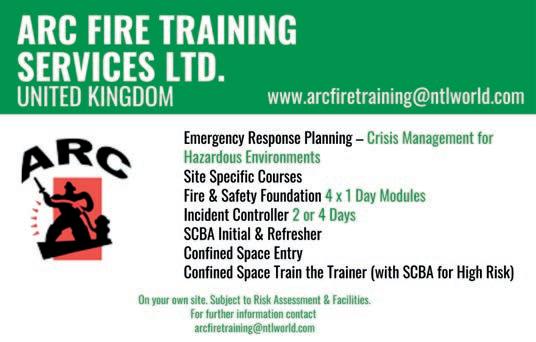
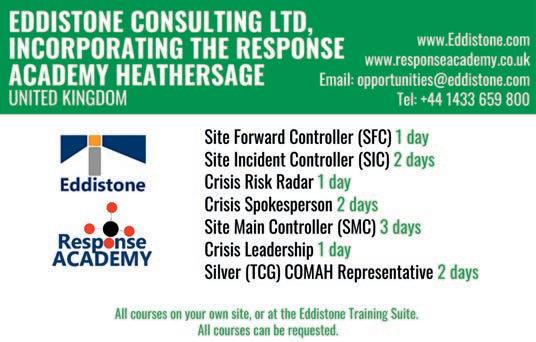
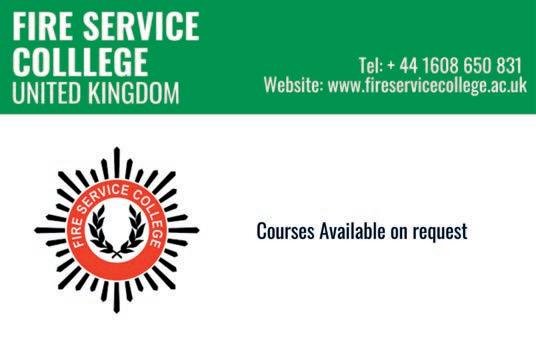
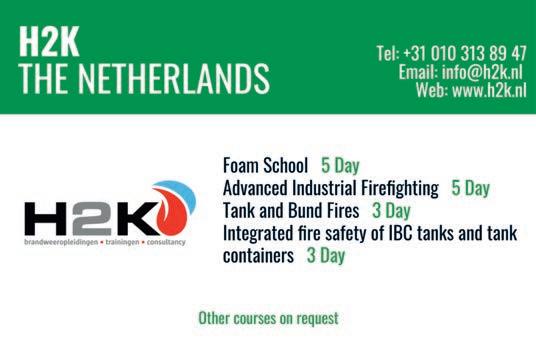
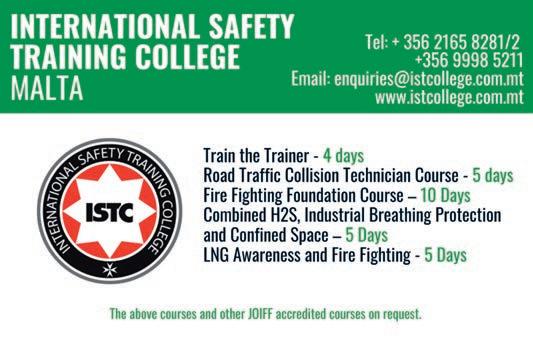
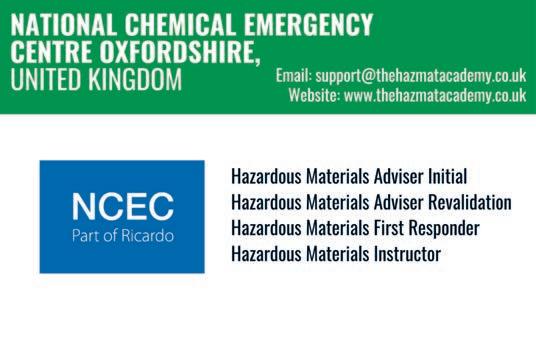
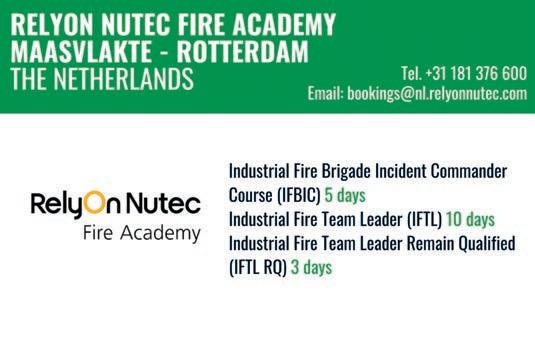

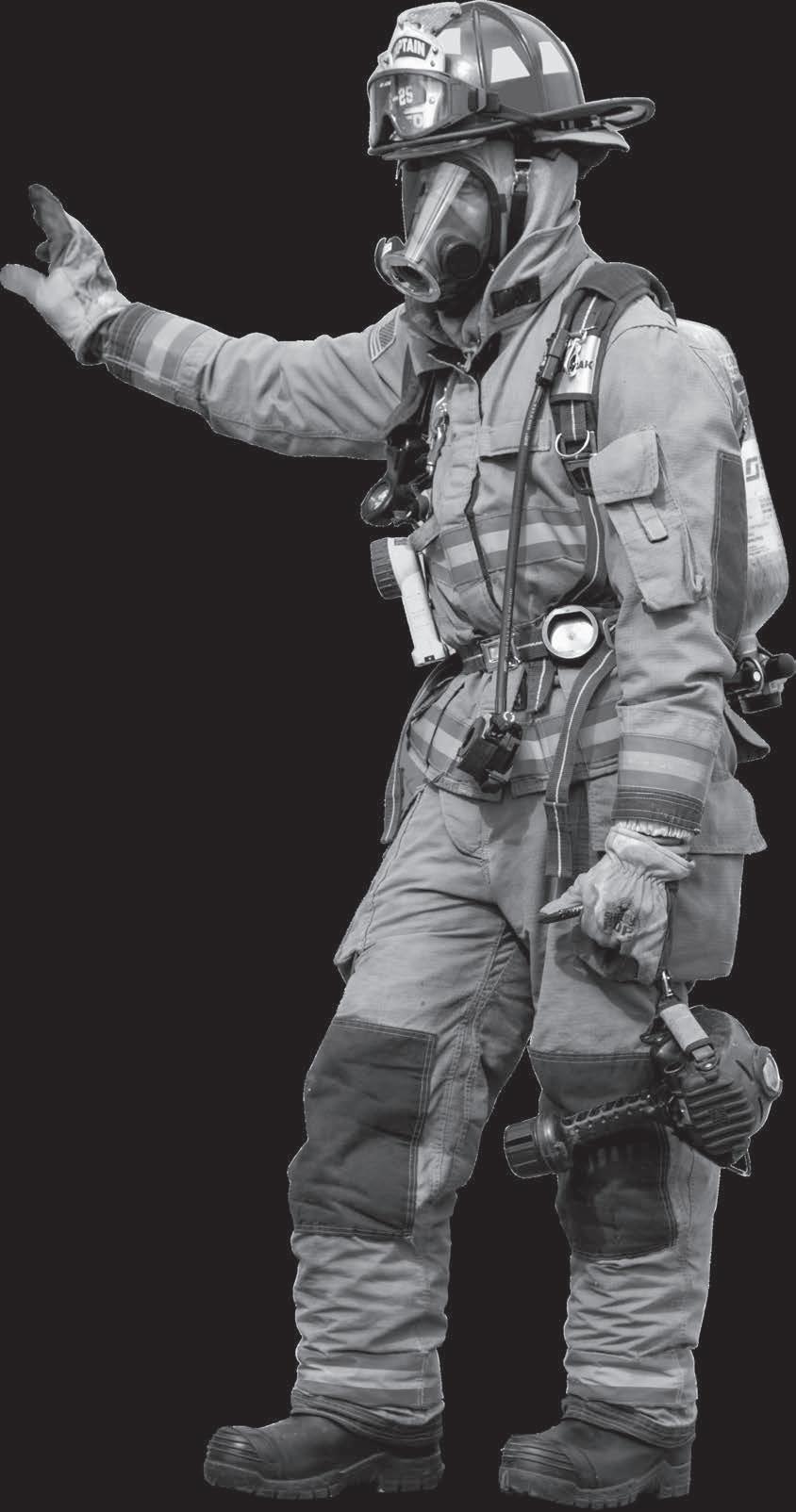


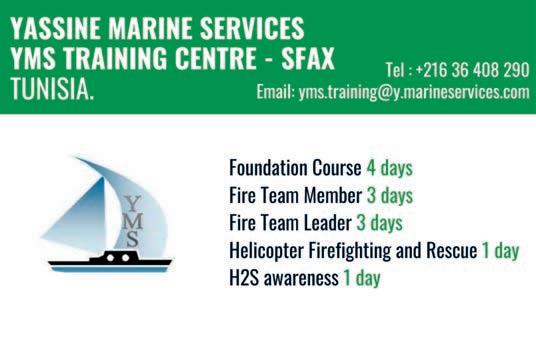









Foam School 2023







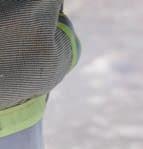
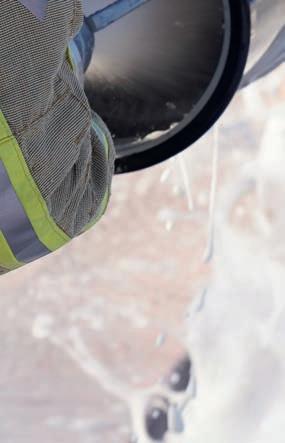

REGISTRATION NOW OPEN

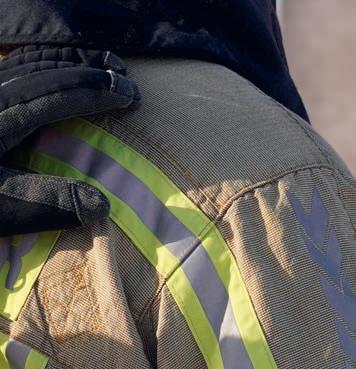
• March 13 – 17, 2023

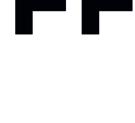




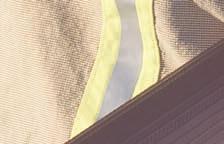



















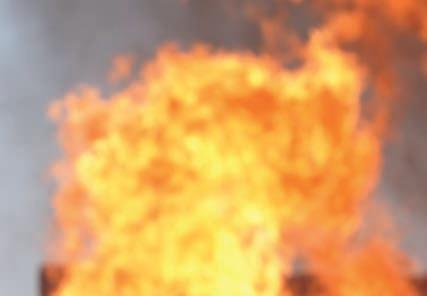
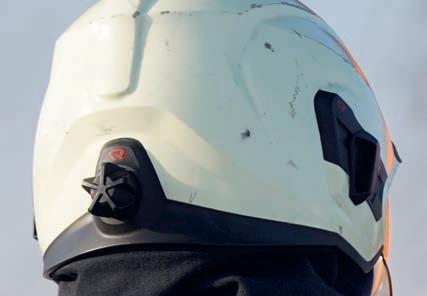
• Vernon – France
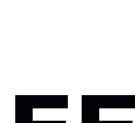

• Theory, legislation, lessons learned and best practices
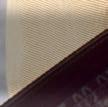
• Workshops, demonstrations and practical firefighting



